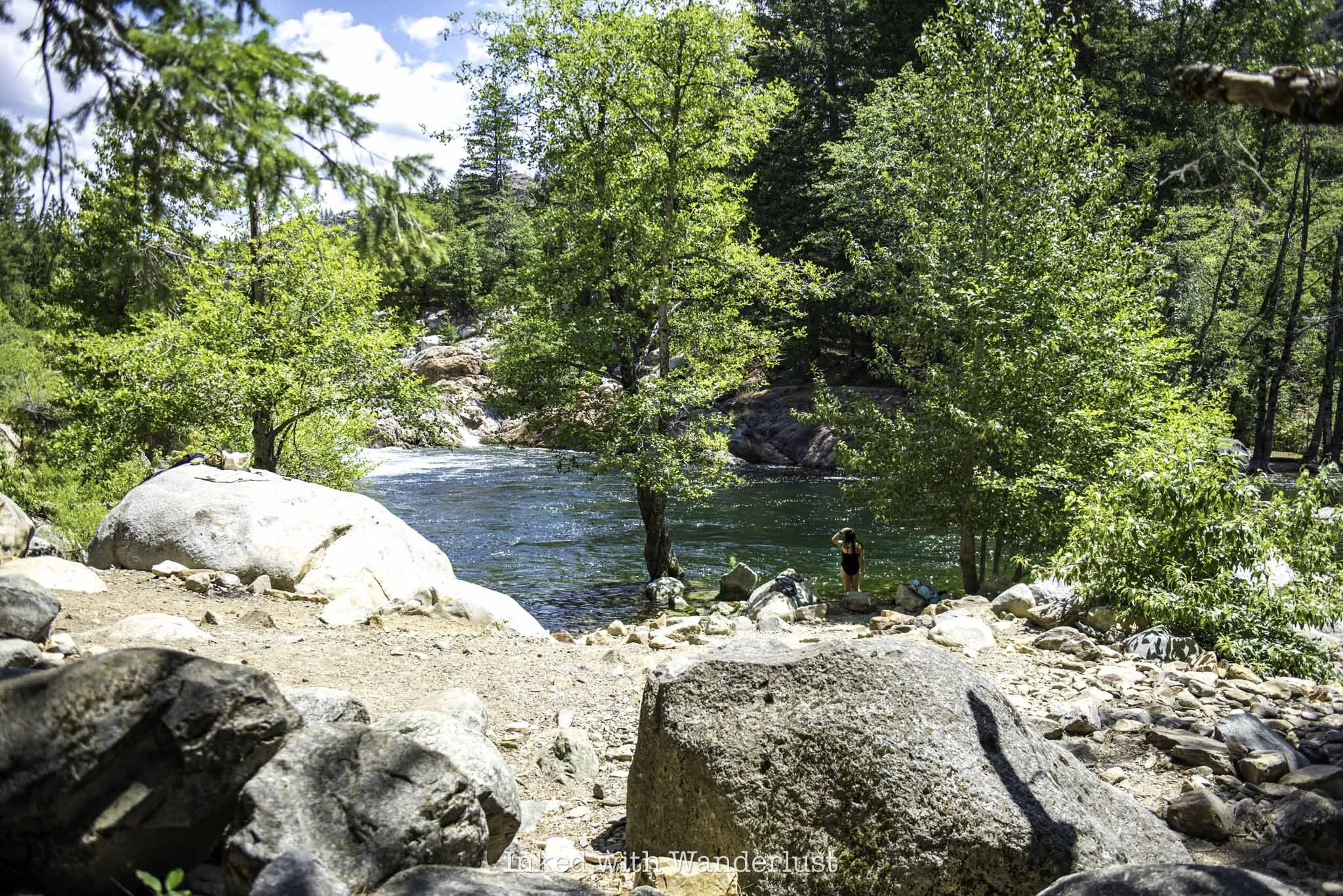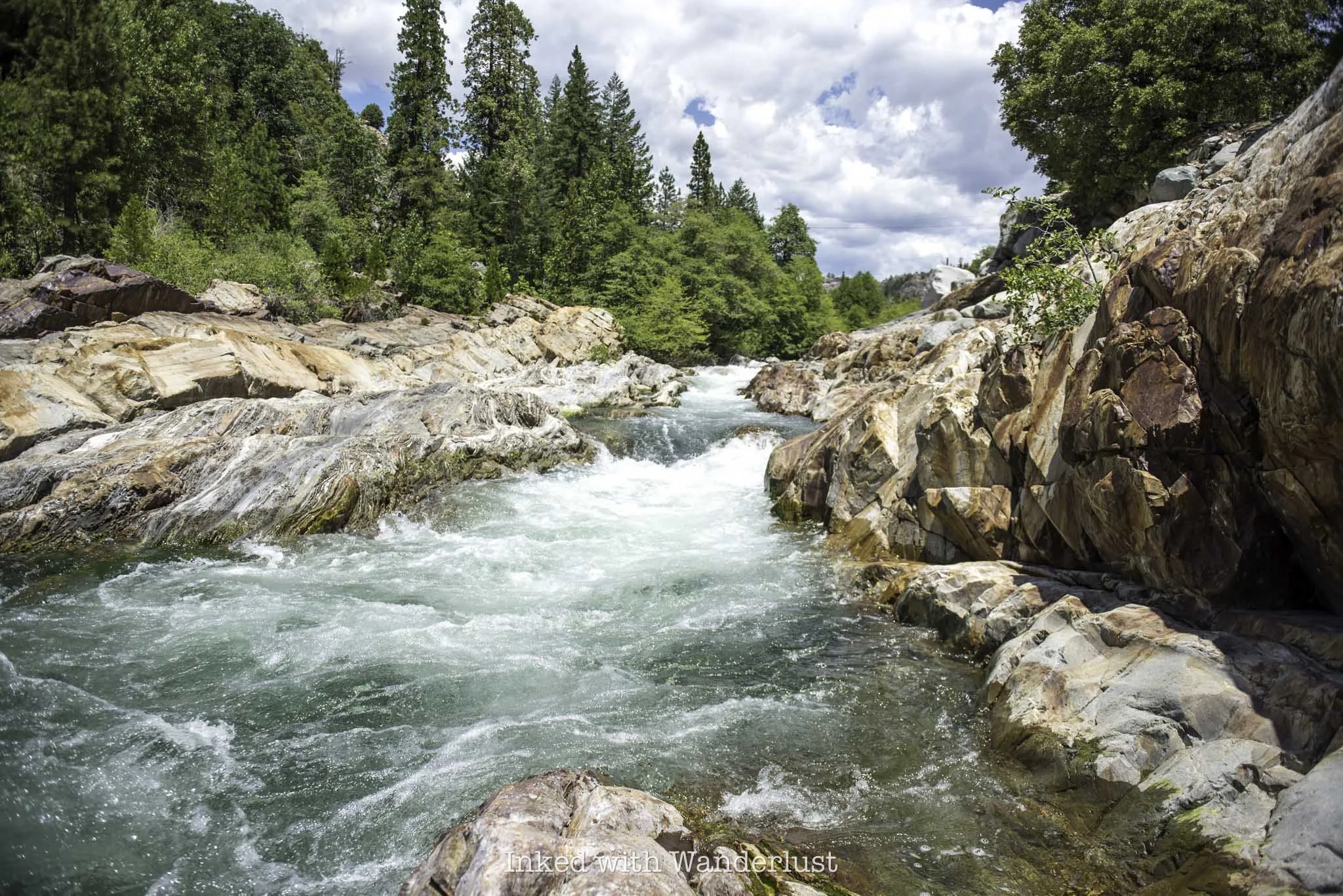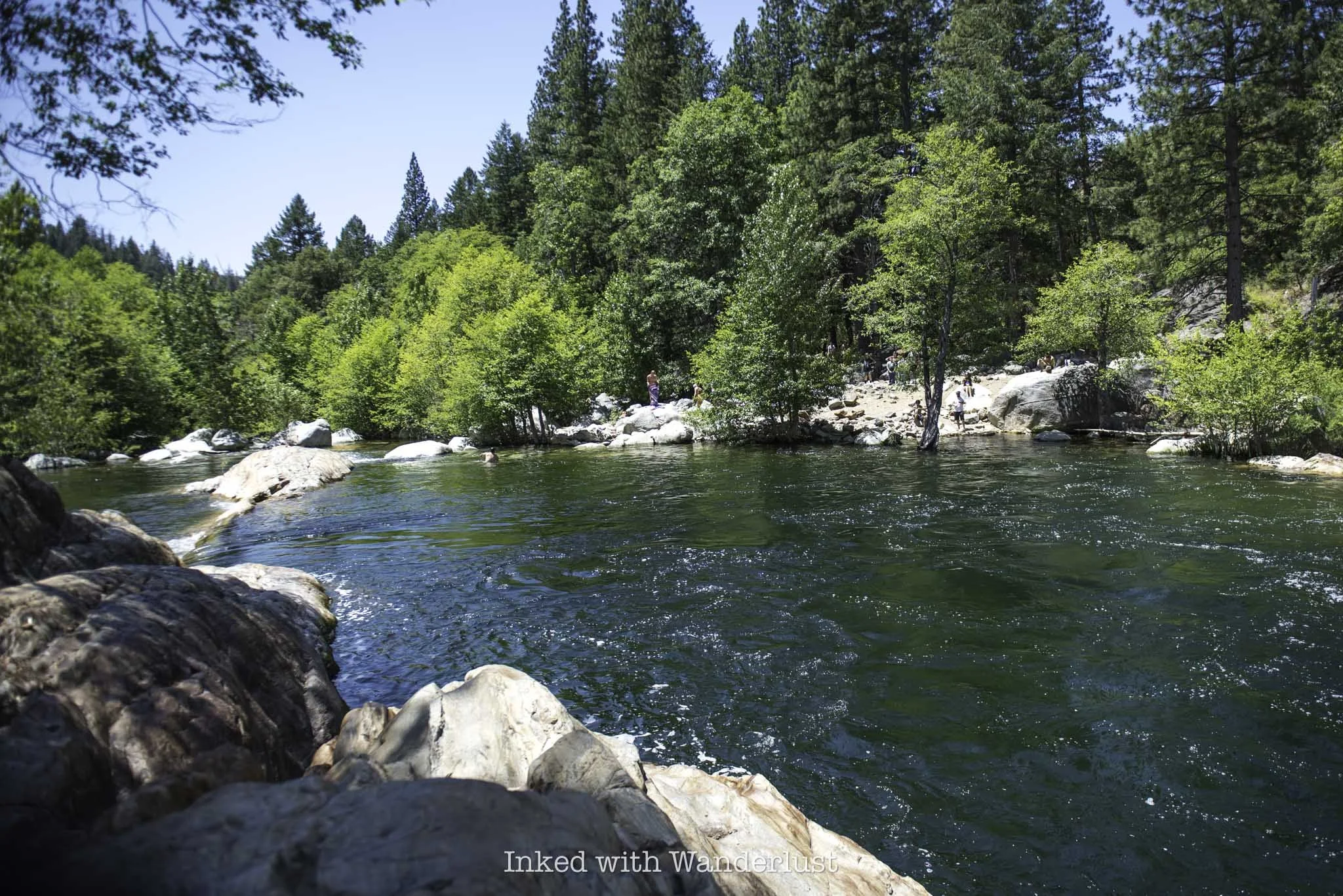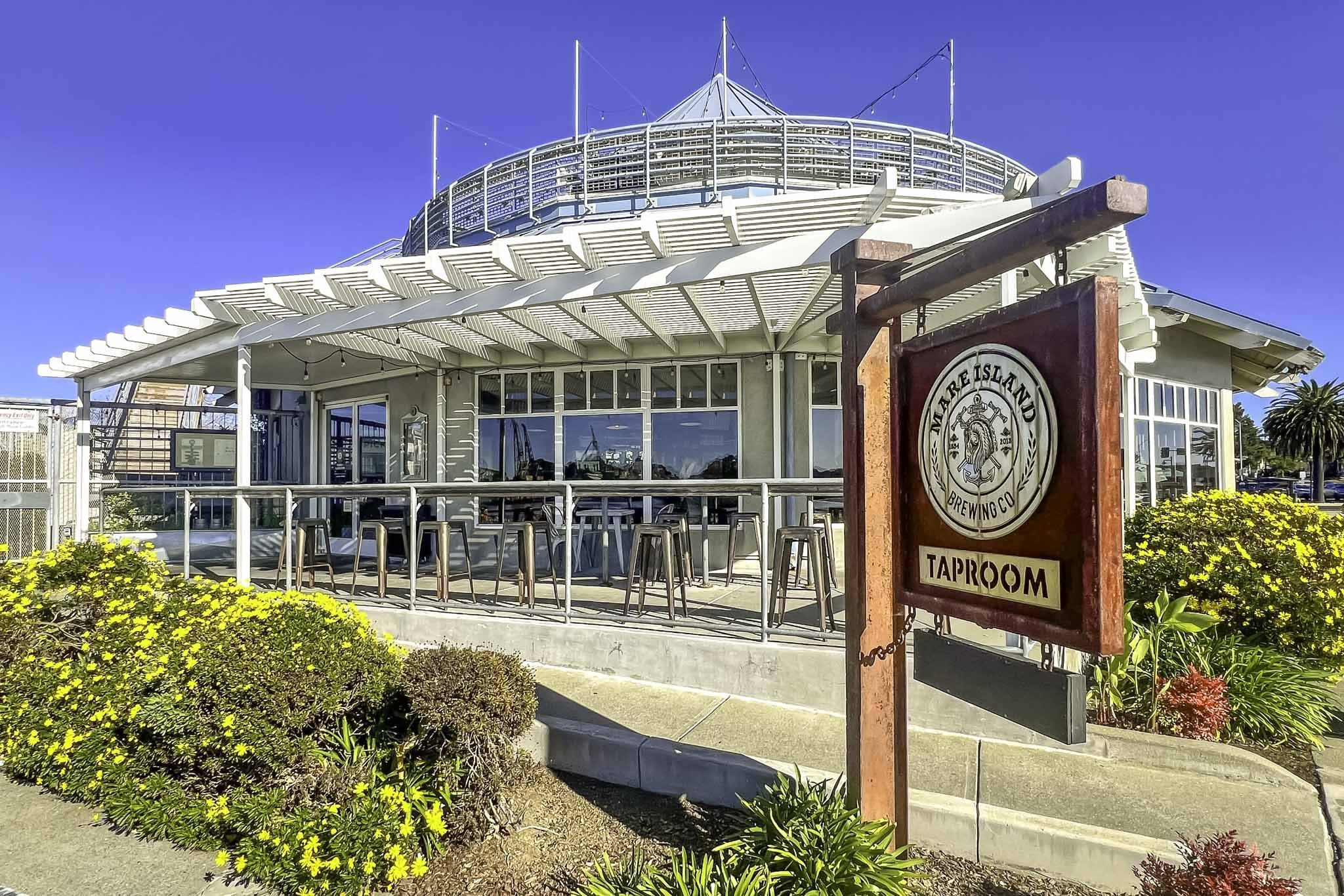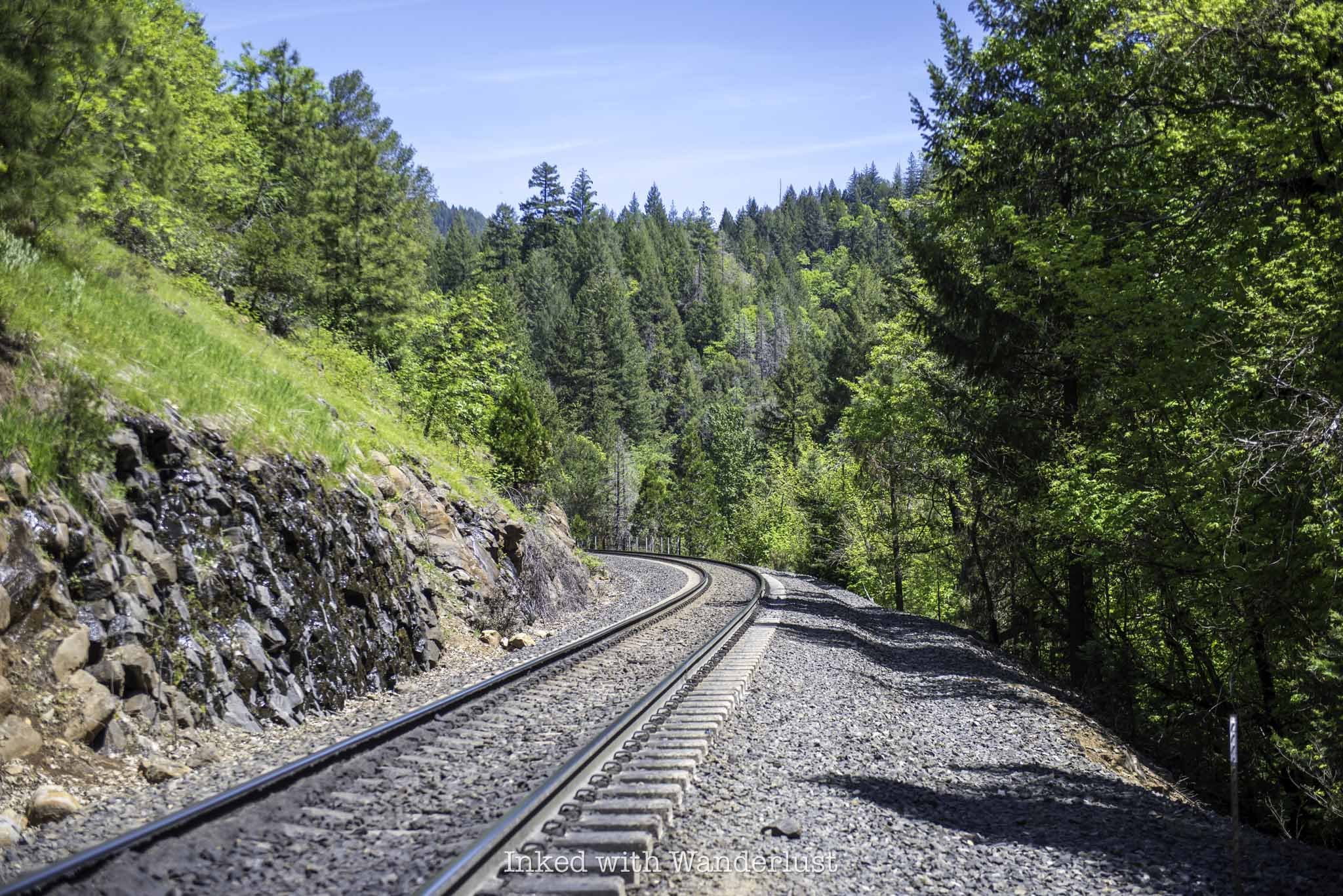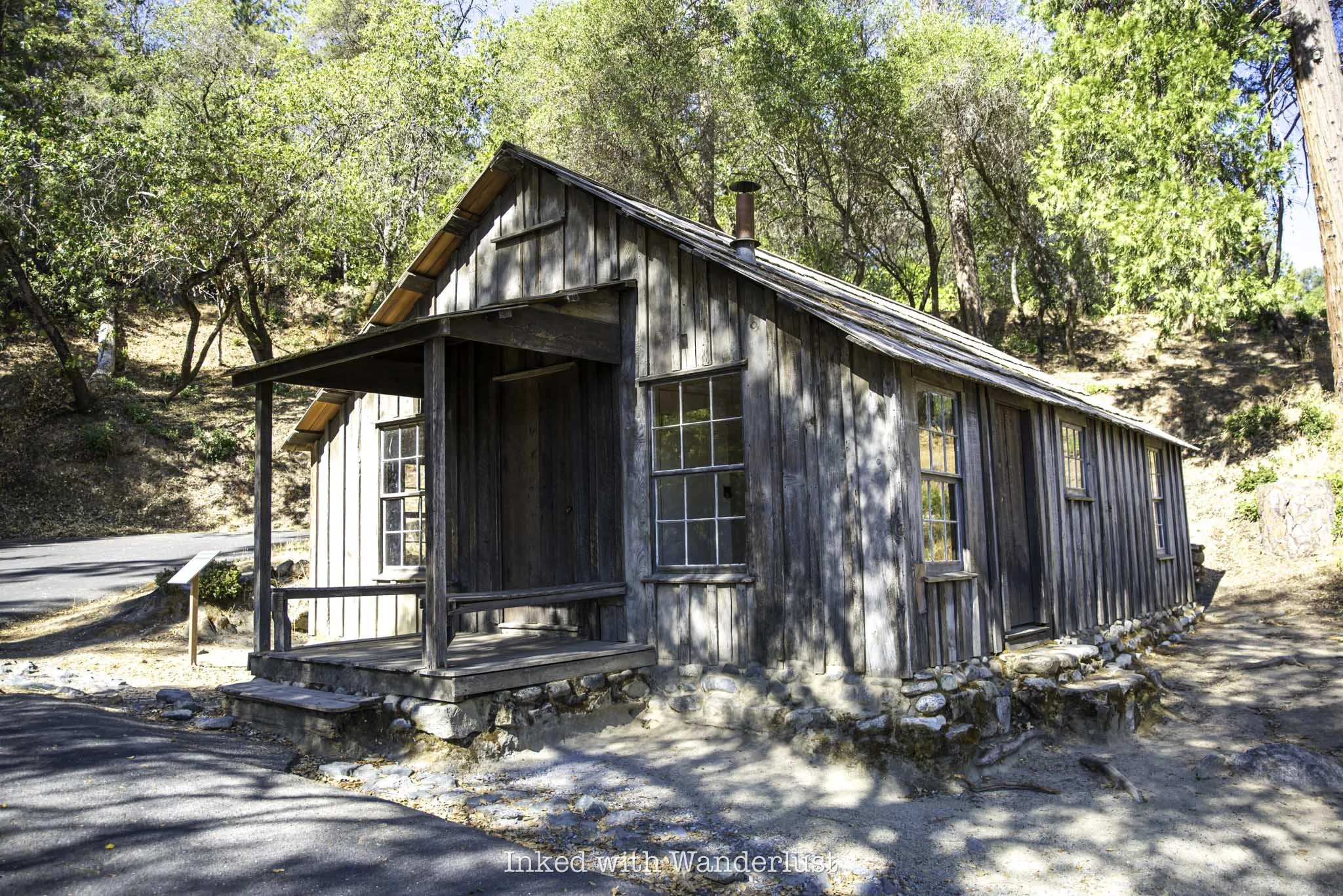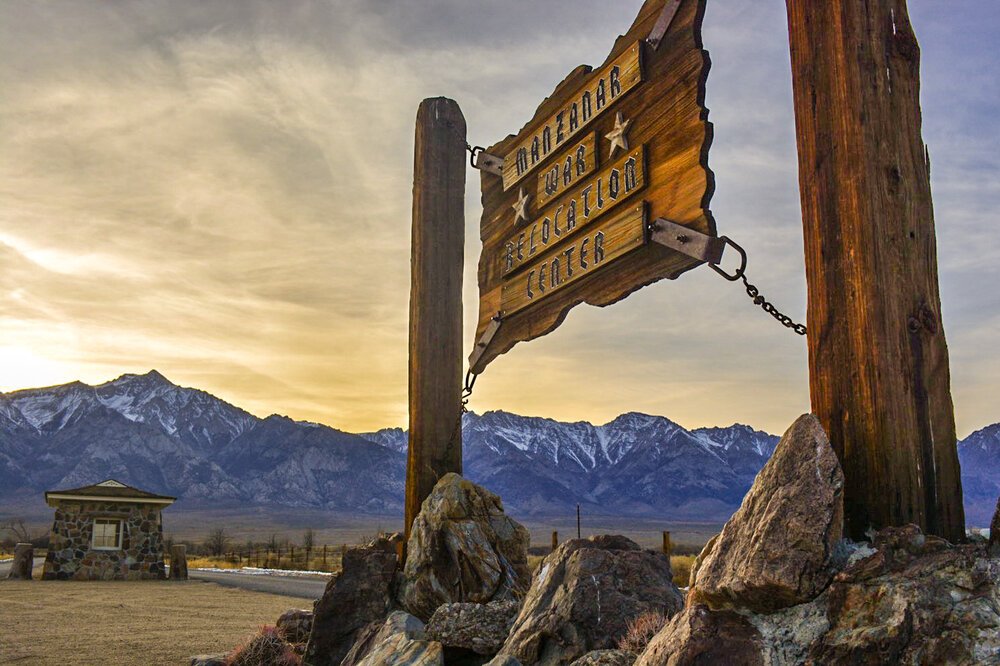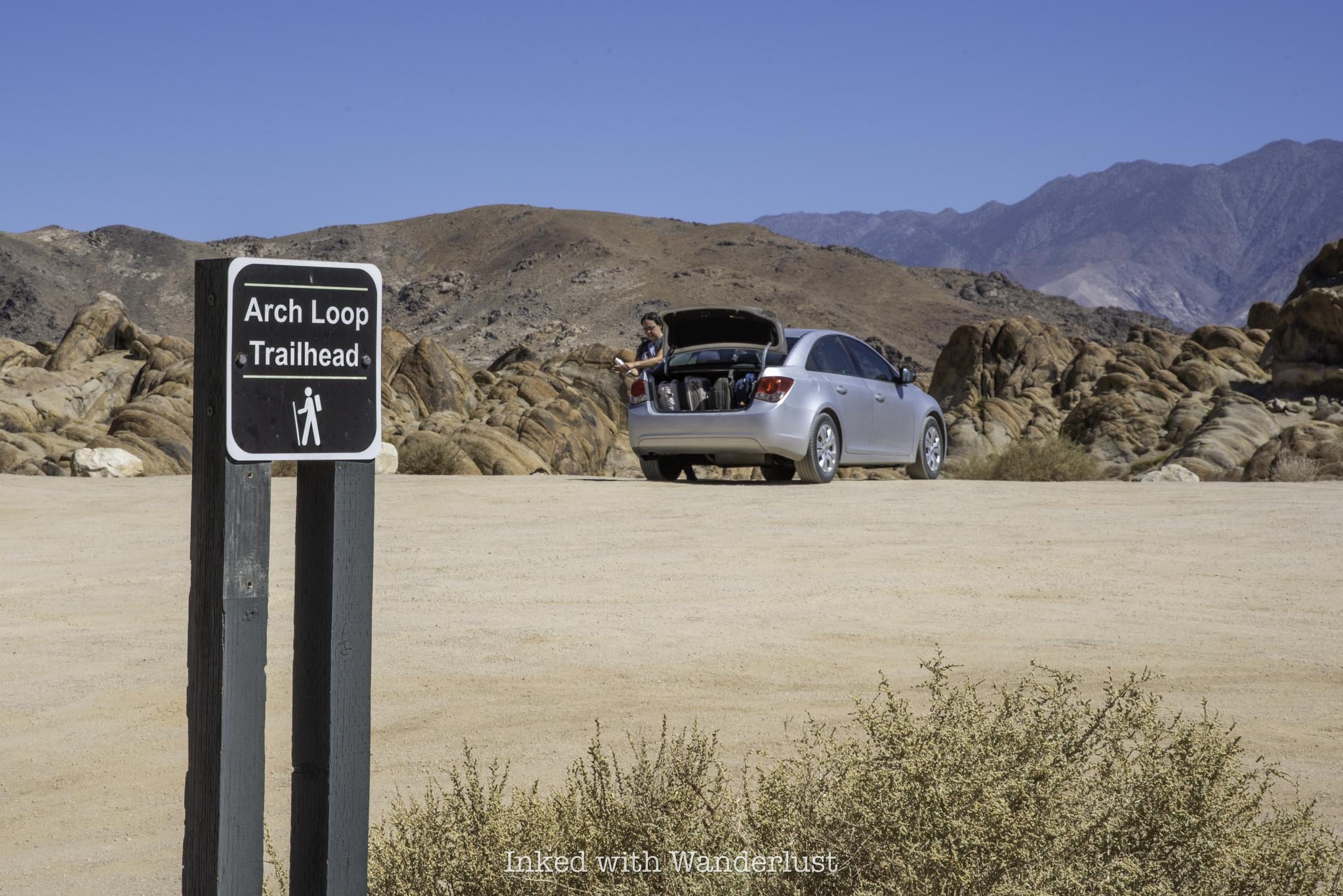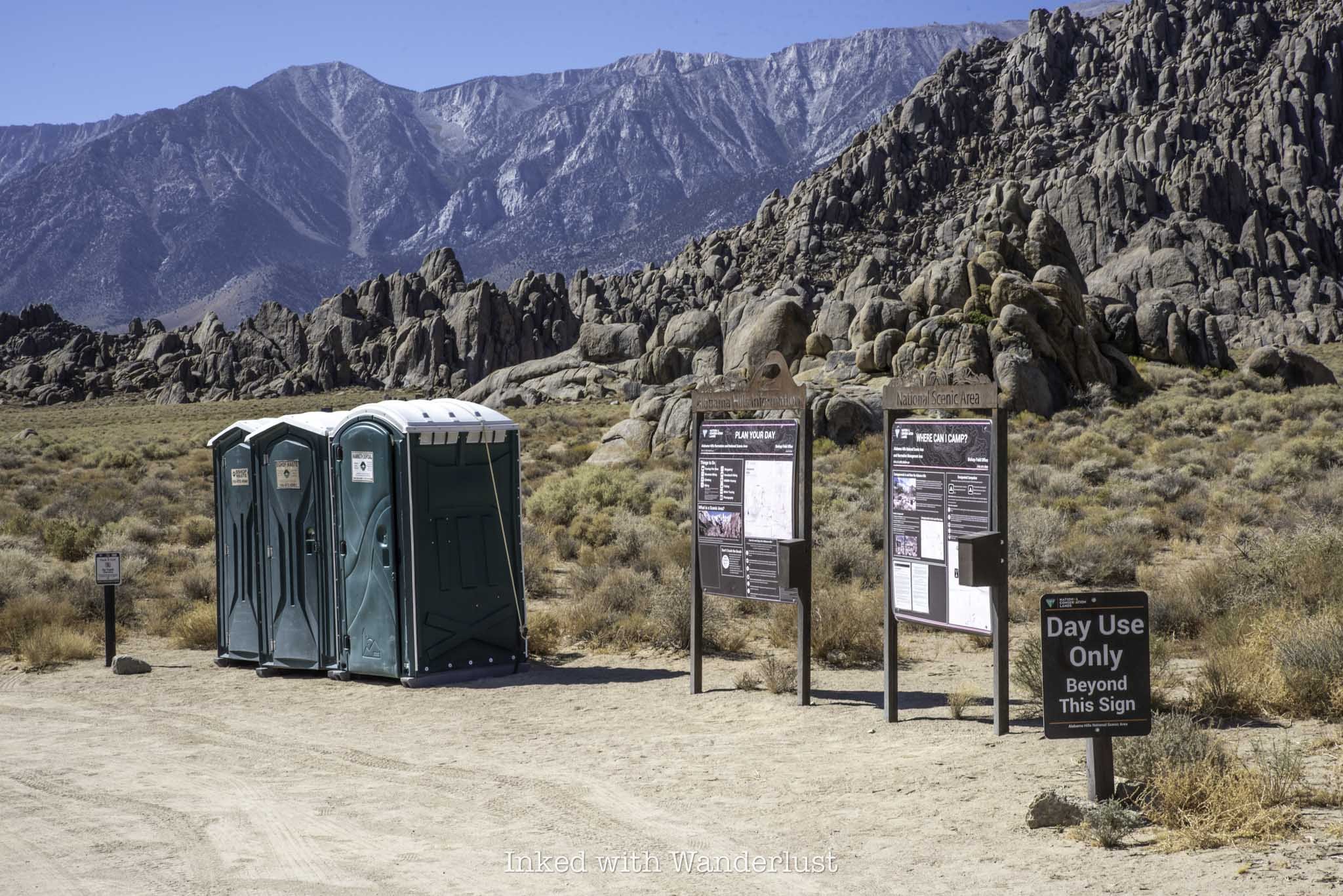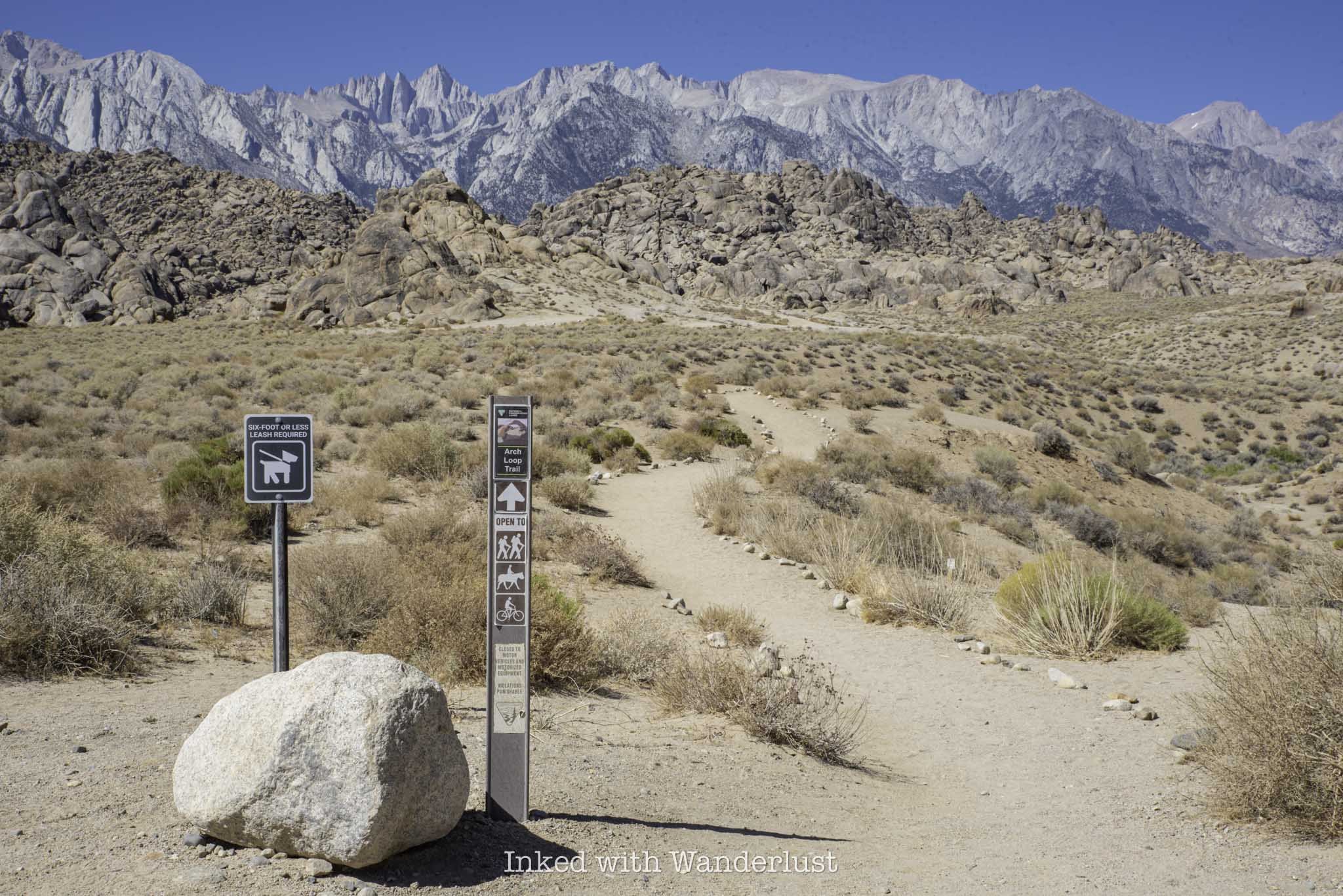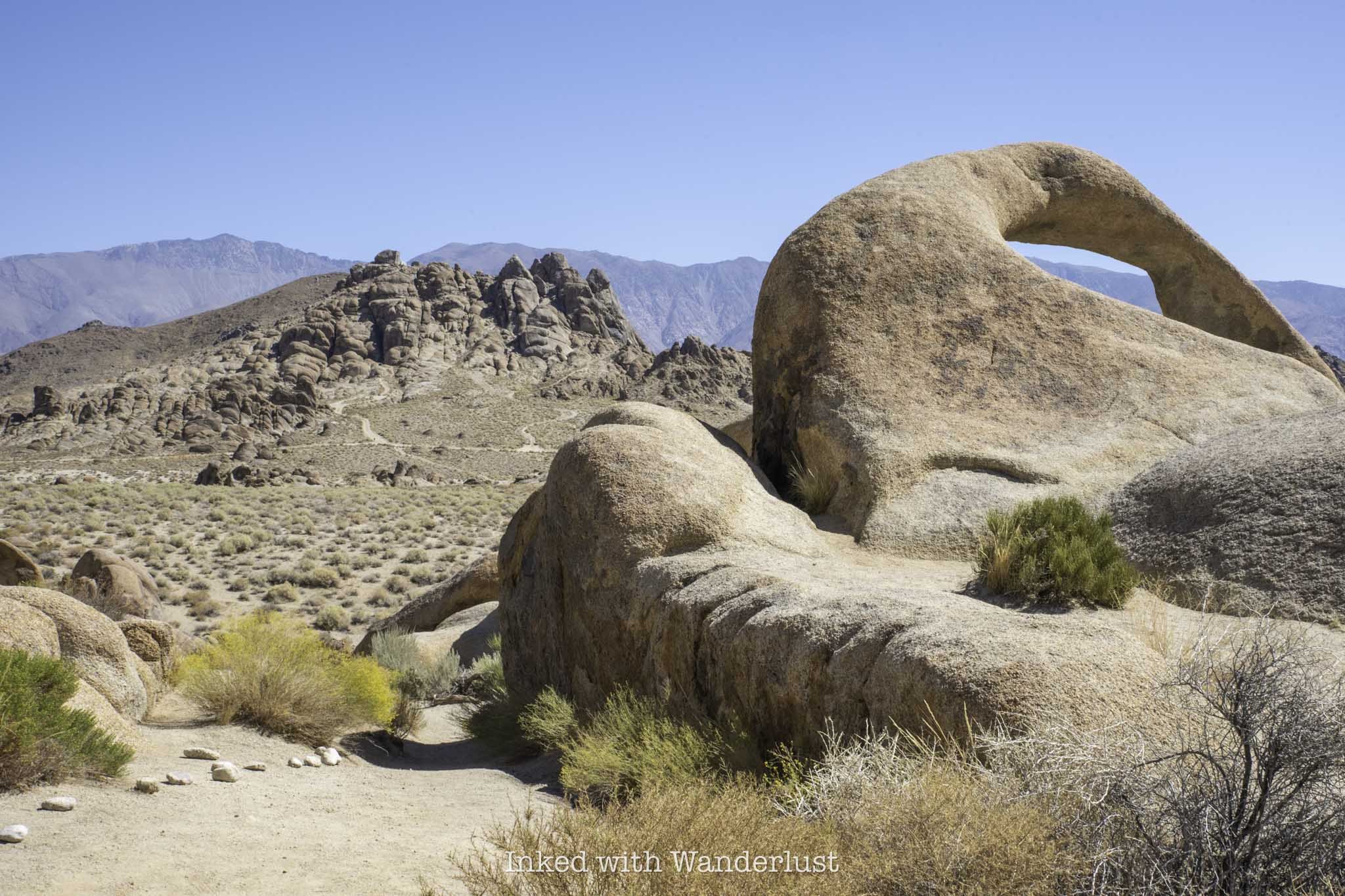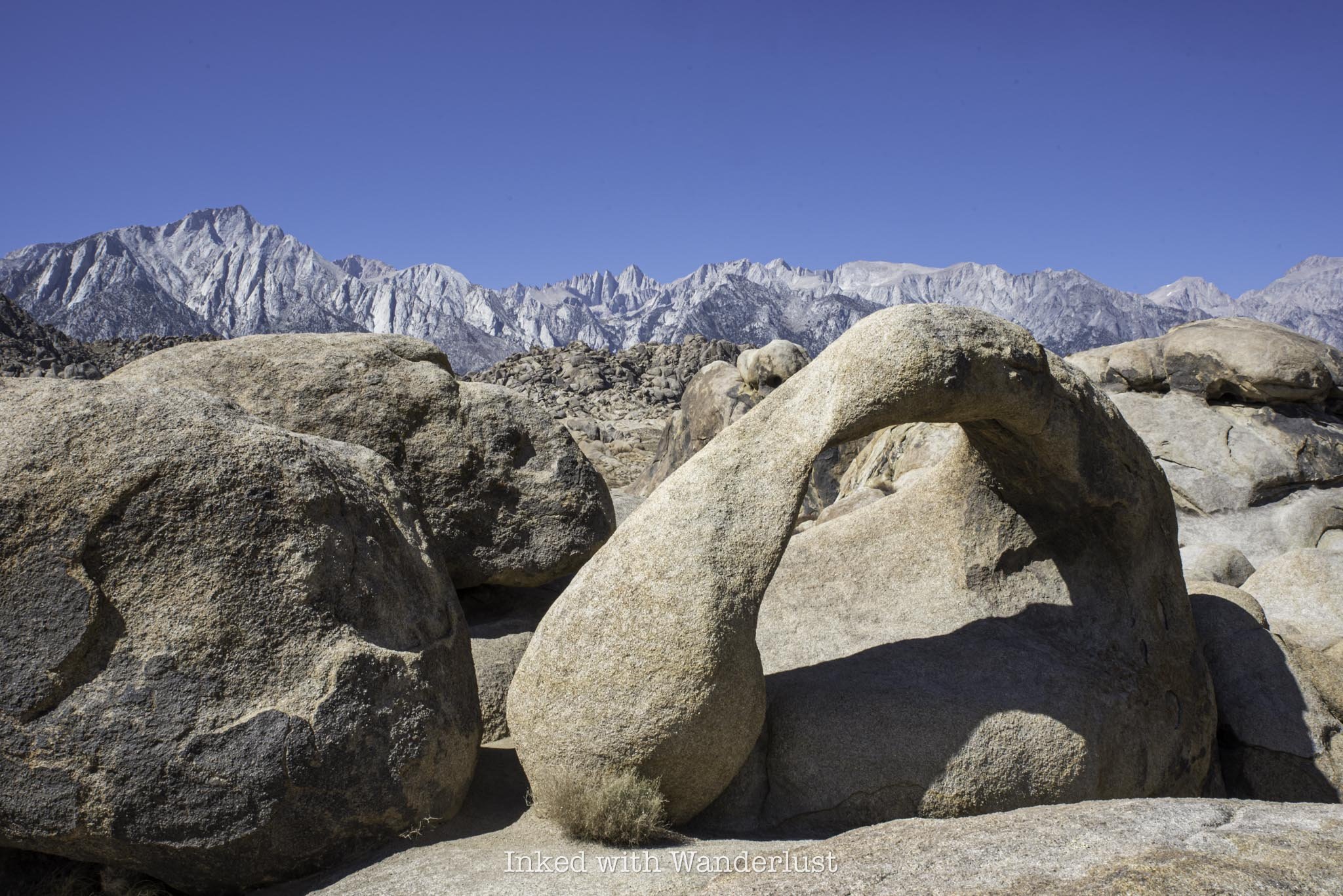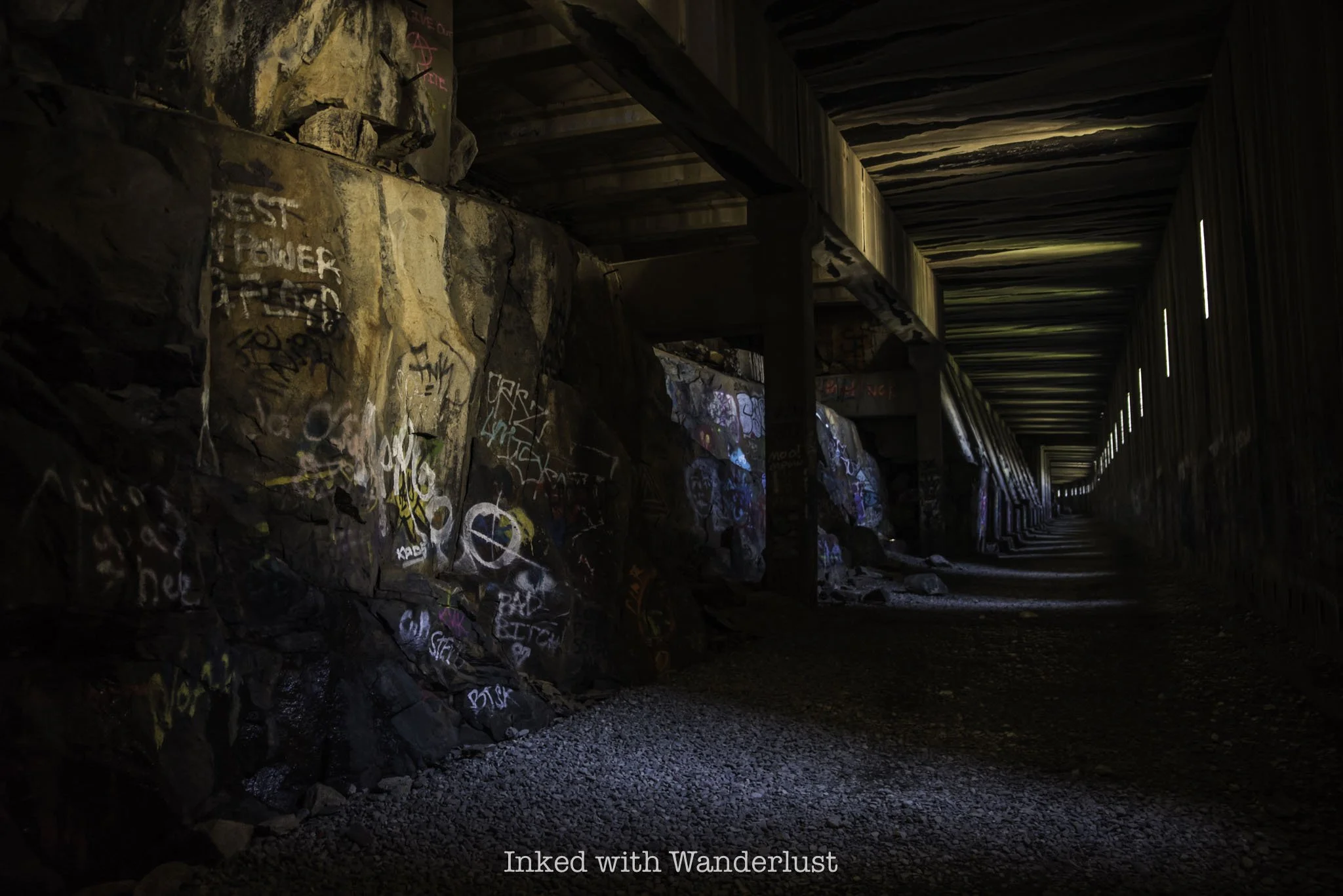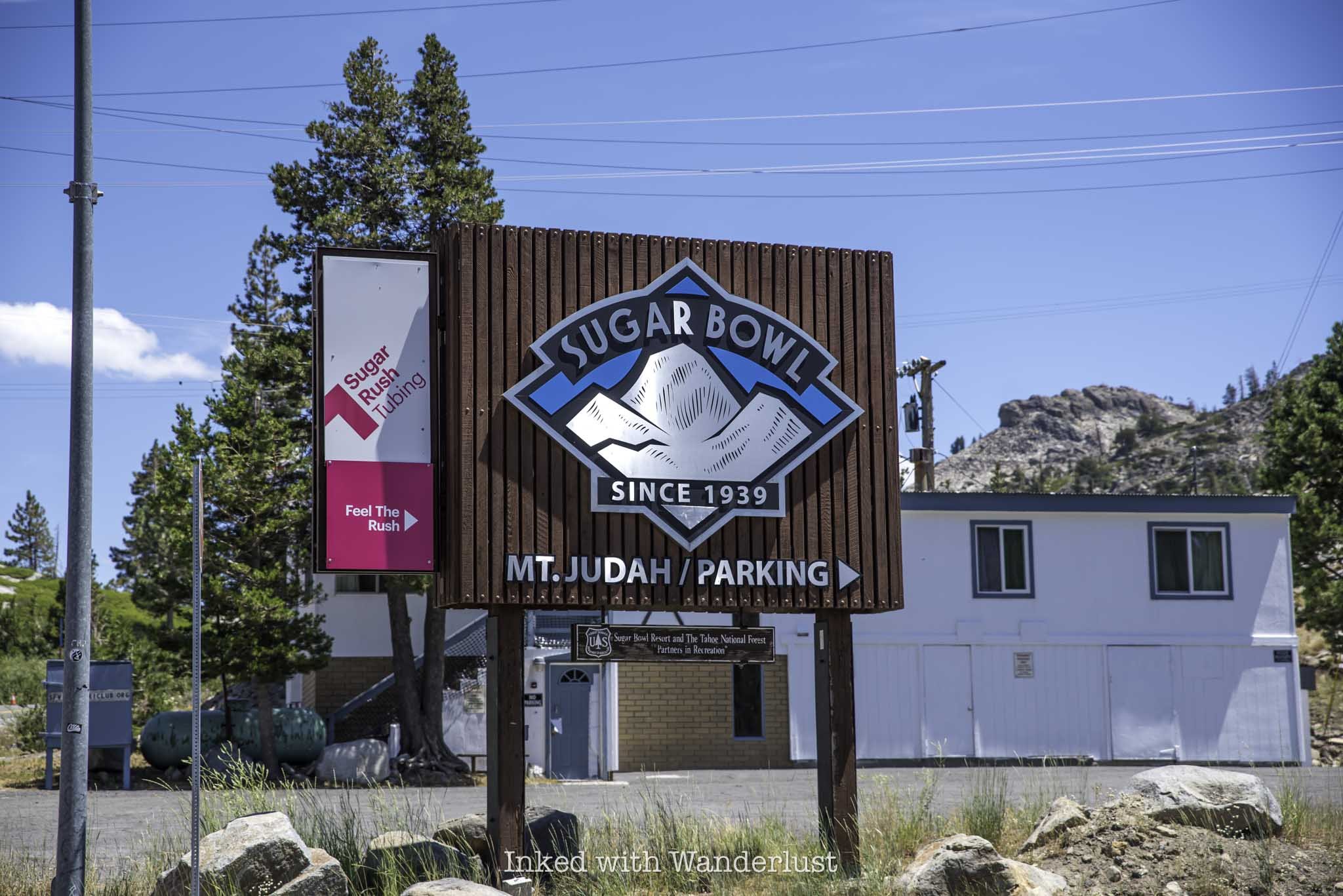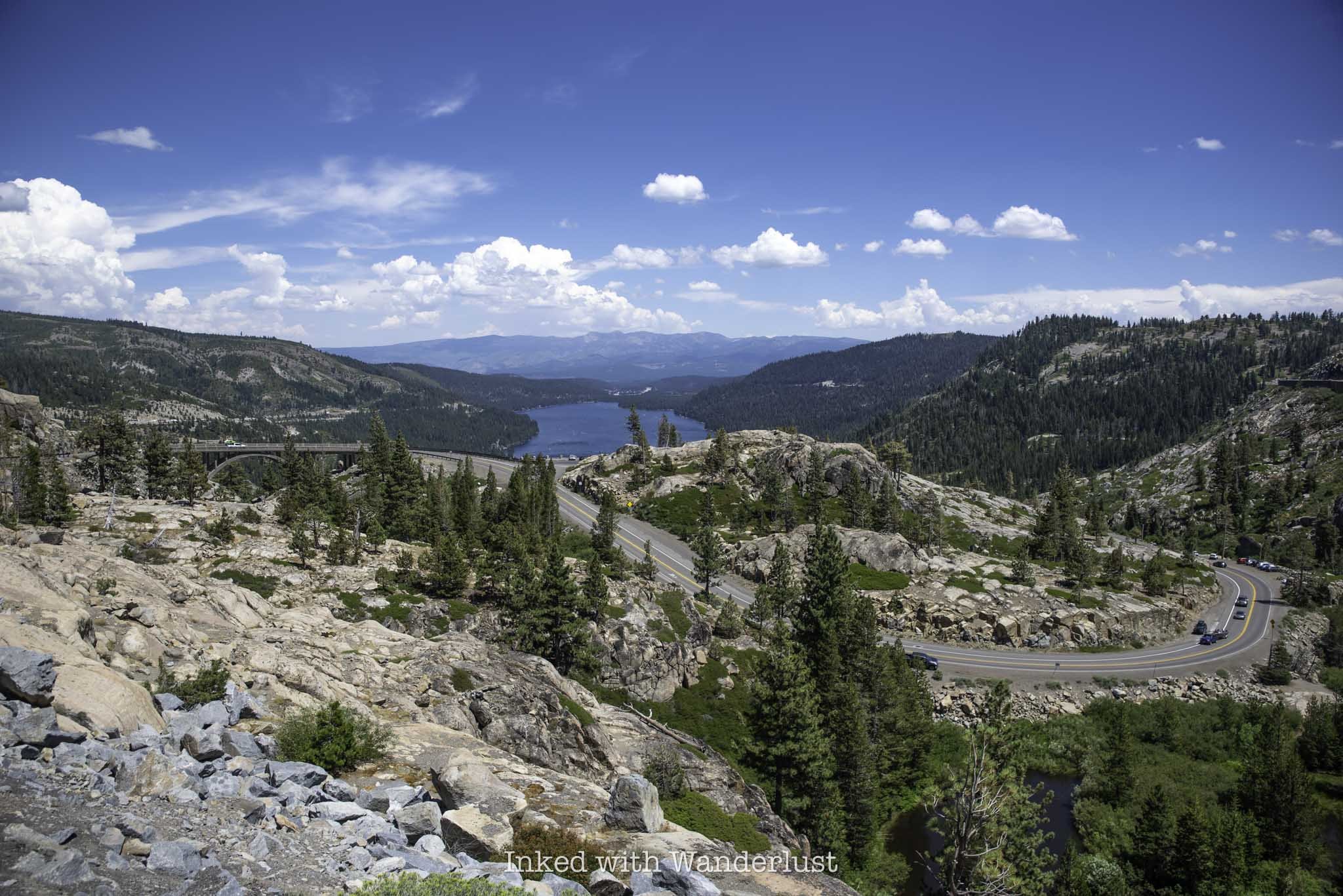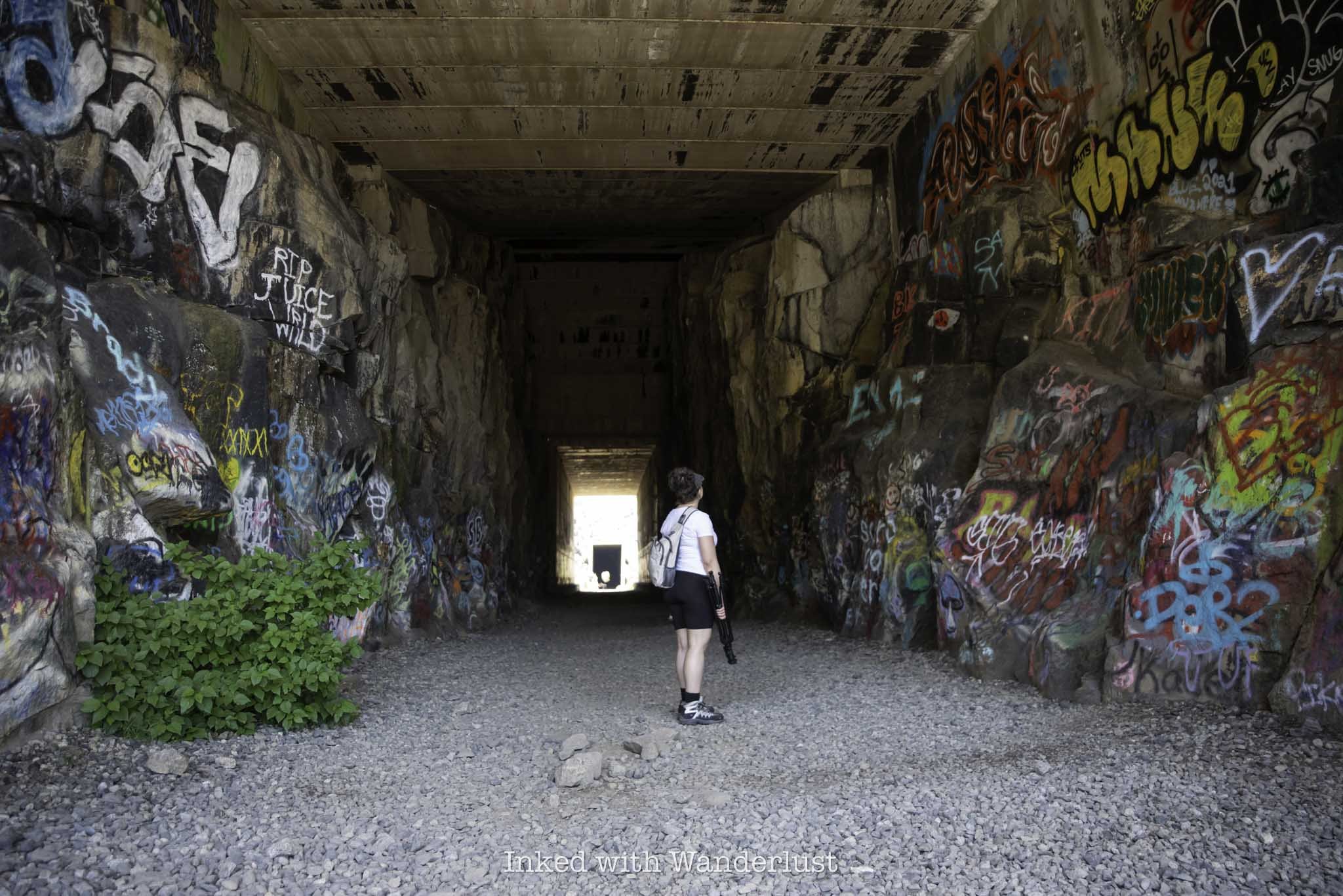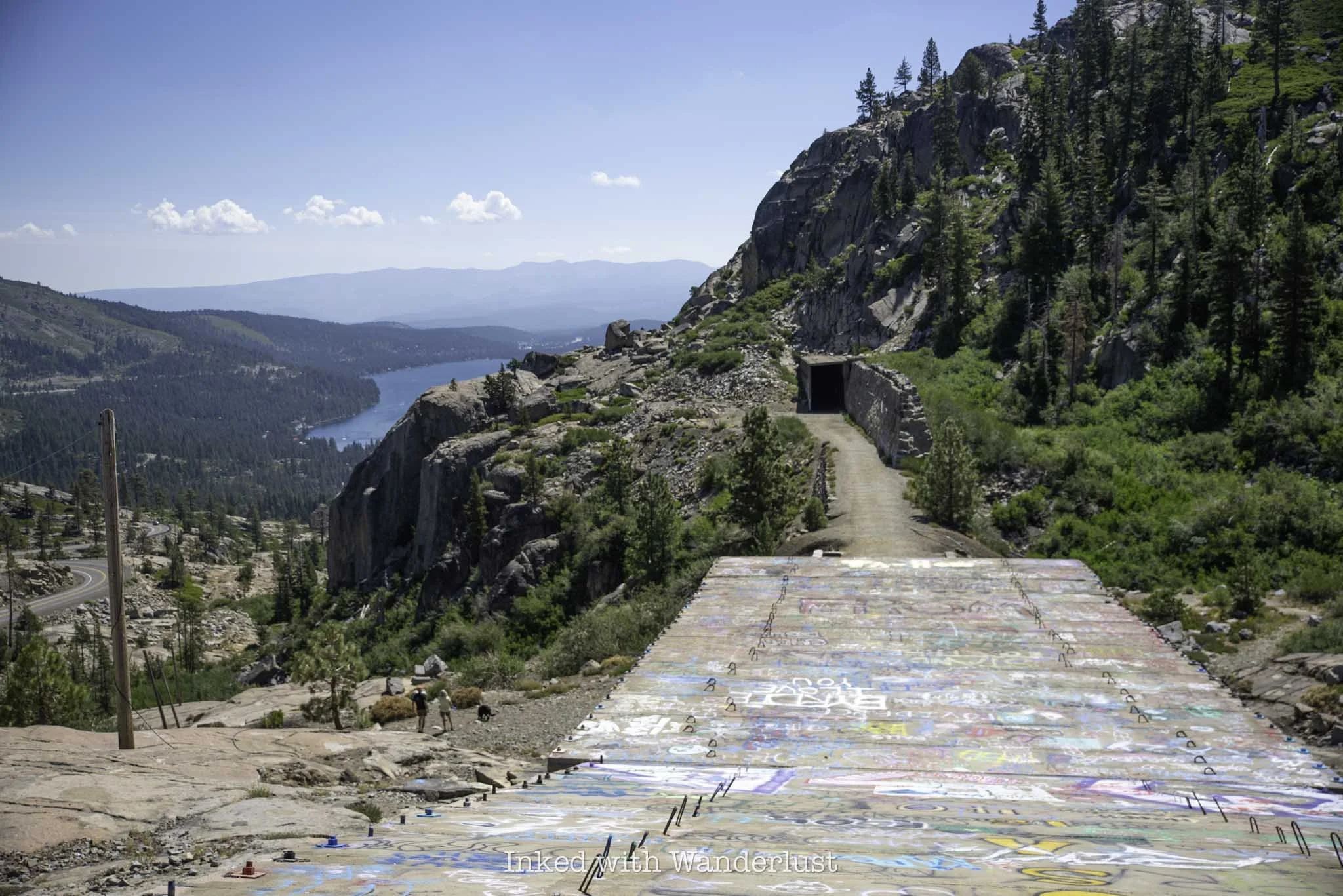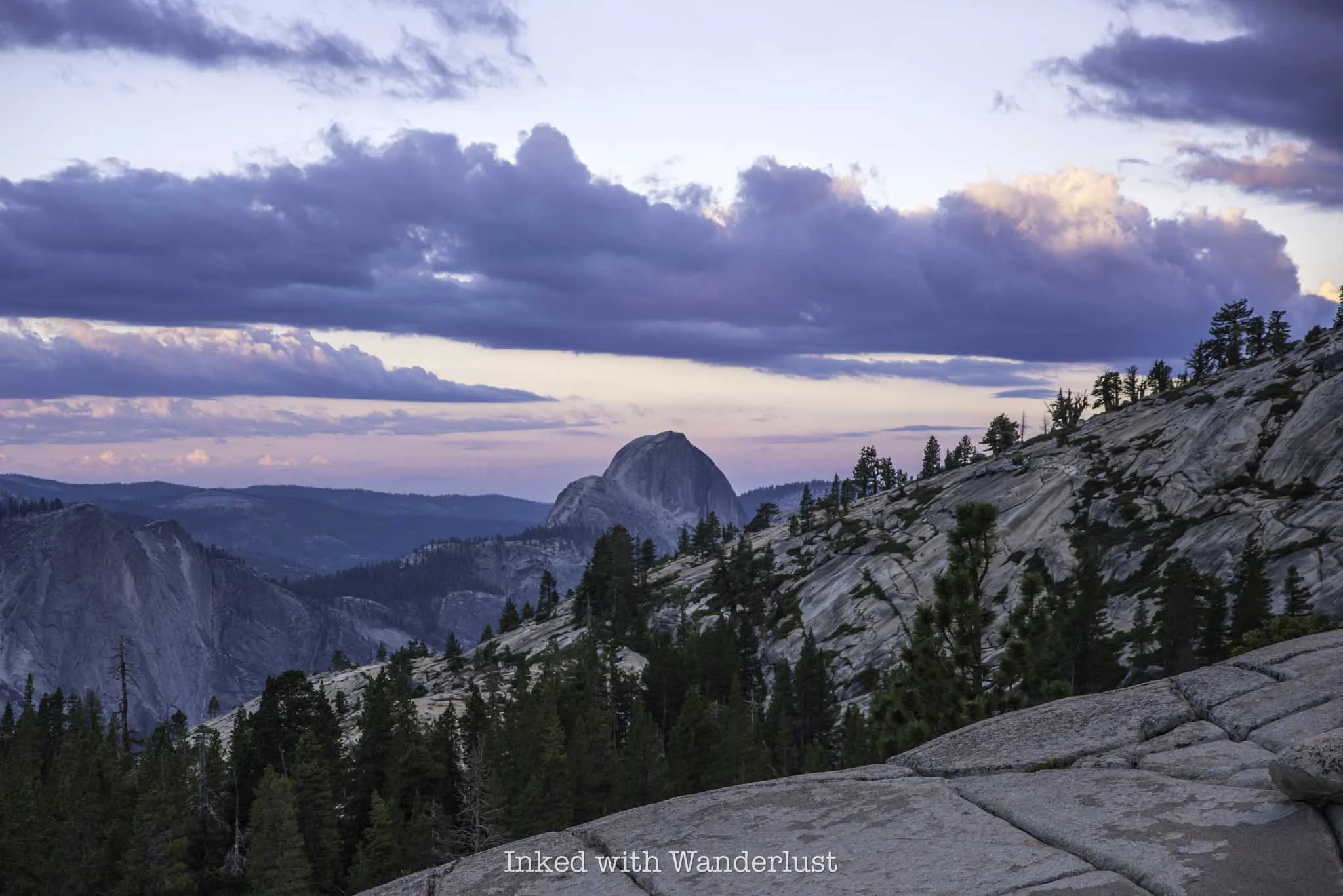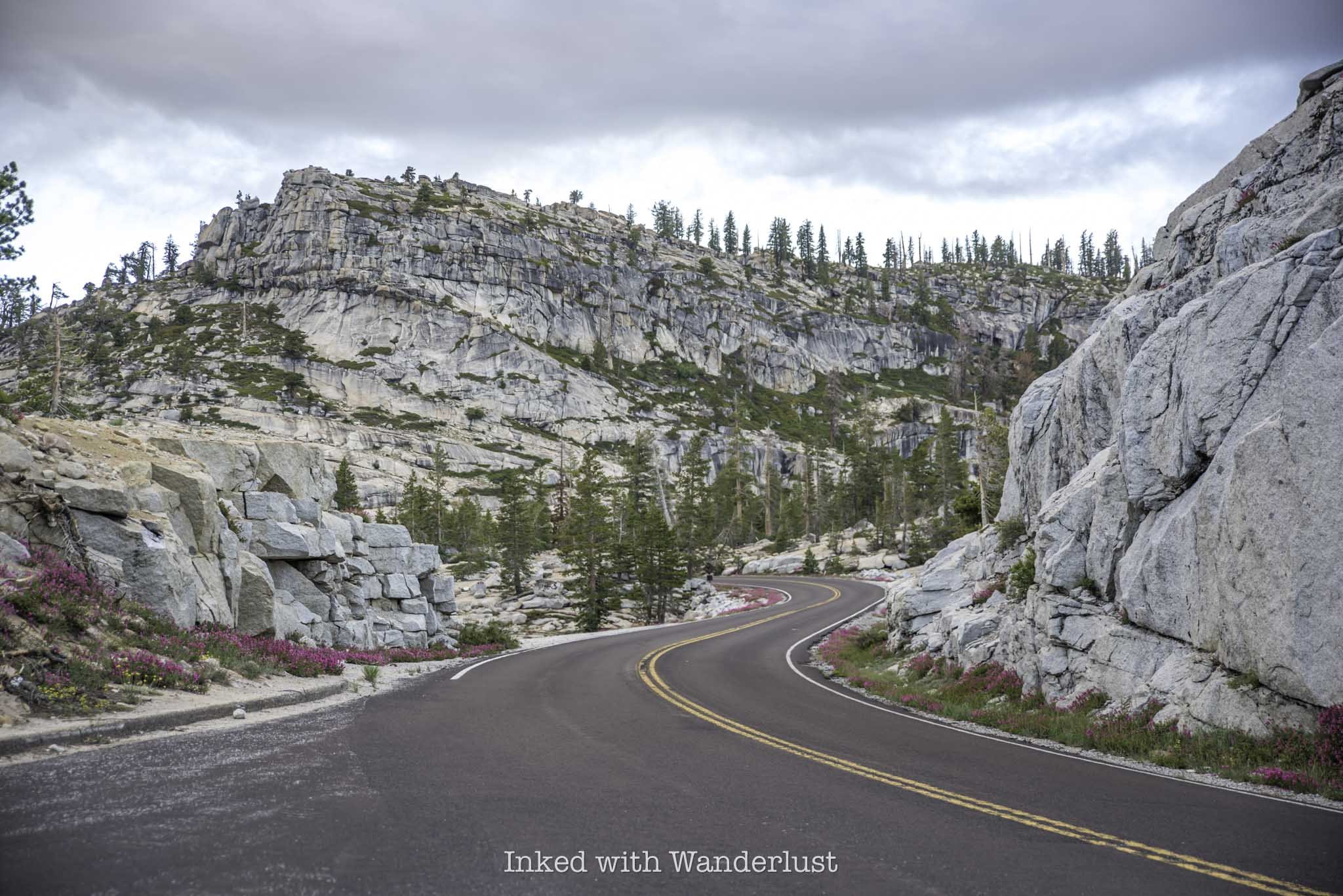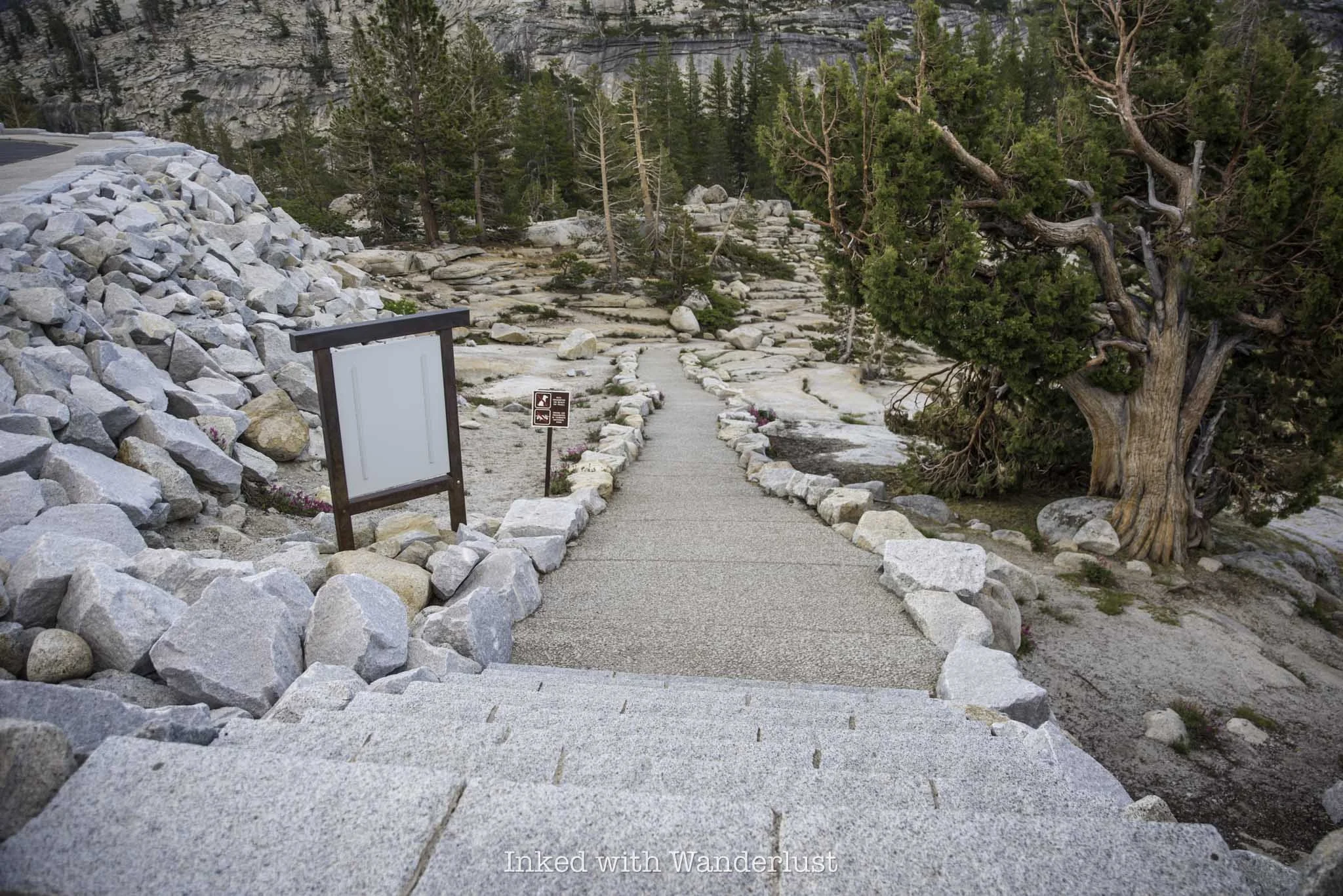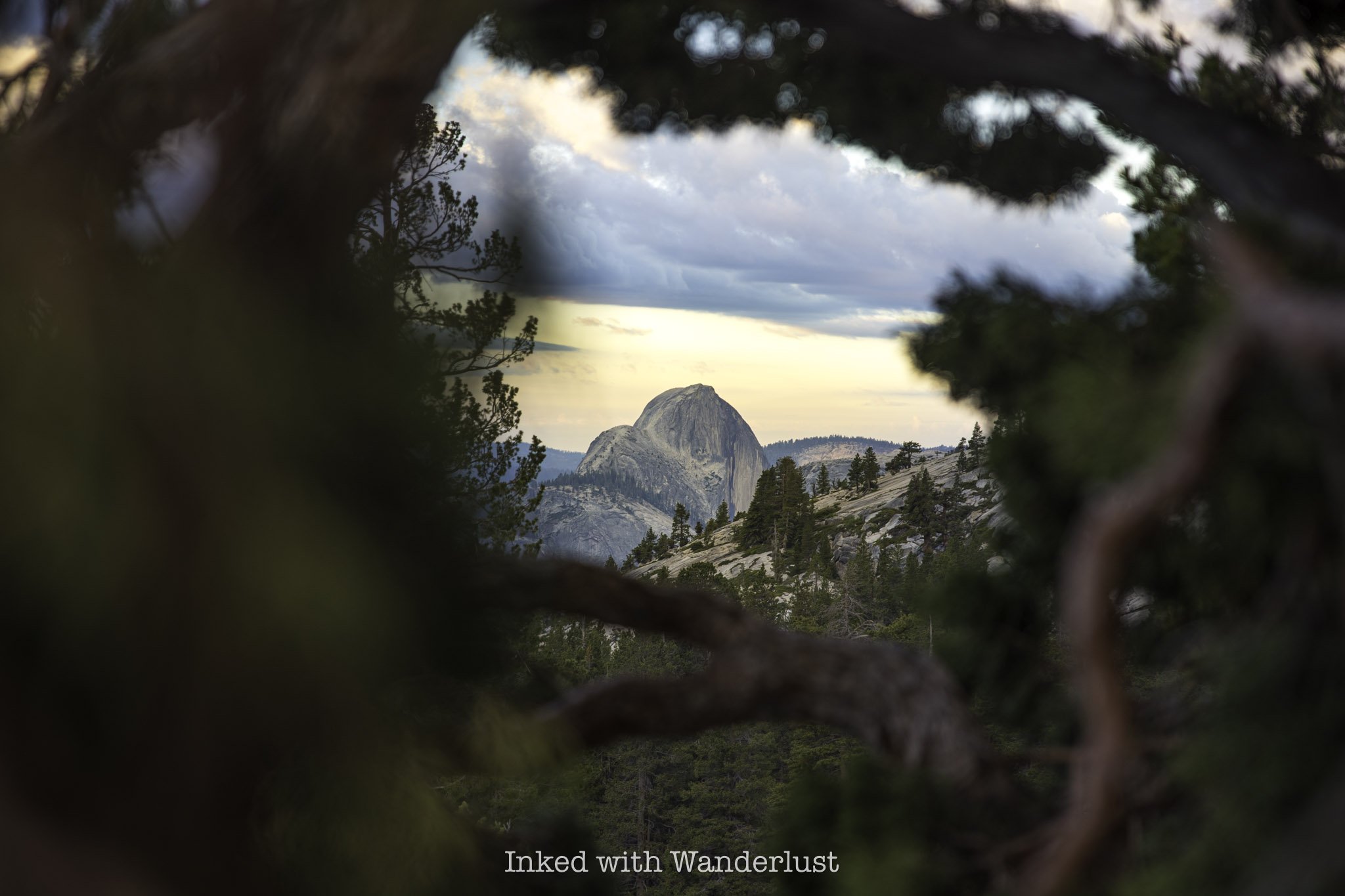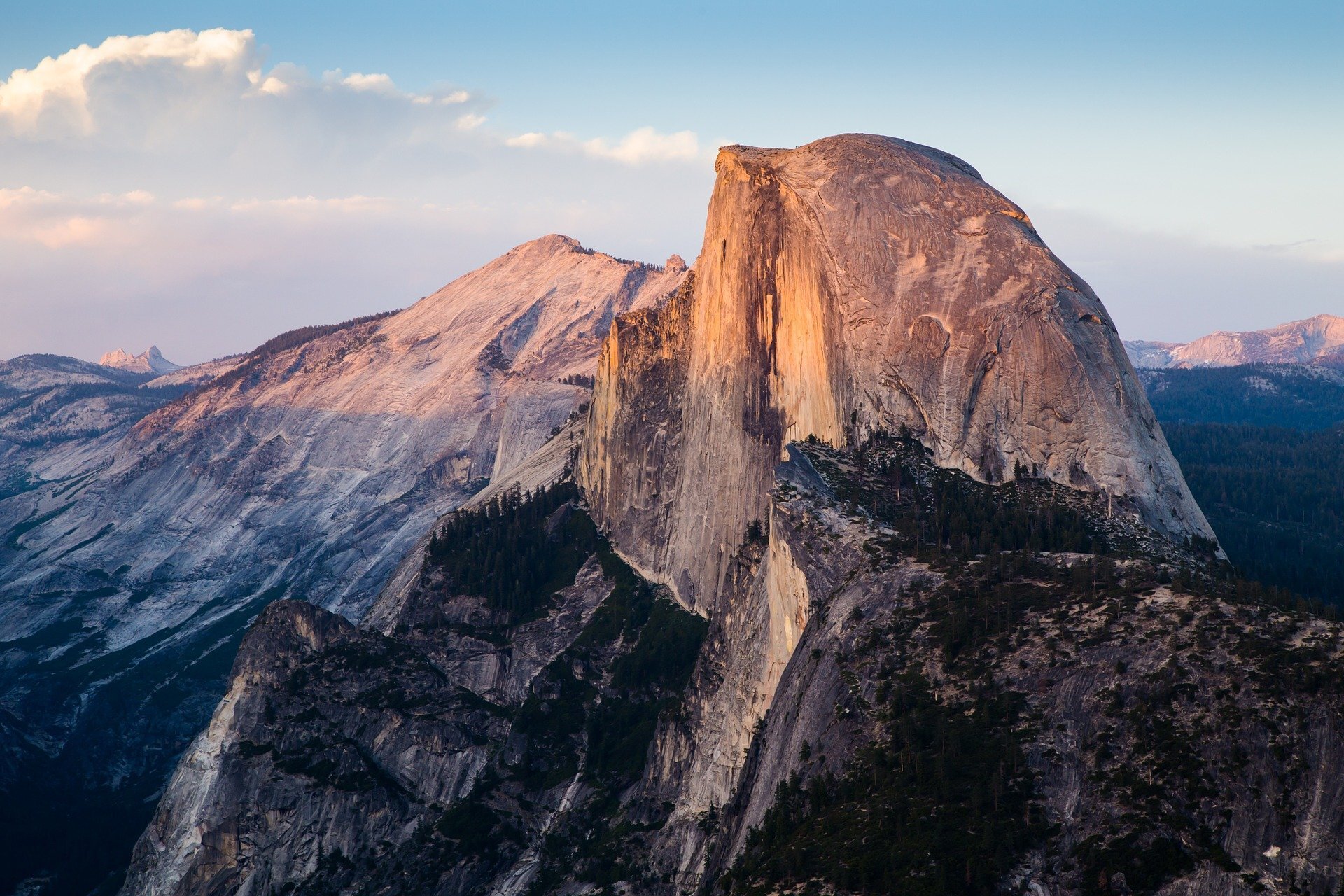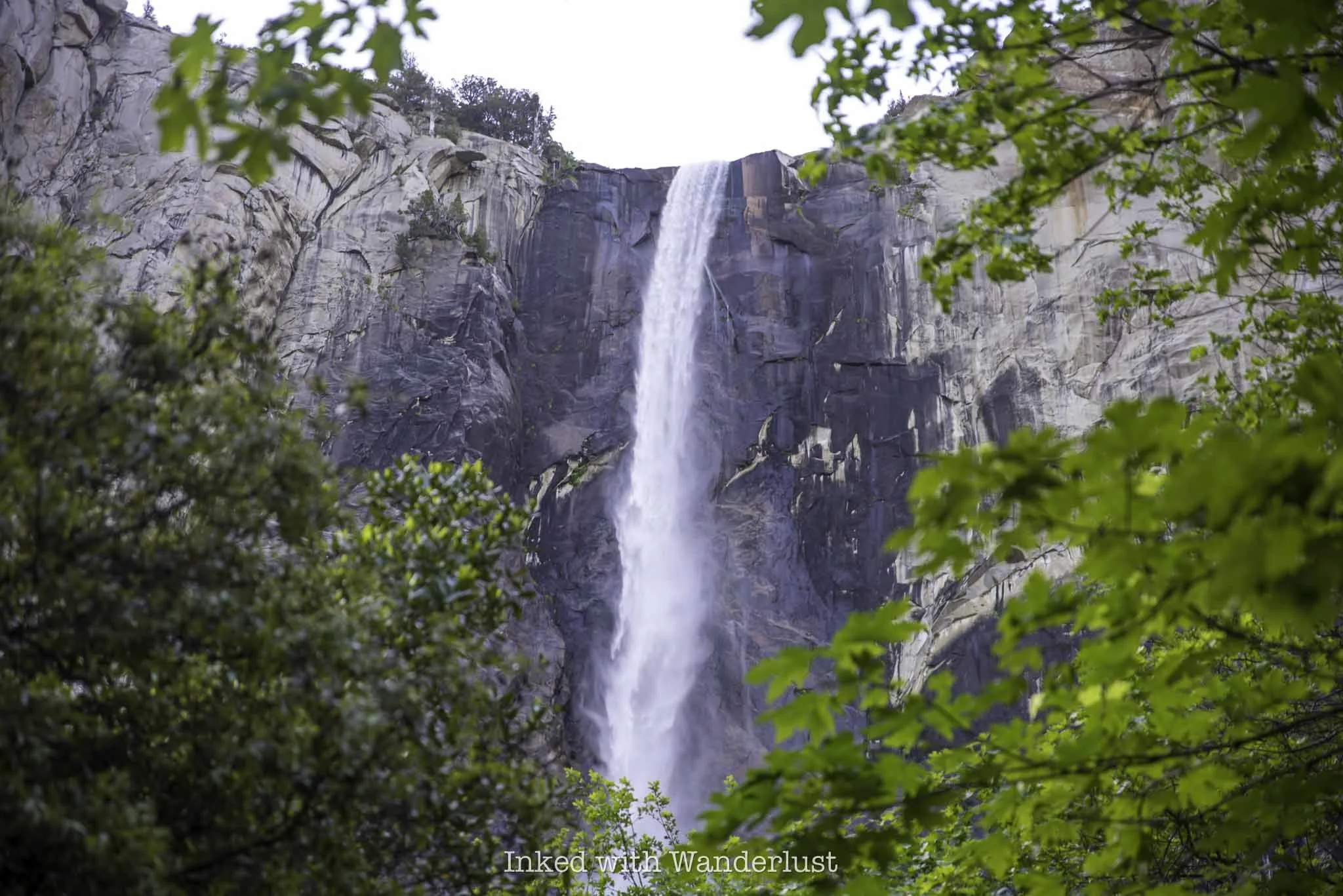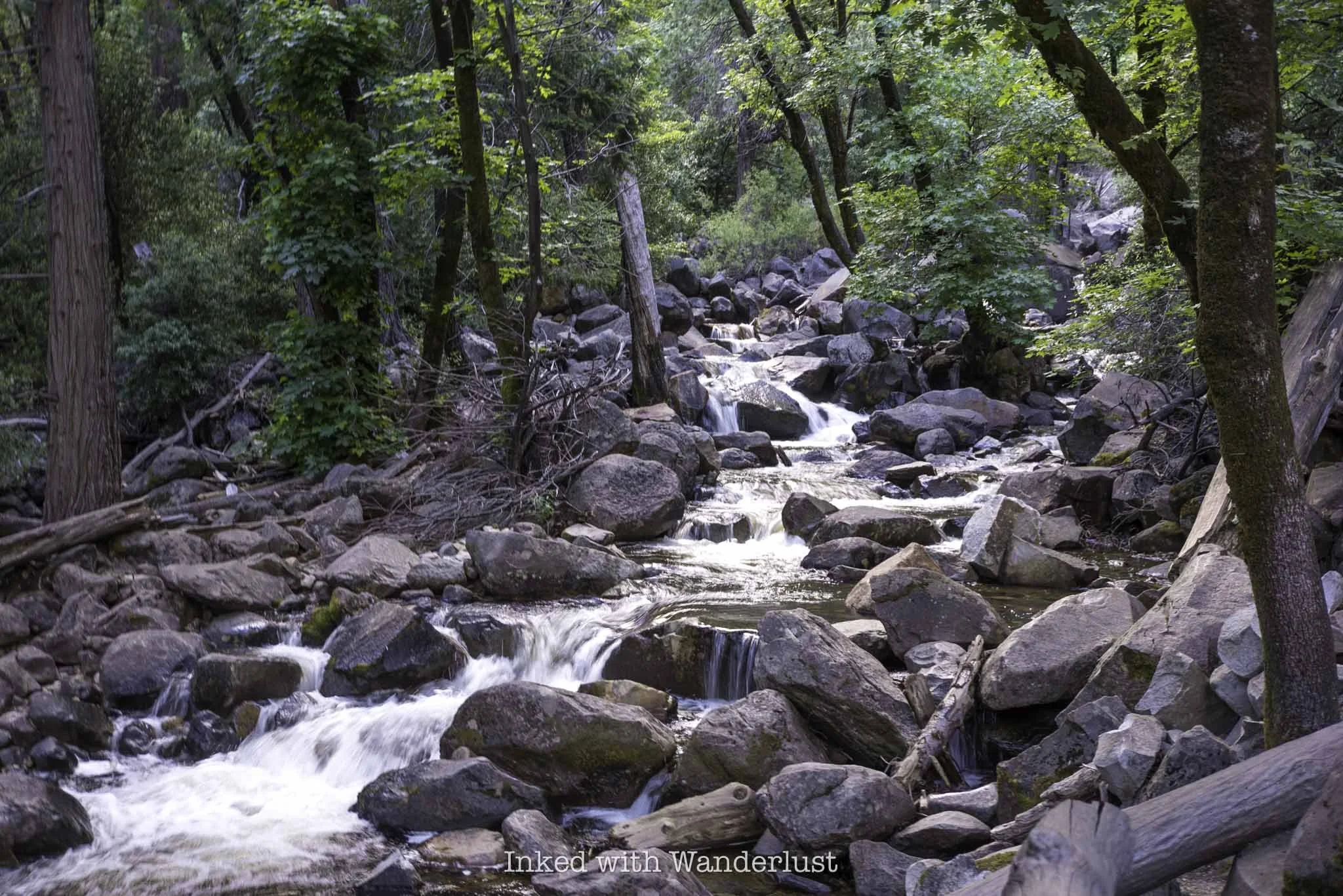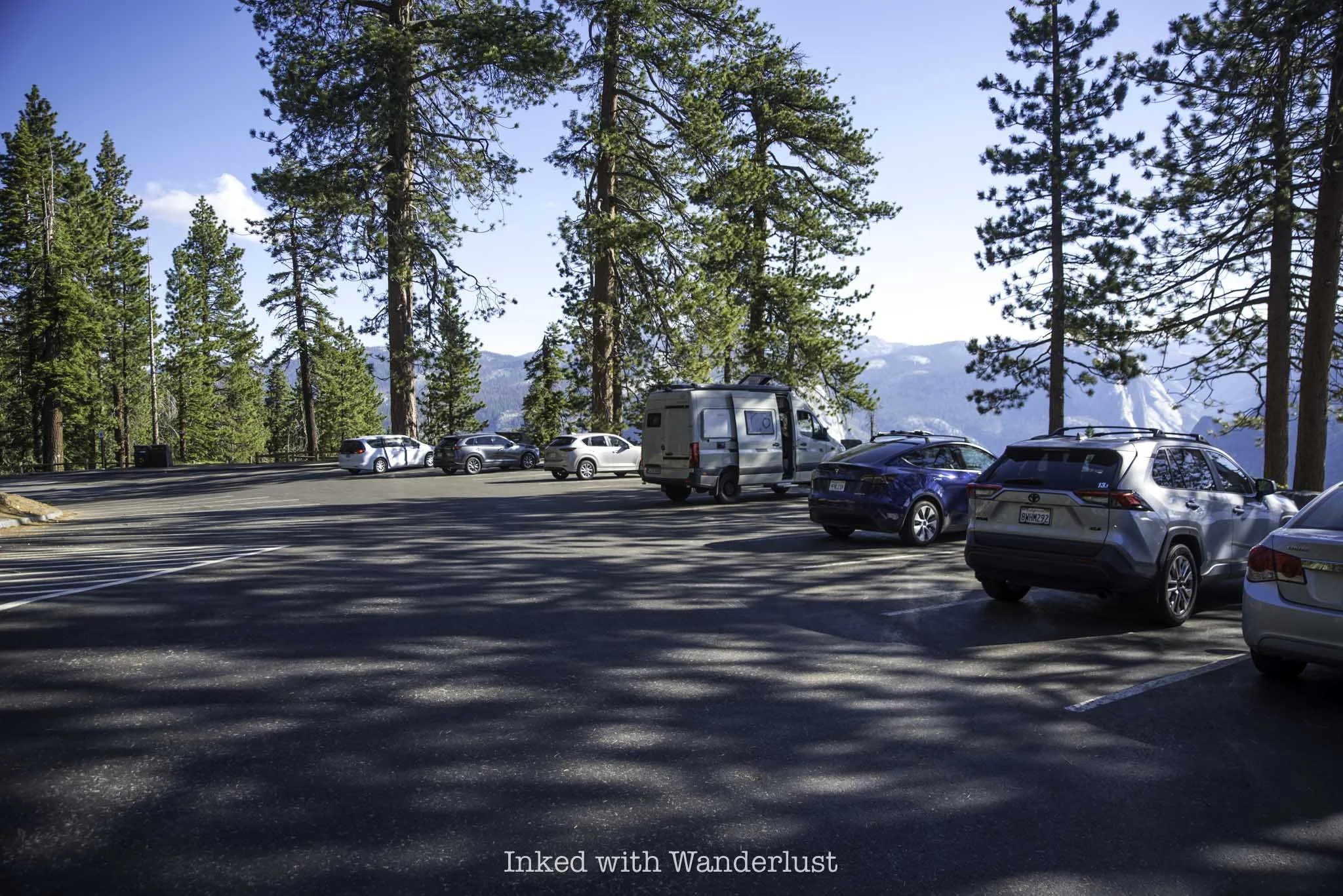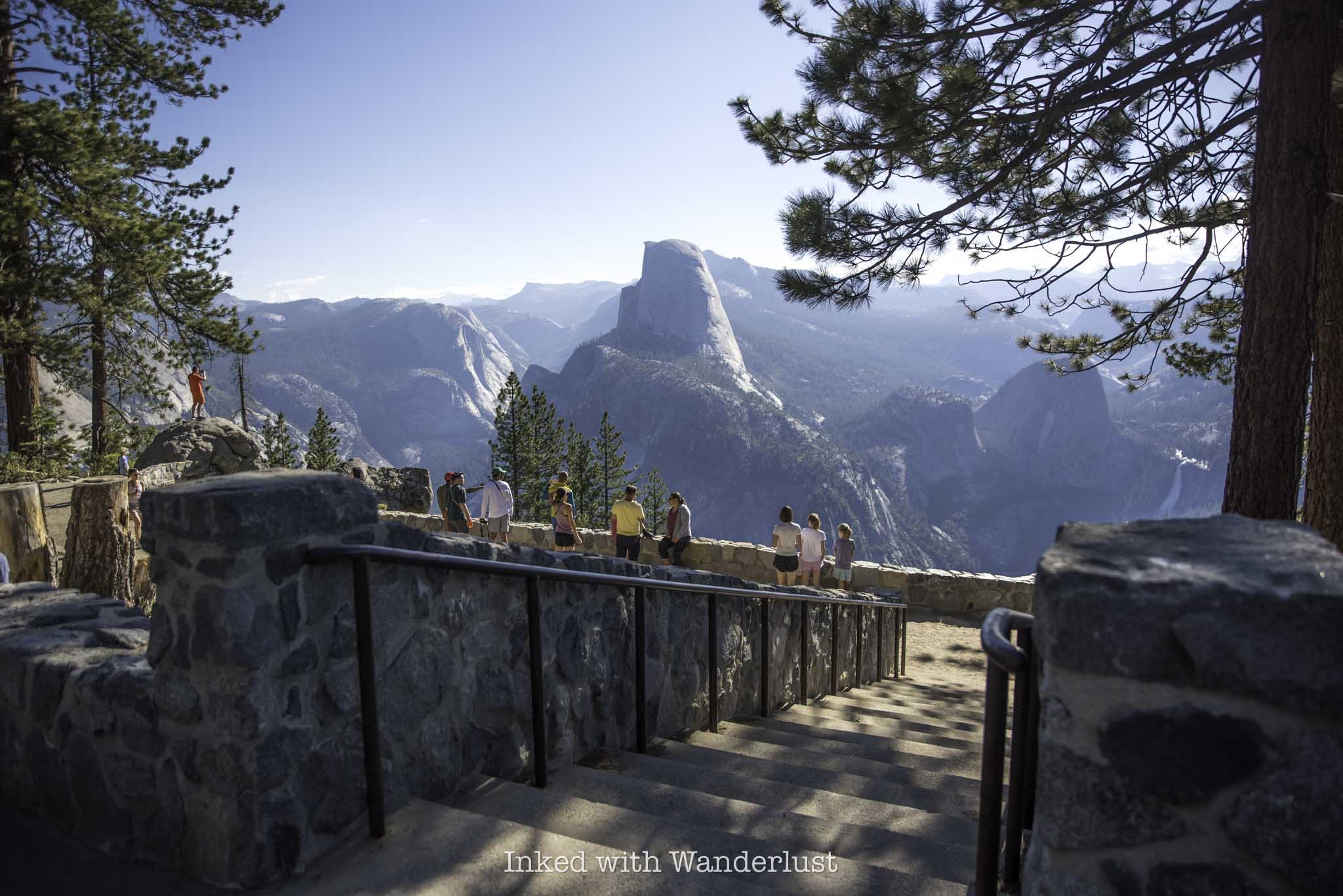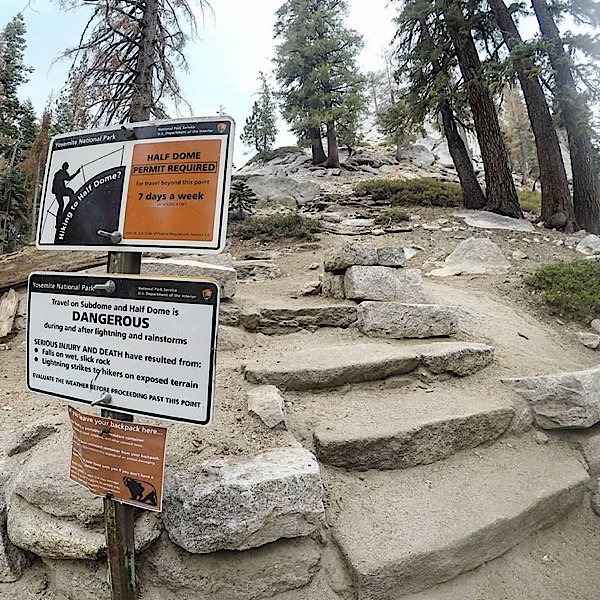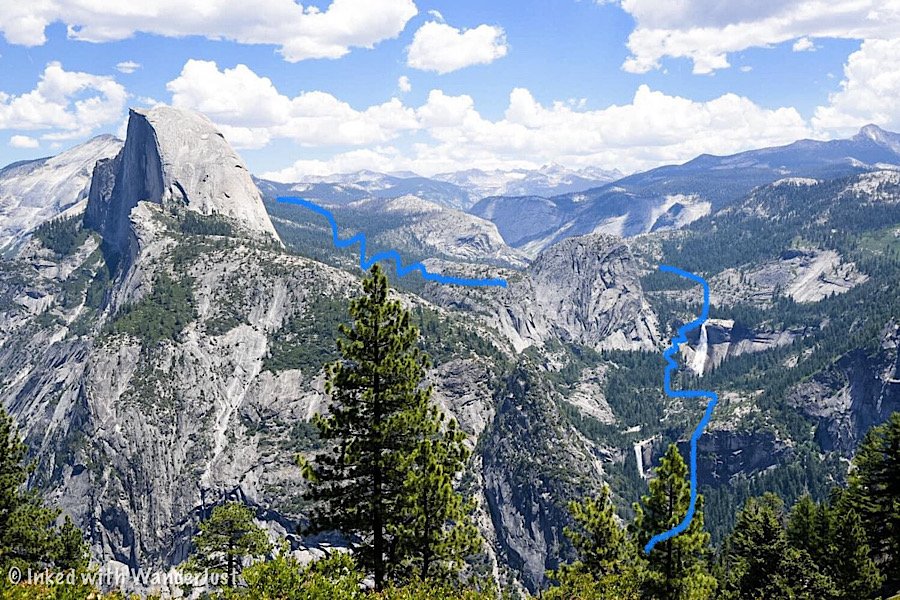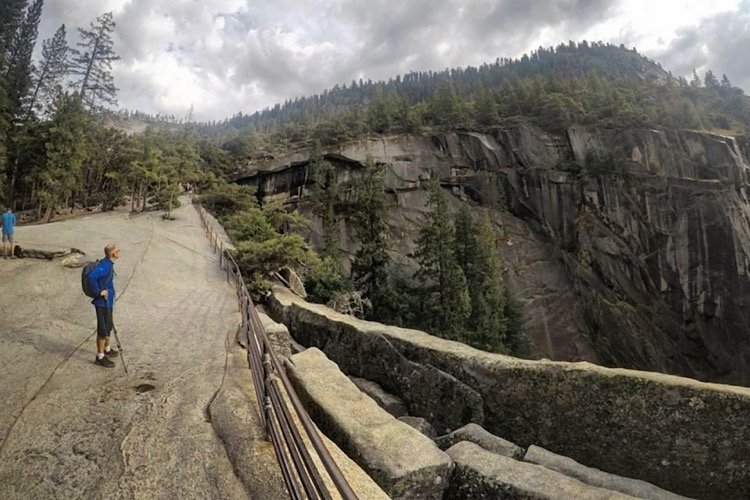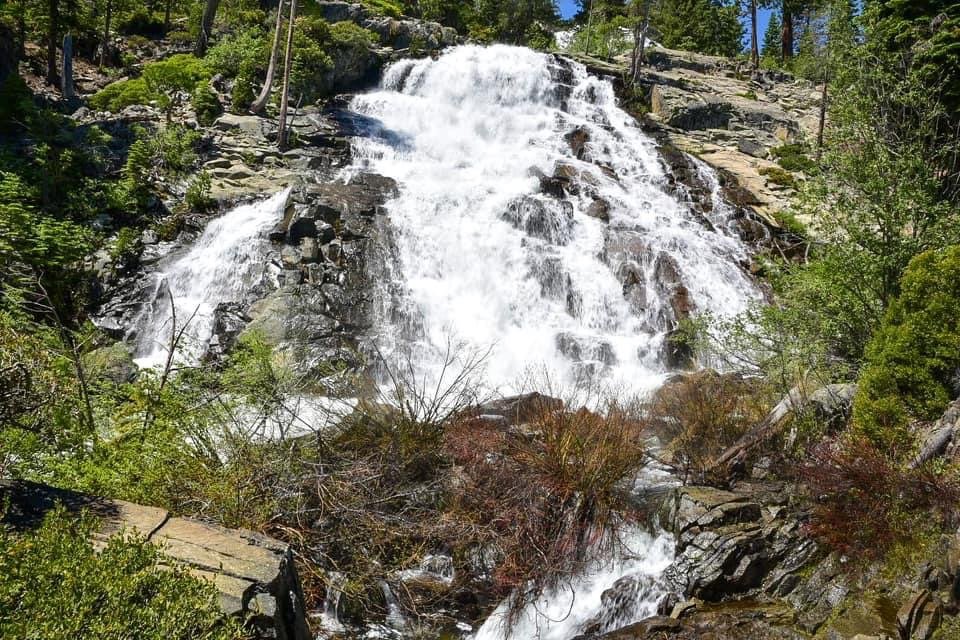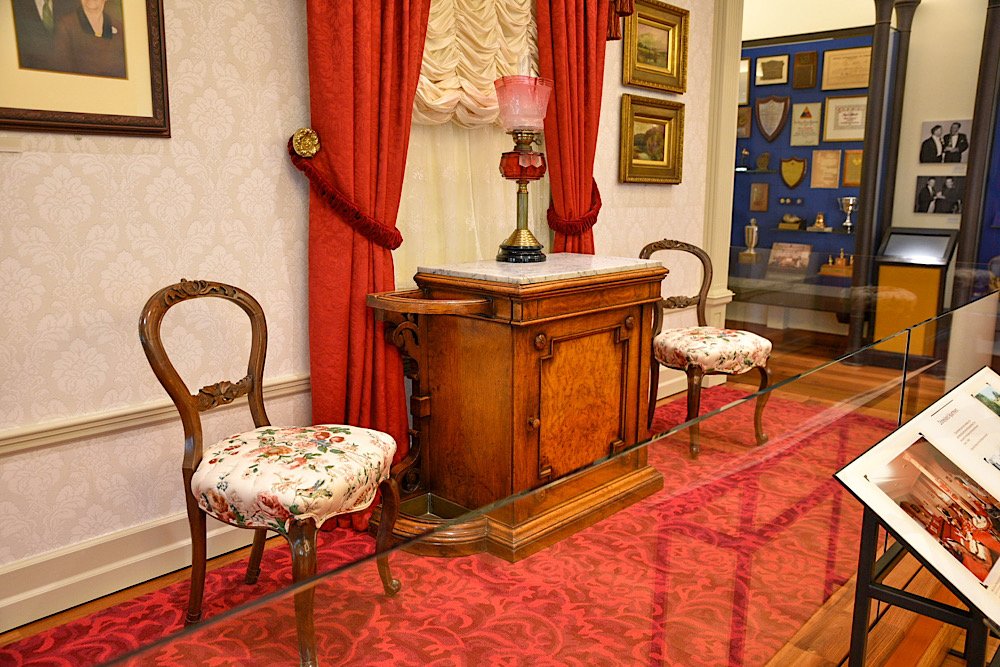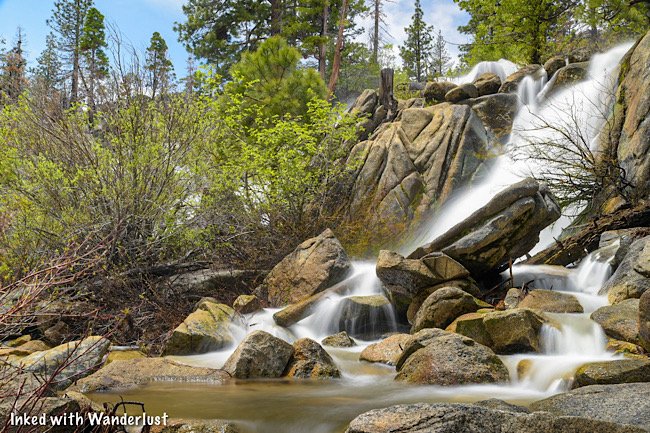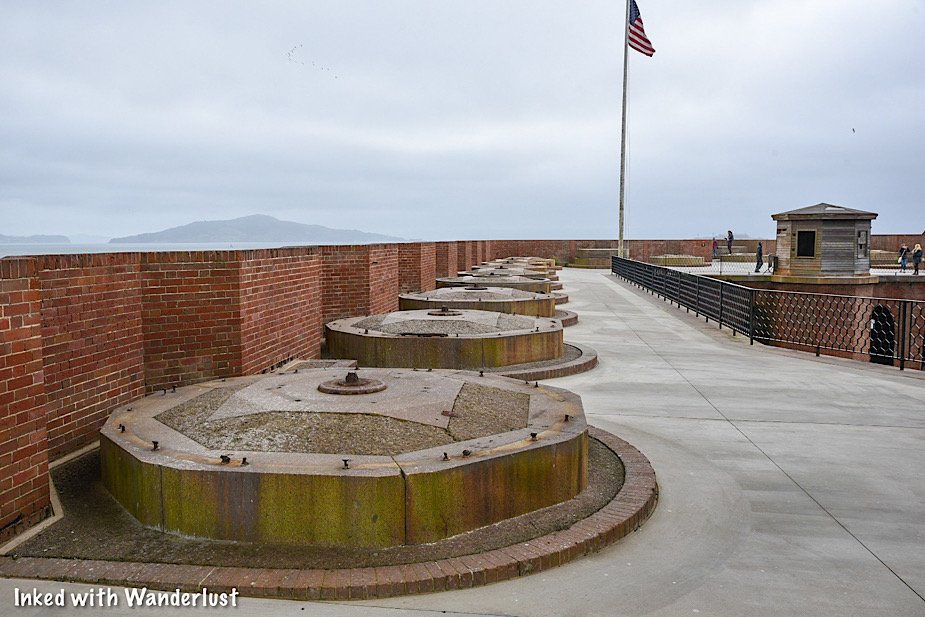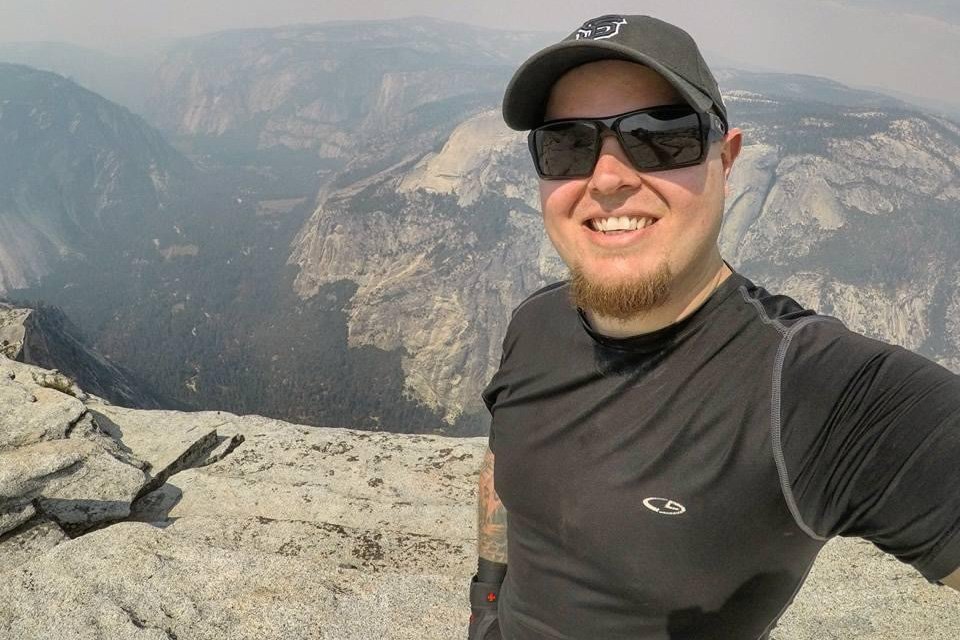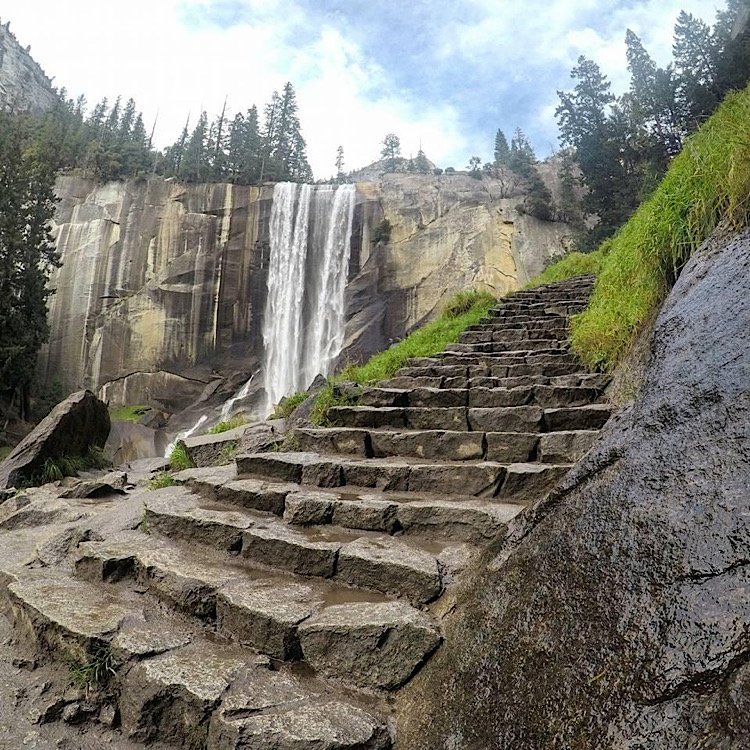Emerald Pools: A Wonderful Swimming Hole in Northern California
California has no shortage of wonderful swimming holes, particularly throughout the Sierra Nevadas in Northern California…
Disclosure: This post contains affiliate links. If you make a purchase through these links, I may earn a small commission at no additional cost to you. I only recommend products or services that I believe will add value to my readers.
California has no shortage of wonderful swimming holes, particularly throughout the Sierra Nevadas in Northern California. One such swimming hole, Emerald Pools, is one of the most popular for a good reason - it’s absolutely amazing!
If you happen to be driving through Interstate 80 between Sacramento and Reno on a warm summer day and you’re looking to break the monotony that driving long distances can bring, Emerald Pools is a great choice.
Additionally, it isn’t incredibly far from many areas of Tahoe, such as Emerald Bay State Park. Though Tahoe has an abundance of swimming holes (and the lake itself) all its own, taking a half-day trip to Emerald Pools is easy from virtually every side of the lake.
In the post below, I’ll discuss how to get there, the parking situation, things to look out for, tips, and more. Let’s get into it!
Buy me a coffee?
If you found this blog helpful, consider leaving a tip through the Buy Me A Coffee button below! Whether it’s $1 or $5, every bit helps offset small travel costs like coffee, water, lunch, parking, or park entry fees. Your support means the world—thank you!
Quick Stats
Location: Northern California, in between Nevada City and Donner Summit
Fee: None
Open: Spring, summer, and fall
Family Friendly: Yes
Cell Service: Good (based on Verizon service)
Restroom: Vault toilets in the parking lot
Parking: Small gravel/dirt lot
EV Stations: None
Difficulty: Easy
Popularity: Moderate to high
Mileage: Quarter-mile from trailhead to first pool
Condition: Well maintained, obvious trail to the first pool
Features: Swimming holes, views of the mountains and river
Best Viewed: Warm days in spring, summer, or fall
Pets: Allowed
Drones: No signage prohibiting them
Hazards: Typical hazards of the outdoors/potential wildlife encounters
My Visit(s): June 2025
Emerald Pools Parking and Location
So how do you get to Emerald Pools? It’s actually quite easy, especially if you’re already in the general area. Emerald Pools is in Northern California, almost perfectly situated between Nevada City and Donner Summit.
If you’re traveling along Interstate 80, you’ll take exit 161 (Nevada City/Grass Valley). From there, you’ll travel a few miles before turning right onto Bowman Road. You’ll take that road for about 1.5 miles before arriving to the parking lot on your right, just past the bridge pictured below.
Emerald Pools’ parking lot is fairly small and is only partially paved. There are no officially designated spots. You’ll basically just find a spot in the dirt that makes sense. The only rule is you can’t park in front of the bathroom.
There is no fee to park or access the trail and there’s a vault-style restroom right there (though it isn’t well maintained at all, so bring these with you…you’ll thank me later). From the parking lot and the bridge, you’ll get a stunning view of the Yuba River.
Emerald Pools Trailhead
There are two trailheads that lead to Emerald Pools. The main trailhead (pictured above) can be found just off of the parking lot to the right of the restroom. The trail is wide, flat dirt, and flanked by towering pines. You’ll walk for roughly a quarter mile before ending up at the main pool.
To find the second trailhead (pictured below), which leads to a rocky outcrop on the other side of the main pool, cross the bridge that you drove over and go left. You’ll see a green gate ahead of you. This path is more of a forrest road but is still super easy to follow.
About a quarter-mile in, you’ll see a spur trail going through a clearing in the trees on your left. Go left and then notice the other spur trails on your left, center, and right. Choose the center one, cross the creek, and head up to the rocky outcrop by the pool.
This side is much less crowded and you’ll usually have more than enough room to yourself. The only downside is there isn’t any great spots to ease your way into the pool. If you’re looking to just jump in, though, it’s perfect.
Emerald Pools Swimming Hole
Coming from the main trailhead from the parking lot, Emerald Pools’ main pool will come into view shortly after starting your way down the trail. The shoreline on this side is rather rocky, though there are a few spots with either smooth rock or open dirt. There are also quite a few trees for shade.
If you’re here in the spring when Yuba River is roaring with fresh snowmelt, the pool will be rather full and deep in some spots. The water level actually rises into the shoreline, covering the base of a tree.
As summer progresses and the snowmelt dissipates, the water level in the pool will slowly go down. There will still be plenty of water to swim in, though, so don’t fret about that. There’s a chance you won’t be able to jump from the cliffside, though.
Facing the waterfall at the other side of the pool, look to your left and take note of the rocky cliffside. That is what you’ll traverse to access the thinner, far less crowded part of the river that you can also swim in.
Again, depending on the time of year, this part of the river could be roaring and therefore, dangerous to access. If you see fast moving water, don’t risk it. If you have your heart set on taking a dip here, it’ll be best to visit in late summer or fall.
The day I was here it was fairly quiet in terms of crowds. I arrived at around 10am on a weekday and found the parking lot nearly full, but not that many people at the pool. If you’re coming on the weekend, get here even earlier than that.
If you’re used to the sandy lake floor of Lake Tahoe, be warned that the floor here is rather rocky. If you don’t already have them, I suggest purchasing and bringing along these quick drying barefoot water shoes by Racqua. They’re good to have while recreating in lake, river, and even ocean waters.
Again, be sure to get here early to avoid disappointment. It gets very crowded here and it isn’t a big space. Also, be sure to pack out what you brought in. Unfortunately, I saw a hefty amount of trash discarded around the pool.
Regardless, it’s a gorgeous spot that’s perfect for cooling off on a warm day. If you’re looking for more to do along this stretch of Interstate 80, consider taking a hike through the historic Donner Tunnels and visiting the Donner Camp Site, where members of the ill-fated Donner Party met their demise.
Additionally, take a drive for about thirty miles to Donner Memorial State Park, where more of the Donner Party members fought to survive during the brutal winter of 1846/1847. No visit to the area would be complete without it.
Buy me a coffee?
If you found this blog helpful, consider leaving a tip through the Buy Me A Coffee button below! Whether it’s $1 or $5, every bit helps offset small travel costs like coffee, water, lunch, parking, or park entry fees. Your support means the world—thank you!
The Ultimate Guide to Mossbrea Falls in Dunsmuir (Step-by-Step Directions)
Visiting Mossbrea Falls, located in the wonderful Northern California town of Dunsmuir, is like stepping straight into a fairytale novel. This unique waterfall is fed…
Disclosure: This post contains affiliate links. If you make a purchase through these links, I may earn a small commission at no additional cost to you. I only recommend products or services that I believe will add value to my readers.
Visiting Mossbrea Falls, located in the wonderful Northern California town of Dunsmuir, is like stepping straight into a fairytale novel. This unique waterfall is fed by multiple springs which flow through a moss-covered mountainside and into the Sacramento River.
Stretching roughly 175-feet across and 50-feet at its highest point, the falls create a lush, living tapestry of water and greenery. It’s an absolute dream for hikers, photographers, waterfall chasers and nature lovers alike.
There’s one caveat to hiking to Mossbrea Falls, though—it isn’t exactly legal. Being at the falls isn’t the problem, rather it’s the route you’ll need to take to get there. Technically, you’ll be trespassing not once, but twice on the way.
Normally, I wouldn’t include something like this on my website, as I like to promote responsible travel and hiking practices. However, all parties involved have seemingly relaxed their position on this. So I decided to promote the responsible way to enjoy this illegal hike (make sense?).
Buy me a coffee?
If you found this blog helpful, consider leaving a tip through the Buy Me A Coffee button below! Whether it’s $1 or $5, every bit helps offset small travel costs like coffee, water, lunch, parking, or park entry fees. Your support means the world—thank you!
Trail Stats
Location: Dunsmuir, California
Fee: None
Open: Year round, but difficult to access in winter
Family Friendly: No (potentially)
Cell Service: Limited
Restroom: Portable near the trailhead
Parking: Street
EV Stations: None, but there are two charging stations down the road at Yak’s
Difficulty: Easy
Popularity: Moderate to high
Mileage: 3 miles, out and back
Condition: No maintained trail, but simple to follow the worn path
Elevation: 2,529 feet
Features: Multiple waterfall streams into a flowing river down moss-covered cliffs
Best Viewed: Spring, for full flow
Pets: Allowed
Drones: No signs stating you can’t
Hazards: Potential wildlife interactions and walking along an active railway
My Visit(s): May 2025
Is Mossbrea Falls Illegal?
The short answer…yes. This is because of the route, though. NOT the waterfall itself. There are two points on the route where you’ll be trespassing—once when you walk through Shasta Retreat and again when you walk along the train tracks, which is owned by Union Pacific.
There are numerous signs stating such at both locations but as stated above, these two parties have seemingly relaxed their position. I won’t name names, but I have spoken with a county employee, two Union Pacific employees, and a local about Mossbrea Falls.
Based on what I have been told, the people at Shasta Retreat do not mind people WALKING through to access the falls. However, they VERY MUCH mind folks parking down there. If you do, your vehicle being towed is all but certain.
Secondly, Union Pacific also does not seem to care much about it either. The railroad section is the longest stretch of the “trail”, as you’ll walk along the tracks for just shy of a mile. On my visit, I passed multiple UP employees and passed a train as well.
The UP employees I spoke with stated that their main gripe is people walking ON the tracks as opposed to alongside them. They say people have been much better about it in recent years, so Union Pacific’s stance has cooled.
Evidence of this was when I passed a stopped train on my way to the falls. Instead of a lecture, I received a smile and a wave from the conductor. Additionally, I walked by a parked Sheriffs Deputy on Dunsmuir Avenue on my out and he just waved as well.
As long as you’re being respectful and not parking anywhere you’re not supposed to, you shouldn’t have any issues. That could always change, though, so don’t take my word as gospel. I’m simply relaying my experience and what I was told by key individuals.
Where to Park to See Mossbrea Falls
Parking, as opposed to the trespassing part, appears to be the biggest point of contention as it pertains to getting to Mossbrea Falls. There is free, limited parking available along the west side of Dunsmuir Avenue. However, most of the curbs are either red or white.
The east side of the street (the side closest to Interstate 5) is 100% no parking. Don’t do it. Additionally, there are a couple of tempting dirt pull-outs along the road, but most of them have posted “no parking” or “private property” signs.
Just up the road from Shasta Retreat there’s a large parking lot next to a community ball field. There’s an abandoned building there, as well as a coffee and food truck called Up-N-Running Espresso. This is where I parked.
When talking to a local while getting my morning coffee, I was advised that despite the posted “no parking” signs, nobody would care if I parked there. According to her, it’s rarely ever enforced, especially outside of the summer months.
Sure enough, my vehicle wasn’t towed, nor did I receive a ticket. If you’re visiting during the summer, I would arrive early and snag one of the street parking spots to play it safe. In early spring or fall, you’ll likely be ok in that lot.
Further down Dunsmuir Avenue and right after the I-5 off-ramp across from Chevron and Yak’s on the 5 restaurant is a dirt pullout long enough to accommodate multiple vehicles. Parking down here will add another half-mile or so to your hike.
I must stress again to NOT park at the entrance to or in Shasta Retreat. Please don’t give them any reason to take this access point away. Additionally, don’t put “Mossbrea Falls” into your GPS. This will take you into Shasta Retreat. Instead, use this address to drive there:
4727 Dunsmuir Avenue (this will take you to the parking lot I mentioned above)
How to Get to Mossbrea Falls
I’m going to give you the most clear and to-the-point directions to Mossbrea Falls you’ll find anywhere. There will also be many photo references. Be sure to bookmark this post to your device so you can refer back to it later on.
From where you parked, start walking north on Dunsmuir Avenue towards Shasta Retreat. When you get to the arch pictured above, the street going through it and into the retreat is Scarlet Way. Proceed (walking) down that street.
By the way, they have set up a port-o-potty, complete with handwashing station, near this arch for public use
When you get to the bottom of the road, it’ll become Cave Avenue. Turn right. Soon after, you’ll come to the bridge pictured above. Cross it and check out the gorgeous views of the Sacramento River below.
When you get to the other side of the bridge, you’ll come to the railroad tracks you’ll be strolling alongside of for the next mile. Turn right at the tracks and remain on the east side of them (the side closest to the river).
Much has been said online about this stretch of the “trail” being too dangerous. In my opinion, there was nothing inherently dangerous about it, provided you’re staying off of the tracks and keeping your ears open for oncoming trains.
There is plenty of room to safely walk on the east side (nearest the river) even if a train is passing through. Conversely, the west side is a different story. If you walk on that side, you’re simply asking to get hit.
There’s a well-worn, noticeable path throughout much of this stretch that comes and goes. The rest of the time you’ll be traversing on what I call, “rail rocks”. These rocks, while not huge, are larger than basic gravel and are exceptionally loose.
More than once while walking on a slant, the rocks gave way, causing my foot to slide a bit and threw me off balance. I never fell or anything like that but if you have balance issues or sensitive ankles/knees, I would take it slowly.
Admittedly, there are a few points along this one mile stretch of track where it gets a bit narrow. I didn’t run into any moving trains, but there was one parked and I walked alongside it for probably half the time.
If it were moving, those narrow portions would’ve been nail biters. If you happen to be at the narrow points and hear or see a train coming, simply step as far to the side as you can and wait for it to pass before proceeding.
There are no signs pointing the way to the falls, but thankfully there’s a big tell letting you know when you’re there. When you come to the trestle bridge in the photo above, stop. Don’t cross it. Instead, turn right and head into the trees.
Just on the other side of those trees is where you’ll find Mossbrea Falls. If you’re here in the spring like I was, you’ll likely hear the falls before you see them. There are multiple paths and each one will lead you to the same spot.
Mossbrea Falls
When you get into the trees, the multiple flowing streams which make up Mossbrea Falls quickly come into view. If you’re here in the spring, the Sacramento River will be flowing heavily and fully, leaving only a small-ish shoreline to view the falls from.
As summer progresses and especially into the fall, the river levels lower, exposing more shoreline and allowing you to get closer. Even with a depleted shoreline, though, you’ll still have a close view.
The best time of day to visit Mossbrea Falls, in my opinion, would be morning or closer to sunset. I had minor car trouble on the day of my visit, which delayed my arrival to around mid-day and I had to deal with the harsh sun hitting the river.
As far as best time of year goes, I would recommend either spring or fall. In the spring, both the river and falls are at their fullest. In the fall, Mossbrea Falls is still flowing, but you’ll have the added benefit of lower river levels and the beautiful fall foliage. Both scenarios are great for photography.
When you’re done viewing the falls, simply head back in the same direction you came. Remember to walk in the space between the tracks and river, keeping your ears open for oncoming trains.
Is Mossbrea Falls Family Friendly?
This is a question commonly asked online and honestly, it can only be answered by individual parents. Personally, I didn’t see any kids at the falls or along the trail during my visit. However, I have seen photos online of families at the falls.
If your kids are teenagers, they shouldn’t have a problem. Especially if they have experience with the outdoors. However, I can see smaller children struggling with the rail rocks. There’s also the potential for danger from the trains.
Only you know your children and their abilities. As amazing as Mossbrea Falls is, it isn’t worth it if you have doubts about them being able to get through the trail. There are solid alternatives in the area, such as Hedge Creek Falls, McCloud Falls and Burney Falls Scenic Loop.
Mossbrea Falls: An Uncertain Future
For years, the city of Dunsmuir has been actively campaigning to construct a safer (and…legal) path to Mossbrea Falls. There have been many hurdles, such as money and getting property owners to relinquish portions of land to make the trail possible.
Recently, Union Pacific agreed to sign over a portion of their land, but the city still needs to raise funding. The current proposal involves extending the Hedge Creek Falls trail. A bridge would be constructed, allowing hikers to safely cross the Sacramento River.
On the other side, fences would be built, keeping people away from the railroad tracks. To bridge the gap, a trail (likely a wooden boardwalk or something similar) would connect you to Mossbrea Falls.
The project is estimated to cost well into the millions. I’m not sure how close or far away they are, but the city is actively asking for donations. They’ve placed a sign with a QR code near the entrance to Shasta Retreat. You can view their website, donation page, and proposal here.
Until this idea becomes a reality, we’ll need to be comfortable with committing misdemeanors in order to see what I believe is one of the most beautiful waterfalls in the state. I truly hope the city can make this happen.
For now, please be respectful when on Shasta Retreat property. No pictures of people’s homes, loitering, parking, etc. Pass through as quickly and quietly as you can. Furthermore, keep off the tracks when on UP property.
The point of all of this is to not give either any reason to reverse their decisions to be relaxed on us trespassing. It’s a privilege that either could strip from us without warning. Let’s do our part to keep Mossbrea Falls as accessible as possible for everyone.
Buy me a coffee?
If you found this blog helpful, consider leaving a tip through the Buy Me A Coffee button below! Whether it’s $1 or $5, every bit helps offset small travel costs like coffee, water, lunch, parking, or park entry fees. Your support means the world—thank you!
EXODUS 13:21
Visit Marshall Gold Discovery Site near Placerville
Of all the historical sites in the great state of California, Marshall Gold Discovery State Historic Park in Coloma is right up there as one…
Disclosure: This post contains affiliate links. If you make a purchase through these links, I may earn a small commission at no additional cost to you. I only recommend products or services that I believe will add value to my readers.
Of all the historical sites in the great state of California, Marshall Gold Discovery State Historic Park in Coloma is right up there as one of the most significant. The reason? It’s the site where gold was first discovered in 1848, two years prior to California becoming a state.
The man who made this remarkable discovery, James W. Marshall, found several shining flecks of gold along the South Fork of the American River in the tail-race of the sawmill he was building in partnership with a man named John Sutter.
This find was indeed significant, yet consequential, as it spawned the largest migration of people in the Western Hemisphere. Once word got out the (gold) rush was on, as thousands of miners made their way to the golden hills of California to earn their own fortune.
It’s important to remember that at the time Marshall made this discovery, Coloma (as well as most of Northern California) was largely inhabited by the Nisenan Indian Tribe. They called this place, Cullumah, which means “beautiful valley”.
Today, the California State Park agency runs this massive site. In it, there are multiple examples of replicated buildings, a visitor center, the burial site of James Marshall, a monument marking the spot of gold discovery, a replica of Sutter’s Mill, and more.
MARSHALL GOLD DISCOVERY SITE PARKING & FEES
There are actually two spots where you can start your day at Marshall Gold Discovery Site; the main area near the visitor center and up the hill at the James Marshall Monument. To avoid confusion, type “Marshall Gold Discovery Site Visitor Center” or “John Marshall Monument” into your GPS of choice.
I didn’t know that going in and just entered “Marshall Gold Discovery Site” into Apple directions and was taken to the hill near the monument and worked my way down from there. You can’t go wrong with either, it’s simply a matter of preference.
Up the hill at the monument is a medium-sized paved lot capable of holding a few dozen vehicles. There is no digital pay station here, just the old school iron ranger when you fill out the envelopes. Be sure to bring exact change.
Below at the visitor center, you can pay your entry fees to the staff inside (you can pay with debit cards here). Either way, be sure to place your receipt on your dashboard so you don’t end up with a ticket.
Fees at Marshall Gold Discovery State Historic Park are:
$10 per vehicle
$9 per vehicle (seniors 62 and over)
The day-use areas are open to the public at 8am, no matter the time of year. However, it closes at 6pm from Labor Day to Memorial Day and 8pm during the summer months. The visitor center opens at 9am and generally closes at 4 or 5pm.
Marshall Monument/Burial Site
As stated above, my wife and I started on the hill at the Marshall Monument. The monument is impressive, as it’s California’s first historic monument and is the final resting place of James W. Marshall himself.
At the top of the monument is a bronze statue of Marshall. In it, he’s pointing downward to the spot on the South Fork of the American River where his discovery changed the course of California history forever.
Marshall passed away on August 10, 1885, totally penniless. Since he couldn’t contain news of the gold discovery and bigger, stronger miners began to show up, Marshall was muscled out his spot before he could finish constructing Sutter’s Mill.
Ironically, neither Marshall nor Sutter profited from their discovery. In 1886, a year after his death, the monument was constructed. Four years later in 1890, the bronze statue was created and placed on top of the monument. In 2010, it was re-dedicated to honor Marshall on his 200th birthday.
From the monument, begin your slow descent down the hill in your vehicle. A mile or so past Marshall Monument is where you’ll find Marshall’s cabin that he built shortly after arriving in Coloma. He occupied the cabin from 1856 to 1870.
Adjacent to the cabin is an old pioneer’s cemetery and further down from there is the highly-historic (and beautiful) Emmanuel Church, which was built in 1855 and was the first Episcopal Church in California.
You can’t go inside either the church or the cabin, unfortunately. Though there are several windows you can look through. To my knowledge, the items displayed inside the cabin are not original.
You can park in the small pull-out adjacent to the cabin and walk to all three of these attractions. When you’re done exploring, get back in your car and continue down the road. You’ll see signs pointing the way to the visitor center.
At one point, you’ll be driving through a street lined with houses. Some of them are currently occupied, but others are not and have historical markers next to them that you can read.
Visitor Center and Sutter’s Mill Replica
When you reach the bottom of the hill you should arrive to the visitor center. I know visitor centers are sometimes skipped by visitors, but give this one a look. There are dozens of exhibits and artifacts inside detailing the history and development of the area.
The museum pays tribute to Native Americans, who previously inhabited this area. It also details the discovery of gold in the river and the gold rush that proceeded it. Additionally, there’s real-life examples of pioneer wagons, gold-panning tools, clothing and more.
All around the road cutting through Coloma and surrounding the visitor center are numerous replicated and real-life historic structure exhibits. This includes a schoolhouse, Chinese store, a blacksmith’s shop, and others.
Just down the way from the visitor center is the ruins of the Coloma Jail, which was the first known jail in the state. The cells aren’t accessible to visitors, but they’ve pulled one outside of the ruins that you can see.
Nearby, you’ll find exhibits detailing the presence of the Nisenan people who called this region home. The biggest and most significant of which are the bedrock mortars, or “grinding rock”. It’s a huge rock with dozens of near-perfectly round shaped holes seemingly drilled into it.
The Native people used these grinding rocks to ground acorns for food, which was their main diet. According to a park ranger, the depth of the holes indicate that the Nisenan people were likely in the area for 1,000 years or more.
Across the street from the Native American exhibit is where the (arguably) biggest attractions of the park are located; the replica of Sutter’s Mill (what James Marshall used to mine for gold) and a monument placed on the spot of the first discovery.
The spot where the replica sits is not the original location. It was actually closer to the river’s edge, about where the monument sits now. There’s much debate as to if that monument is even in the correct spot but according to a ranger I spoke with, it is correctly placed.
The monument sits behind the Sutter Mill replica, right on the edge of the river. It’s largely made of stacked stone and has a bronze plaque in its center which reads, “This monument marks the site of John A. Sutter’s sawmill. In its tail-race, on January 24, 1848, James W. Marshall discovered gold and started the great rush of Argonauts to California”.
On the other side of Sutter’s Mill is the newest structure in the park, a replica of the “Mormon Workers Cabin”. This cabin is where six Mormon Battalion members Sutter and Marshall hired to build the sawmill built and lived in. The cabin was completed on January 23, 1848, one day before Marshall’s discovery.
In fact, we know the exact date of the first discovery because of the journals of Henry Bigler and Azariah Smith, two of the Mormon workers. An example of these journal entries is framed and displayed inside the cabin.
During my wife and I’s visit, there were park employees dressed in pioneer garb, offering a presentation detailing the history and meaning of the cabin free of charge. It was a nice touch and added a lot to the cabin’s historical value.
There’s so much to see and do at Marshall Gold Discovery State Historic Park that you could literally spend the entire day here and probably not see it all. The park is huge and there are many exhibits to explore.
My wife and I had no idea just how much there was here. We thought it was just the monument, the sawmill, cabin, and visitor center. Since we were merely passing through, we didn’t have the time to see it all. So we’ll definitely be making a return visit.
If you want to come here (and I encourage you to do so) be sure to reserve at least half a day to explore the park (a full day would be preferable). You could always break for lunch at nearby Hog-Wild Barbecue in Placerville. If you’ll be in the area for more than a day, I highly suggest taking a self-guided tour of nearby Gold Bug Mine.
EXODUS 13:21
Mare Island Brewery Taproom: Delicious Waterfront Food in Vallejo
In 2014, after brewing their first beer the year prior, two former wine makers and founders of Mare Island Brewery, Kent Fortner and Ryan Gibbons opened what would become the first of three locations…
Disclosure: This post contains affiliate links. If you make a purchase through these links, I may earn a small commission at no additional cost to you. I only recommend products or services that I believe will add value to my readers.
In 2014, after brewing their first beer the year prior, two former wine makers and founders of Mare Island Brewery, Kent Fortner and Ryan Gibbons opened what would become the first of three locations (nicknamed, Taproom) inside a section of the ferry building on Vallejo’s waterfront.
Since then, Mare Island Brewery Taproom has become a staple among local residents, joining the ranks of local favorites like Bud’s Burgers, Provisions, Sac’s Tasty Hot Dogs, and Bambino’s.
Known for their vast line up of locally brewed beers, including some exclusive to their Yard Birds club, the Taproom also features an extensive menu of scratch-made pub-style favorites. A few include burgers, fish & chips, fried chicken sandwich, an array of salads, and more.
Mare Island Brewery Taproom Location and Parking
Despite its name, the Mare Island Brewery Taproom is not located on Mare Island. Rather, it’s located across the water on Vallejo’s waterfront inside a portion of the city’s ferry building. The company’s Coal Shed location is located on Mare Island proper and the Taphouse is located in nearby Benicia.
If you’re taking the ferry into Vallejo from the city, you’ll find the brewery just to the left of the dock. If driving, there’s a small amount of parking available behind the building. If that lot is full, then you’ll need to park in the large lots across the street.
Depending on when and where you park, you may have to pay a fee of up to $8.00. To see the current rates and requirements, you can refer to the city of Vallejo website here. Also, be sure to hide your valuables, as this area is prone to smash and grabs.
Mare Island Brewery Taproom
They make good use of the interior space. There’s an abundance of high-top seating options in the center of the floor with additional “normal” tables dotted along the restaurant’s windows. On top of that, there’s more seating at the bar.
If you’d rather sit outside, you can do so. There are numerous picnic-style tables near the waterfront with additional bench seating with high chairs. My wife and I went with the latter, as it was shaded and provided an epic view of Mare Island.
Also in the interior are numerous pieces of wall decor featuring old photos and other artifacts showing Mare Island’s and the waterfront’s past. If you don’t know, Mare Island is a former Naval Shipyard that operated from 1854 to 1996, when it was decommissioned.
These days, the city and its citizens have made significant efforts to keep Mare Island alive. Now, there are many historical landmarks and buildings, private residences, parks, and a handful of businesses, including a coffee shop, wine bar, and more.
Whether you just want a drink or you’re looking to enjoy a meal, you’ll order at the bar. If you’ve only ordered drinks, you’ll be given them shortly after paying or opening a tab. If you’ve ordered food, you’ll be given a buzzer so you can find a seat. The buzzer will go off when your meal is ready.
When your buzzer goes off, take it to the pick up window next to the front door to retrieve your meal. If you need help, don’t be afraid to ask for it, as the employees are more than happy to help carry your food to your table.
On this visit, I ordered the poutine, which is a heaping serving of their steak fries topped with cheddar cheese curds, brown gravy and sausage. Conversely, my wife ordered their fried chicken sandwich which is pickle juice brined and topped with sriracha remoulade and house-made pickles on a brioche bun, served with a side of fries.
I’ve had their poutine a number of times and have always enjoyed it. The fries hold their crisp for a decent amount of time despite being smothered in gravy. The flavor is simply outstanding, which means something coming from me because normally, I’m not a gravy person.
My wife thoroughly enjoyed her fried chicken sandwich. She reports that the chicken itself was tender and juicy, likely thanks to the pickle juice brine. It also had an excellent crisp to it. If you’ve ever had Chik-Fil-A, it’s similar to that, but taken up a few notches thanks to the sriracha remoulade.
As a side dish, I also ordered their artisan pretzel, served with a side of Saginaw beer-cheese. To go with it, I ordered a glass of their Saginaw Golden Ale. The pretzel was great. Super soft, warm, and perfectly salted. The beer-cheese was rich and creamy, nicely balancing the pretzel’s salty, chewy texture.
This wasn’t our first time at Mare Island Brewery. Since Vallejo is my hometown, we’ve been here a number of times. In the past, I’ve tried their pulled pork sandwich and truffle mac dishes, while my wife has tried their fish and chips, and pastrami rueben. All of which were great.
After your meal, head outside and go for a stroll along the Vallejo waterfront and check out the various displays of military artillery, informational boards, and sweeping views of the water with Mare Island in the backdrop. Or, perhaps, hop on the ferry and head over to San Francisco for the day.
We’ve literally never had a bad experience here. The food, beer, and service is top notch. If you’ll be coming to Vallejo in the near future and want to dine at a great local spot, Mare Island Brewery Taproom would be my recommendation.
Mobius Arch Loop Trail in Alabama Hills
Alabama Hills is located just outside of the small town of Lone Pine, along California’s highly scenic Highway 395. It’s known for its extensive history of being the filming locations...
Disclosure: This post contains affiliate links. If you make a purchase through these links, I may earn a small commission at no additional cost to you. I only recommend products or services that I believe will add value to my readers.
Alabama Hills is located just outside of the small town of Lone Pine, along California’s scenic Highway 395. It’s known for its extensive history of being the filming locations for dozens of movies and most of all, being the “front yard” of Mount Whitney, the highest mountain peak in the lower 48.
While there are many things to do in Alabama Hills, this post is going to focus on one of, if not the, most popular trail in the area - the Mobius Arch loop trail. It’s well known by hikers and photographers alike, for its scenery, as they’re as close to second-to-none as it gets.
The orange/brown, drab-weathered volcanic and granite rock creates a stunning contrast to the often snow-capped granite peaks that make up the Whitney Range. Best of all, Alabama Hills is on Bureau of Land Management (BLM) land and thus, is free to recreate in.
The Mobius Arch loop trail is on the short end of the spectrum but if you’re traveling along Highway 395 and need to stretch your legs for an hour, there are few places better to do that than Alabama Hills and the Mobius Arch trail, respectively.
So how long is the trail? How do you get there? What’s the bathroom and parking situation like? I answer all of these questions and more in the post below. Let’s get into it.
Trail Stats
Location: Alabama Hills in Lone Pine, California
Fees: None
Open: All year
Nearest Camping: Free, dispersed camping all over Alabama Hills. Paid, reservation-based camping at Mount Whitney Portal
Family Friendly: Yes
Cell Service: Decent
Restroom: Three port-o-potties at the trailhead
Parking: Large, well maintained dirt lot
EV Stations: None
Difficulty: Easy
Popularity: Medium
Mileage: 0.6 mile loop
Time: One hour or less
Elevation Gain: 42 feet
Condition: Well maintained and easy to follow
Features: Famous granite arch and views of Mount Whitney
Best Time: Best in Spring or Fall.
Pets: Allowed, must be leashed
Drones: Allowed with a valid permit. You can obtain one here
Hazards: Rattlesnakes have been known to frequent the area. Additionally, the trail is very exposed
Our Visit(s): 2017, 2019 and September 2024
Mobius Arch Loop Trail Parking and Directions
Getting to the trailhead for Mobius Arch is an easy endeavor. No matter which direction you’re coming from, you’ll need to find your way to Highway 395. Once you get into the small town of Lone Pine, you’ll turn onto Whitney Portal Road (at the town’s sole stoplight).
If there’s construction going on (like there was during our recent visit), you’ll have to detour for about ten miles through Turtle Creek and Horseshoe Meadow Roads, before rejoining Whitney Portal Road and then turning left onto Movie Flat Road.
If there isn’t construction going on, you’ll simply continue up Whitney Portal Road for a few miles, passing Nightmare Rock on your right (pictured below). The designs and colors on Nightmare Rock change quite often, so there’s almost always something new to see with each visit.
Shortly after passing Nightmare Rock, you’ll see the turnoff for Movie Flat Road on your right. From either direction, travel along the road for about one mile. You’ll eventually see the large, dirt-floor parking lot on your left. There’s no fee. Just find a spot and park your car.
Near where you first drove into the lot are three port-o-potties available to use. I peaked inside of them to see how maintained they are and I was pleasantly surprised by their cleanliness (as far as port-o-potty standards go, anyway). Additionally, there are two informational boards over there as well.
This trail is of the loop variety, so it doesn’t particularly matter which direction you go. For the purpose of simplicity, though, this post will focus on the trailhead pictured below. It is located on the left side of the parking lot, facing Mount Whitney and Lone Pine Peak.
Mobius Arch Loop Trail
The trail is easy to follow as it’s mostly free of debris and lined with rocks, making the pathway obvious. It begins with one of only two elevation changes along the entire trail by descending a small hill to a dried creek bed. Once you pass that, you’ll start ascending to the arch.
You’ll only gain a meager 42-feet of elevation throughout this hike so while it isn’t completely flat, it’s easy for nearly anyone. I’ve seen kids, their grandparents, and grown adults in sandals (not recommended, though) on this trail. If your dog is with you, you can bring them as long as they’re leashed or otherwise controlled.
It was a bit too warm for our dog to walk, so my wife put her into this pouch/sling we got from Amazon. She’s a small dog and fit into it perfectly. It allowed her to come with us on the hike and avoided her paws getting burned. If you have a small dog and are interested, you can find it here.
Mobius Arch is situated at around the halfway point of the trail. If you don’t make stops, you should reach it within ten minutes of starting the trail. In fact, look for the rock that looks like a skull on your left (pictured below). You’ll come upon Mobius Arch (on your right) shortly after passing that rock.
There are many arches in Alabama Hills, but Mobius Arch is the famous one of the bunch, particularly among photographers, for the ability to frame both Mount Whitney or Lone Pine Peak within it to capture creatively stunning photographs.
Even if you’re not into photography, it’s still cool to look at and say you were there. In order to frame Whitney or Lone Pine within the arch, you’ll need to go up the boulder next to it and shoot from there (as you can see in the photo that my wife captured below). You won’t be able to do it from ground level.
If you’ve never been here before or haven’t seen what Mount Whitney looks like, don’t make the same mistake I did during my first visit in 2017. I framed Lone Pine Peak inside Mobius Arch, thinking it was Whitney, then got humbled later when our waitress at Alabama Hills Cafe advised me I had photographed the wrong mountain.
The peak you see in the photo above is indeed Mount Whitney. The one that appears more prominent from this perspective is Lone Pine Peak. It looks taller and more imposing, but that’s only because Whitney is much further back. Perspective is a crazy thing.
Once you’ve gotten enough photos of the arch, simply continue along the path to complete the loop. You could also opt to return in the same direction you came, but if you did you’d be missing out on some killer landscape and a bonus arch.
Shortly after Mobius is Heart Arch. You can see it in the distance from the parking lot (and honestly, the heart shape is more defined from there), but you can also see it up close along the trail. You’ll soon come to a trail junction after leaving Mobius. To the right will be the continuance of Mobius Arch Loop, up ahead will be Heart Arch.
As stated above, you can see the shape of the heart much better from the parking lot. From up close, it only slightly resembles a heart. It’s still cool to see, though. I’ve heard that there was another arch along this trail, but unfortunately I wasn’t able to locate it.
The remainder of the Mobius Arch Loop is made up of stunning landscapes and fascinating rock/boulder formations. It’s almost like walking through a scene in Star Wars, which is fitting because a scene for a Star Wars movie (among many others) was filmed in Alabama Hills.
Despite there being multiple trail junctions, the trail is easy to follow. For most of the later half of the loop, you’ll have the parking lot within view. Worst case scenario, as long as you keep Mount Whitney and Lone Pine Peak in front of you, you’re fine.
Near the end, you’ll have one final ascent that’ll take you to the parking lot and you’ll be done. This hike is super family friendly, pet friendly and is a great way to stretch your legs during your road trip. I highly recommend checking it out.
Frequent Questions About Alabama Hills
Why do they call it ‘Alabama Hills’?
It was named for a confederate warship, the CSS Alabama (not sure why, but it is what it is)
How many movies were filmed at Alabama Hills?
Alabama Hills has been featured in more than 400 movies, 100 TV show episodes, and countless commercials/ads.
Do you need a 4X4 for Alabama Hills?
For the trail featured in this post, no. However, there are many areas of Alabama Hills where a 4x4 would be needed.
Where is the best place to camp in Alabama Hills?
You can camp at the BLM managed Turtle Creek campground, or take advantage of dispersed camping and set up almost anywhere.
Can you see Mount Whitney from Alabama Hills?
Yes. Mount Whitney is visible from most areas of Alabama Hills.
PSALM 91
Hike Through the Historic Donner Summit Tunnels
When searching for the most unique and best hikes in Northern California, many will point to areas like South Lake Tahoe, Yosemite National...
Disclosure: This post contains affiliate links. If you make a purchase through these links, I may earn a small commission at no additional cost to you. I only recommend products or services that I believe will add value to my readers.
When searching for the most unique and best hikes in Northern California, many will point to areas like South Lake Tahoe, Yosemite National Park, and famed Mono County, and for good reason. Those areas have some of the most beautiful hiking trails in the state.
Just a bit outside of Lake Tahoe proper, near the historic gold mining town of Truckee, is one of the most unique hikes you’ll come across anywhere - the Donner Summit Tunnels.
The tunnels were built in 1867 to accommodate the first train passage through the Sierra Nevada Range. Built primarily by Chinese laborers, nothing but hand drilling methods and explosives were used to carve through the granite-based Mount Judah.
The tunnels saw the first train traffic shortly after completion in 1868, and were used as recently as 1993, when they were then decommissioned. Today, the property is still owned by Union Pacific, who have been kind enough to allow people to freely explore the tunnels.
So how do you get to the Donner Summit Tunnels? What’s the parking situation like? What can you expect on this hike? I answer all of these questions and more below. Let’s get into it.
Trail Stats
Location: Donner Summit in Norden, CA
Fee: None
Open: Mostly in Spring, Summer, and Fall. Difficult to impossible to access in Winter.
For: Everyone
Cell Service: Spotty
Restroom: None
Parking: Large dirt lot at the trailhead. There are also pull-outs on the side of the road, but you’ll be backtracking on the hike
EV Stations: None
Difficulty: Easy
Popularity: Moderate
Mileage: About 5-miles, out and back
Elevation Gain: Just shy of 400 feet. The trail is mostly flat
Condition: Not maintained, but completely doable
Features: Historic trail tunnels, China Wall, petroglyphs and vast views.
Pets: Allowed on leash
Drones: No signs prohibiting it, but I saw a few people flying theirs
Hazards: Uneven ground, loose gravel, low visibility, steep drop offs, and potential wildlife encounters.
My Visit(s): July 2024
Recommended Products for this Hike
Camera Tripod (you’ll need it for the low-light situations)
Citronella Spray (a Deet-free way to keep the bugs off of you)
DJI Drone (for even better photos/video of the area)
How to Get to Donner Tunnels
Most people access the Donner Tunnels from Interstate-80, as it’s easy and straight forward. If you’re coming from the direction of Reno or Truckee (westbound), take the Donner Lake Road exit. When you get to the bottom, turn right on Donner Pass Road to head up the pass.
Less than a mile after crossing the Donner Summit Bridge, look for the sign in the photo above (Sugar Bowl Road). You’ll turn left here. Shortly thereafter, look for an unmarked dirt road on your right. This will take you to the parking lot.
Coming from Sacramento (eastbound), you’ll take the Donner Pass Road exit for about four miles before turning right onto Sugar Bowl Road to the parking lot. If you’re coming from Lake Tahoe, you have a couple options:
From North Lake/Sand Harbor area: Make your way to North Shore Boulevard (CA-217) and go north. Then, merge onto I-80 west for a short time before taking the Donner Pass road exit and head up the summit to the parking lot.
From South Lake/Emerald Bay area: Travel north on CA-89 and continue onto Highway 28, before turning left onto North Shore Boulevard (north). From there, follow the same directions as described above.
Donner Tunnels Parking Lot and Trailhead
The parking lot for Donner Tunnels is a circular dirt lot with no actual parking spaces laid out. It’s essentially park wherever you can find space. If you arrive early (like I did), you’ll have no trouble finding a spot. Later in the day is when it starts to fill, as shown in the photo above.
While any vehicle can access this lot, I do need to warn you about all of the tire-busting rocks. Union Pacific doesn’t maintain this lot at all and as such, there are rocks all over the place that have the potential for ruining your day. Take it slow and you should be fine. The good news is there’s no parking fee.
The unsigned trailhead is located just off the parking lot through a heavily graffitied red gate. You’ll find the first of several tunnels after you walk underneath the road you took to get here.
Donner Tunnels Hike
From here, you’ll work your way through a series of tunnels, each with a varying level of length (and graffiti). The first one from the parking lot is fairly long and dark, but you’ll always have the light at the end in sight.
Don’t be fooled by the amount of light in the photo above. That was me using my camera’s settings so I could show you the detail. It’s actually very dark in here and in my opinion, a cell phone flashlight doesn’t cut it. Which is why I recommend bringing a flashlight with high lumens.
In these tunnels and the upcoming ones, you’ll likely hear, smell, and possibly even see bats in the tunnels. We never saw them, but we did hear and smell them. As is the case with most wildlife encounters, don’t go looking for trouble and you likely won’t find it. In other words, don’t bother them.
After the first tunnel, you’ll briefly enter a snow shed before walking back out into a clearing with sweeping views of Donner Lake and the surrounding mountains. On this stretch, you’ll pass by some petroglyphs on your left and walk over the historic China Wall (pictured below) before entering the next tunnel.
The China Wall is a 75-foot high hand-built retaining wall that helped keep the trains propped up as it passed between the two tunnels. Take a moment to check it out. It’s amazing what the laborers were able to accomplish without the help of modern equipment.
Also along this stretch is the ability to climb up onto the top of the tunnel you just left. You’ll get an awesome perspective for photos. Just be careful as there’s no established way up and the granite rocks are slippery. Going back down is a bit sketchy.
From here, you’ll enter the next tunnel and go through a series of several more. You’ll go through sections where enough light passes through the slits in the walls, enabling you to see without a flashlight. Then you’ll hike through sections of near-complete darkness as well.
On top of the darkness, the ground you’ll be walking on is on uneven, loose gravel with occasion larger rocks. Additionally, and particularly if you’re here while the snowpack is still melting, you’ll also have standing water and potential icy spots to traverse.
The walls of the tunnels are literally covered in graffiti. Some are actually artistically well done while other pieces are simply words/political statements or nondescript images. While I do think it’s a shame that a historical site like this has graffiti all over it, I have to admit that it does add a certain vibe to the overall experience.
If you’re bringing small children, be warned that some of the graffiti art is highly inappropriate for young eyes. Thankfully, most of it is difficult to make out, or even see in the darkness, so I wouldn’t let it stop you from bringing them. Just something to be conscience of.
The hike can be as short or as long as you want it to be. During our hike, I noticed most people turn around after the second tunnel, but I recommend sticking it out and keep going to the end of the final tunnel. If you do, you’ll be rewarded with an epic, unobstructed view of Donner Lake (especially if you climb on top of the tunnel).
In conclusion, this hike is fantastic. Even if you don’t care about the historical aspect of it, it’s worth it for the views and photography opportunities alone. Additionally, because there’s so much to explore, you could hike the Donner Tunnels multiple times over and always see something new.
When you’re finished, consider heading over to nearby Donner Camp Site and see where part of the ill-fated Donner Party attempted to wait out winter and fight off starvation. Further up the freeway is where you’ll find Emerald Pools, a stunning swimming hole. Additionally, Emerald Bay State Park is about an hour away and more than worth the drive.
EXODUS 13:21
Olmsted Point: An Epic View of Half Dome
Olmsted Point is located on the park’s beautiful east side, just down the road from Tenaya Lake and Tuolumne Meadows. There’s no hiking…
Disclosure: This post contains affiliate links. If you make a purchase through these links, I may earn a small commission at no additional cost to you. I only recommend products or services that I believe will add value to my readers.
Yosemite National Park has many amazing viewpoints throughout the park. Household names such as Glacier Point, Washburn Point and Tunnel View typically get the lion’s share of the attention. There’s another viewpoint that isn’t as well known, but features one of the best views of the park’s iconic Half Dome…Olmsted Point.
Olmsted Point is located on the park’s beautiful east side, just down the road from Tenaya Lake and Tuolumne Meadows. There’s no hiking involved. Simply park your car near the lookout and enjoy yourself. There’s a short interpretive trail you can use, or explore around the granite rock for even closer views of Half Dome.
Keep in mind that since Olmsted Point is in Yosemite’s backcountry, this area of the park closes in the winter due to heavy snowfall. Highway 120, the road which cuts through the east side, is typically accessible between late May or early June and the first major snowfall (which typically happens around mid October to early November).
In this post, I’ll discuss topics such as how to get there, the parking situation, who Olmsted Point is named for, other things to see and do nearby, and more. Let’s get into it.
How to Get to Olmsted Point and Parking
Getting to Olmsted Point
Getting to Olmsted Point is straightforward. As mentioned above, it’s located in Yosemite’s east side, just down the road from famed Tenaya Lake and Tuolumne Meadows. You can get there either from Lee Vining and entering through the east gate, or by traveling up Tioga road from the valley.
From Lee Vining, you’re looking at a roughly 45-minute drive. You’ll travel up the awe-inspiring Tioga Pass before passing through Yosemite’s east entrance. From the entrance, it’s about 17-miles before you’ll arrive at Olmsted on your left, shortly after passing Tenaya Lake.
From the valley, follow signage to Tioga road. Olmsted will be the first major visible attraction you’ll come across and it’ll be on your right side. It’s about 45-miles up a winding mountain road, so expect the drive to take a bit over an hour.
Parking at Olmsted Point
The parking lot for Olmsted Point is fairly large and paved. It’s large enough to hold dozens of vehicles but despite that, it does fill quickly. Especially during the busy summer months. So if you’re visiting during that time, I suggest arriving early. Particularly during sunrise. That’s what I did and as you can see in the photo above, I was the only one there.
If you’re not going to make it for sunrise, I suggest arriving prior to 10am. After that, the lot begins to fill as more people enter the park and additionally, that’s when the tour buses begin to arrive, causing a huge swell of crowds at Olmsted.
Olmsted Point Things to Do
When visiting Olmsted Point, many people just get out of their car, spend a few minutes taking in the view, and leave. While the view of Half Dome is indeed the main attraction, be sure to venture past the paved lookout and spend some time exploring.
At the lookout deck itself are a few informational signs detailing the glacier-carved history of Olmsted Point, facts about the man it was named for, and other tidbits of information. Just to left of those signs is a trailhead leading to the Olmsted Point Nature Trail.
The nature trail is short, clocking in at only a half-mile, out and back. It takes an average of 10-minutes to complete and offers a different perspective of Half Dome, Cloud’s Rest, and Tenaya Canyon. Be careful if you’re here in the morning during spring or early summer. The notorious Yosemite mosquitos will eat you alive.
To the right of the lookout deck are two rather large granite shelves you can walk out on and explore. The view of Half Dome doesn’t change very much, but there are granite boulders and a couple of trees up there you can utilize for creative photos (the first picture in this section, for example).
Additionally, behind the parking lot and across the street is another granite hill you can climb up to get a unique view of Half Dome from. Looking in the opposite direction from that vantage point is a equally fantastic view of Tenaya Lake.
Who is Olmsted Point Named After?
Olmsted Point is named after famous landscape architect Frederick Law Olmsted. Best known for designing the grounds of Central Park in New York City, Olmsted played an instrumental role in the protection of Yosemite in the 1860’s.
While working with Senator John Conness, Olmsted helped to secure public land designation for Yosemite Valley and Mariposa Big Tree Grove, giving these areas protection of the state and ensuring they’ll be around for generations to come.
This historic effort resulted in the first acreage of land set aside for public use that would lay the groundwork for what would eventually become the National Parks system. I would say his contributions to Yosemite are deserving of this namesake dedication.
How to See Bridalveil Fall in Yosemite National Park
Standing at a commanding 617 feet, Bridalveil Falls is often the first waterfall visitors see when driving into Yosemite…
Standing at a commanding 617 feet, Bridalveil Falls is often the first waterfall visitors see when driving into Yosemite Valley. It is visible from portions of both Northside and Southside Drive, several pull outs along Big Oak Flat Road, and is part of the famed postcard view from the Tunnel View vista.
However, why stop at viewing it from afar when you can hike a short, easy-to-follow trail to the base and get up close and personal with it? Recently, Bridalveil Falls reopened to the public after a years-long closure for improvements to the trail, parking lot, and facilities.
The Bridalveil Falls hike is one of the most popular in the valley, often seeing similar crowds to other waterfall trails such as Lower Yosemite Falls and the Mist Trail. So how long is the Bridalveil Falls trail? When is the best time to visit? I discuss all of this and more in the post below.
How to Get to Bridalveil Fall and Parking
As one of the premier attractions in Yosemite Valley, Bridalveil Falls is easy to reach within the park. Its parking lot and facilities have recently gone through a years-long improvement project, adding additional parking spaces, improved trail conditions, and several restoration efforts.
The parking lot for Bridalveil is on the way to famed viewpoint, Tunnel View. From the El Portal entrance, make your way through El Portal road and take the Southside Drive option at the fork. From there, turn right onto Wawona Road. Shortly after that turn, the entrance to the parking lot will be on your left.
From the west entrance, continue down Wawona Road. After driving through Wawona Tunnel and passing Tunnel View on your left, continue a bit further down the road where you’ll find the parking lot on your right.
From the park’s east entrance or Hetch Hetchy, you’ll make your way to or on Big Oak Flat Road before transitioning onto El Portal Road, then onto Southside Drive, and taking the right turn onto Wawano Road. As you can see, no matter which direction you are coming from, Bridalveil Fall is easy to reach.
One important thing to note is the Yosemite Valley or the El Capitan shuttles do not stop here. The closest is stop E5 (Cathedral Beach Picnic Area) via the El Capitan shuttle (summer months only). From there, you can reach Bridalveil Fall via the Valley Loop Trail, which is a roughly 1.5-mile hike.
Bridalveil Fall Yosemite Hiking Trail
How long is the hike to Bridalveil Fall? Not long at all. If you’re not fond of long hikes or you’re just short on time, you’ll be happy to discover that the trail to Bridalveil Fall is less than a mile, round trip, along a smooth dirt path with very little elevation gain.
The trail begins at the far end of the parking lot, just past the restrooms. To the left of the trailhead is informational literature of how Bridalveil formed, current wildlife activity, and more.
The views of the waterfall are non-stop throughout this short trail. Just past the boardwalk section of the trail you’ll get more glimpses of Bridalveil beautifully framed by trees and other greenery. If you happen to be here during the fall, the fall foliage takes the view up a few notches.
Just prior to reaching the waterfall, you’ll encounter several views of the beautiful Bridalveil Creek. While spring is the best time to see the creek at its fullest, it’s a lovely sight even when it slows down as the water cascades over the boulders, creating dozens of mini waterfalls.
Once you reach the creek, simply follow it upstream. You’ll eventually come to a few steps and after that, Bridalveil Fall comes into view as you step into the viewing area. From here, you get close enough to the waterfall to feel the mist coming off of it (though not nearly as bad as the Mist Trail).
The viewing area is fairly small for such a popular destination. On a busy day, it isn’t unheard of for people to be shoulder-to-shoulder here. That is why I highly recommend getting here early to beat the rush. During my visit, I only had to share it with a few other people.
Common Questions About Bridalveil Fall
Is Bridalveil Fall open?
Yes. Bridalveil Fall reopened in 2023 from its years-long closure for the restoration project.
How long is the hike to Bridalveil Fall in Yosemite?
The trail is 0.8-miles, out and back.
What is the difference between Bridalveil Fall and Yosemite Falls?
While both are amazing in their own right, the differences are stark. Yosemite Falls is comprised of three waterfalls (upper, middle cascade, and lower sections), totaling 2,425 feet. Making it the tallest waterfall in North America. Bridalveil Fall is much smaller at 617 feet and is a singular waterfall. Both, however, are worthy of your time.
When is the best time to visit Bridalveil Fall?
Any time. Bridalveil flows all year, so there’s never a bad time. You’ll see it at its best in the spring. The summer months bring dense crowds and a diminished(ish) flow. Fall is fantastic for the colors and reduced crowds. Winter could be a great time as crowds are minimal, but you could be dealing with icy conditions and possible trail closures.
Is Bridalveil Fall trail ADA friendly?
Yes. The entire trail is paved, with the exception of the wooden boardwalk portion. There are three steps at the end, but to the right of those steps is a ramp you can utilize. Additionally, there is very little, if any, elevation gain on this trail.
Where is Bridalveil Fall located?
There are many waterfalls with this name in the United States. Both “Bridalveil” and “Bridal Vail” are often used. The Bridalveil Fall in this article is located in the valley of Yosemite National Park, California.
When does Bridalveil Fall stop flowing?
Unlike Yosemite Falls, Bridalveil Fall in Yosemite flows all year long.
Planning a trip to Yosemite? If so, be sure to read about the current day-use reservation requirements here. Also, read about Washburn Point, one of Yosemite’s most beautiful viewpoints. Additionally, if it’s your first visit, see my recommendations for the best things to do in Yosemite Valley. Finally, no visit to Yosemite would be complete without seeing its equally amazing east side.
Washburn Point: A Stunning Yosemite Viewpoint
When driving Glacier Road, most people have Glacier Point as their ultimate destination in mind, and for good reason. Glacier Point is one of…
When driving Glacier Road, most people have Glacier Point in mind as their ultimate destination and for good reason. Glacier Point is one of the most stunning viewpoints Yosemite has to offer. However, just a mile shy of Glacier Point is a similar vista in Washburn Point.
Washburn Point was named for the three Washburn brothers, who built the original road connecting Wawona to Yosemite Valley in the late 1800’s. This vista is easy to get to and is an excellent alternative to Glacier Point should you find yourself unable to find a parking lot (or don’t mind a bonus stop).
In this post, we’re going to cover multiple topics such as the parking situation, what you’re able to see from here, what to expect, best time to visit, and more. Let’s get into it.
How to Get to Washburn Point and Parking
Getting to Washburn Point is fairly straightforward. From the valley, the easiest thing to do is to follow the signs to Bridalveil Fall and Tunnel View. If you’re already on Northside Drive, you’ll keep left to loop back to Southside Drive and veer right onto Wawona road. If you’re on Southside Drive, though, you’ll need to loop back onto Northside first, as the main road in Yosemite Valley is one-way.
Once on Wawona road, you’ll pass Bridalveil Fall on your left and Tunnel View on your right before entering Wawona Tunnel. From the tunnel, you’ll travel for about eight miles before coming to Glacier Point Road where you’ll turn left onto. If you’re coming from the southern entrance of Yosemite, continue for about seventeen miles before turning right onto Glacier Point Road.
From this juncture, you’re roughly fifteen or so miles from Washburn Point. Keep in mind that if you’re driving an RV (or towing one) you cannot take it to either Washburn or Glacier Points as those vehicles are prohibited past the Sentinel Dome/Taft Point parking lots due to the (very) narrow road and tight bends.
Washburn Point’s parking lot will be on your right. It’s paved and can comfortably hold around three dozen or so vehicles. During peak times it can be difficult to snag a spot here. If this happens during your visit, your only option will be to circle around and try again as there’s no parking on the road allowed.
There are no bathrooms at Washburn Point. For that, you’ll need to go further down the road to Glacier Point or circle back to the Sentinel Dome/Taft Point parking lots. Additionally, there are no bear lockers for your food. Though they’re not entirely necessary as you’re never out of eyeshot of your vehicle.
Also, there are no free park shuttles to Glacier Road. Additionally, the paid tour shuttle only stops at Glacier Point. It does not make stops at any other trailheads. Your only option for Washburn is to drive your own vehicle, or hike to Glacier Point from the valley and then walk the 3/4 of a mile road to Washburn. Though I’ll caution against this option as the road has no sidewalks and can be dangerous for pedestrians.
Washburn Point in Yosemite
To call Washburn Point a ‘hike” would be quite the stretch as the only thing between you and the incredible scenery is about twenty concrete steps. The viewing deck below is large enough to contain a decent crowd with additional space on either side.
If you or someone you’ll be traveling with have mobility issues or you’ll be pushing a stroller, simply head to the north end of the parking lot and use the ramp to access the viewing deck.
As stated above, the view at Washburn Point is similar to that at Glacier Point, but at more of a side profile. The details of the “Grand Staircase” leading to famed Vernal and Nevada Falls are more clearly visible than they are down the road.
Directly in front of you, you’ll have a commanding view of Half Dome (the back side), Liberty Cap (the granite mountain that looms over Nevada Fall), Vernal Fall, Nevada Fall, Mount Broderick, North Dome and a peak of Cloud’s Rest. To the right, you’ll have a vast view of the Clark Range, with Mount Starr-King and Illilouette Falls in the foreground.
Washburn Point is also one of the best sunrise and sunset spots in Yosemite. Keep in mind that because of that, it usually results in higher crowds and tougher parking conditions. Sunset, in particular, can be a tough time to go, but is well worth the effort.
It’s eons easier at sunrise as most Yosemite visitors have yet to wake up. Once the sun has risen above the mountains, though, Washburn Point can be a tough spot to get good photos as the sun tends to produce harsh light here (as you can see in the photos in this post).
Best Time of Year to Visit Washburn Point
Washburn Point is located along the famed Glacier Road. Due to the heavy snowfall this area of the park sees, the road closes to vehicles in the winter. It’ll typically close in late October or November, and doesn’t reopen until spring (usually in late March or April).
In the winter, it’s possible to use skis to access Glacier Road from the Badger Pass Ski Area. Most people do this to access Glacier Point but since Washburn is on the way it makes for an easy (and excellent) bonus stop.
If you’re like most people, though, you’ll likely visit when the road opens to vehicle traffic for the spring, summer and fall seasons. Spring, in particular, is a great time to visit Washburn Point as you’ll be able to see (and hear) Nevada and Vernal Falls at their fullest flow.
While fall brings about the beautiful golden foliage the Sierras is known for, the flow of the waterfalls will be all but depleted by this point. You’ll still see some flow, but nothing like spring and early summer. Keep this fact in mind when planning your visit.
Planning a trip to Yosemite? If so, be sure to read 10 Awesome Things to Do in Yosemite Valley on Your First Visit. In addition, don’t forget to visit Yosemite’s famed east side. Finally, if you’re planning to hike Half Dome, read my How to Hike Half Dome for First Timers Guide.
Visit Gold Bug Park in Placerville: Mine Tour, Historic Stamp Mill, Hiking and More
Located in the historical town of Placerville in Northern California, Gold Bug Park features hiking trails, gem panning…
Disclosure: This post contains affiliate links. If you make a purchase through these links, I may earn a small commission at no additional cost to you. I only recommend products or services that I believe will add value to my readers.
Located in the historical town of Placerville in Northern California, Gold Bug Park features hiking trails, gem panning, a historic stamp mill and the park’s main attraction, Gold Bug Mine.
Originally called Hattie Mine, it was constructed in 1888 by William Craddock and John Drench. The original name, Hattie, was the name of Craddock’s oldest daughter.
The mine would change ownership several times throughout its operation and would eventually cease operations in the 1940’s.
Today, the park and mine are open to the public for self-guided tours via a handheld audio device. It may not be as impressive as Bodie, but Gold Bug Mine is a fantastically preserved example of California’s rich mining history.
In this post, I’ll discuss a variety of topics, such as what to expect during the tour, entry fees, parking and more. At the end, be sure to let me know in the comments if this is a place you and your family would enjoy visiting. Let’s get into it.
Getting There, Parking & Entrance Fees
Gold Park Park is conveniently situated almost right off US-50 and only around 45 miles from Sacramento, and 60 miles from the heart of South Lake Tahoe. It’s also an easy visit from nearby Apple Hill.
From US-50, take the Bedford Ave. exit and continue for a mile before turning right onto Gold Bug Ln and into the parking lot for Gold Bug Park.
Parking is fairly limited near the visitor center, but there is a much larger lot further up the road near the stamp mill, if needed. Both options are free, by the way.
From the smaller lot, there’s a wooden boardwalk leading to the mine entrance. To the left of the boardwalk is where gem panning takes place and to the right is the visitor center.
To get to the entrance to Gold Bug Mine, go up the stairs from inside the visitor center to the check-in desk. There is where you’ll pay your entry fees.
In this room, there are several exhibits of mining artifacts, some of which were discovered in Gold Bug itself. One such exhibit is a caged canary (pictured below) which miners used as a way to detect the presence of carbon monoxide.
With their small size and rapid breathing rate, canaries would quickly succumb to the effects of carbon monoxide, giving the miners a heads up to looming danger.
While guided tours are offered from time to time, self-guided tours are what most visitors will experience. Fees for the self-guided tour are as follows:
$12 - Adults
$10 - Senior (55+) and Military
$6 - Youth (6 - 17 years)
Free - Ages 5 and under
In 2024, Gold Bug Mine is open from 10am - 4pm, with no new tours allowed after 3:30pm. Additionally, those under the age of 18 must be accompanied by an adult.
Prior to the tour, each person will be given a handheld audio device (no headphones) and an optional yellow hardhat. To begin your tour, simply exit the room to the adjacent mine entrance.
Gold Bug Mine Self-Guided Tour
The entrance to the mine is tall enough for most people to walk through without having to bend down the entire time. Additionally, the floor is easy to traverse as it’s been boarded. It’s fairly slim in some spots, so groups going in opposite directions would need to step aside to allow the other to pass.
The 353-foot long mine drift has several yellow cards, each with a number, placed into the wall at about eye level. These cards indicate when to start playing your audio device to hear the narrator’s discussion of that particular section of the mine.
If I remember correctly, there were twelve stops in total, with each stop taking three to five minutes for the narration, plus however long we stayed to look around and take photos. You can pause and play the device as you go. There is no time limit.
We were lucky in that we had the mine to ourselves for the majority of our time there, with a small group arriving while we were working our way back out.
Based on that brief encounter with the other group, I can see it being difficult to concentrate on the narrator on your own device when there are several others playing concurrently.
While trying to listen to the last one or two sections, we kept hearing the other groups narrator from the echoing in the mine, which was a bit distracting. So arrive early or outside the summer months to avoid a crowd if that’s important to you.
At the terminus of the drift, you’ll see an ore cart that was actually used in the mine. Additionally, you’ll see several examples of how dynamite was used by the miners.
We spent a little more than an hour exploring the mine. This included time to listen to the narrator at each stop, as well as to look around and taking photos.
When finished, you’ll simply make your way out of the drift and back to the check-in desk to turn in your audio device. From here, there are several other attractions to explore, including hiking trails and the historic stamp mill.
Joshua Hendy Stamp Mill & Hiking Trails
To get to the stamp mill from the mine, walk or drive further up the road to where it terminates at another parking lot. It’s housed inside a grey-colored building, the entrance of which can be found by walking up the dirt path.
The stamp mill will be recognizable right away, as its commanding presence hits you as soon as you enter the building. The interior is multi-level, allowing for multiple views of the stamp mill.
On the bottom level, there’s a working scale model of the stamp mill that demonstrates the ore crushing process, as well as several mining artifacts on display.
After checking out the stamp mill, be sure to exit the building and head further up the dirt path to see a live blacksmith demonstration. Additionally, back at the parking lot, there’s the trailhead for the Springhill Trail.
I didn’t hike it, but from the trailhead I saw these interesting, multi-colored trees so I walked to the top of the hill to check them out. The inside portion of the branches were grey, with the outside being bright red. They were incredibly cool to look at and photograph.
Gold Bug Park has something for everyone and is a fantastic example of how important it is to preserve our history whenever possible. I feel everyone, from history buffs to families, would enjoy their time here. If you have more time, consider visiting nearby Marshall Gold Discovery Site, the site of the first gold strike in California!
Planning a trip to Northern California? Read 10 Awesome Things to Do in Yosemite Valley on Your First Visit. If considering Lake Tahoe, read Emerald Bay State Park Guide. Also check out The Complete Guide to Muir Woods National Monument.
Yosemite Valley: 10 Things to Do For First Timers
Of all the many sections of Yosemite National Park, the valley is what gets the bulk of the attention of most visitors and for…
Disclosure: This post contains affiliate links. If you make a purchase through these links, I may earn a small commission at no additional cost to you. I only recommend products or services that I believe will add value to my readers.
Of all the areas of Yosemite National Park, the Valley is where the bulk of park visitors go and for good reason; it boasts some of the parks most famous attractions, such as Half Dome, Yosemite Falls, El Cap, Tunnel View, Happy Isles and much more.
This post doesn’t intend to tell you what the best sights are, as most other websites and blogs do. Being the “best” is up to each person’s interpretation. What I may consider the best, others might disagree. Additionally, there are so many equally beautiful things to see in Yosemite Valley that labeling any of them the “best” would devalue the others, in my humble opinion.
So instead, this post will use the word “awesome” to describe the sights I’m about to recommend. There are many others, but if anyone in my family or friend group were visiting Yosemite for the first time and asked for my recommendations, these are what I would start with in order for them to get a well-rounded first visit of the Valley. Let’s get into it.
1) Tunnel View
No visit to the Valley would be complete without seeing the classic postcard view of Yosemite, so it’s only fitting we begin here. You can reach Tunnel View by following the signs to Glacier Road (Hwy 41). They’re dotted all along the main road on the valley floor. You’ll turn right at the sign pointing towards Glacier Point and head up 1.5 miles to the viewpoint’s parking lot.
From the viewpoint, you’ll get an unparalleled view of some of Yosemite’s most iconic landmarks; El Cap, Bridalveil Falls, Half Dome, Sentinel Dome, and more. The crowds get thick at Tunnel View, as this is a popular tour bus stop. The earlier you arrive, the better. For additional information on Tunnel View, read my post at the link below.
READ ALSO: How to See the Most Iconic View in Yosemite
2) El Cap Meadow
Seeing El Capitan from Tunnel View is one thing, but seeing it up close and personal from the meadow below is a whole lot better. The best part? Due to its massive size, you can see it from just about anywhere in the meadow surrounding it.
Parking is plentiful on both sides of the road but in the busy summer months, it can be difficult to come by. If you can’t find a spot, just circle around. You’ll likely come across one eventually. The meadow makes for an excellent place to picnic and view El Cap climbers as they make their way up its face.
Pro tip: Be sure to bring binoculars. Seeing climbers with the naked eye is nearly impossible.
3) The Mist Trail
The Mist Trail is one of the premier hiking trails of not just the valley, but the entire park. Two beautiful waterfalls, Vernal & Nevada, are the main features of the trail, along with the infamous (and quad bursting) stone steps. The latter (Vernal) provides the mist that the trail is famous for in the spring and early summer months.
The trail is on the shorter side, coming in at 3 miles round-trip if just going to Vernal Fall. It’ll be 7 miles round-trip if moving on to Nevada Fall as well. Despite its relative shortness, the trail is steep and you will have to navigate hundreds of the slick, stone steps at both waterfalls. If you have the stamina, this hike is a must.
4) Yosemite Falls
Made up of three falls (upper, middle, & lower), Yosemite Falls stands at a commanding 2,435 feet and is one of the parks biggest (literally) attractions. Most people view the falls at the base from the viewpoint located just across the road from Yosemite Valley Lodge.
If you want to get up close and personal with it, though, hiking the Upper Yosemite Falls trail will take you to the top where epic views of the valley await you. The trail is strenuous and is about 7 miles, round-trip.
READ ALSO: Lower Yosemite Falls Hiking Trail
5) Half Dome
Not for the faint of heart, but worth every ounce of effort, Half Dome is the undisputed king of popular hikes in Yosemite. In order to partake in this one, you’ll need to apply for a permit. If you’re one of the lucky ones to get a permit, prepare yourself for a challenging, but rewarding experience.
You’ll make your way up the Mist Trail, get up and over Sub Dome and finally grab hold of the cables to hoist yourself 400 feet to the top. If you’re preparing to hike Half Dome or are considering it, read my post below for guidance.
READ ALSO: Half Dome: The Ultimate Guide To Yosemite’s Best Day Hike
6) Ansel Adams Gallery
Located in Yosemite Village, The Ansel Adams Gallery features many photographs from one of the most famous photographers in the world. If it’s in your budget, you can even purchase some of Ansel’s most iconic works for yourself.
Ansel Adams made a name for himself on his photographic art in not just the Valley, but the park as a whole and beyond. Seeing the park through his lens is something no visit to Yosemite would be complete without.
7) Indian Village
Indian Village is located within Yosemite Village, right behind the visitor center. It features several exhibits of dwellings, a sweat house, pounding rocks, Chief’s house, and a ceremonial roundhouse that were used by the Miwok Tribe. Additionally, there are examples of cabins used by early, non-native settlers.
It is a great place to take a leisurely stroll and at the same time, learn fascinating history about the people who not only originally discovered Yosemite before anyone else, but called it home for many years before it was stolen from them.
8) Glacier Point
Even though it’s outside the bounds of the valley, I’m still going to include it as the views from it are of the Valley. From the valley, follow signs to Highway 41and drive through Wawona Tunnel, following the road for about thirty miles. You’ll reach Glacier Point at the road’s terminus.
You’ll be at an elevation of 7,214 feet above sea level and 3,200 feet above the Valley itself. There’s a short trail that makes its way along the rim, a cool geology hut and a recently renovated visitor center, to name a few things. Many come here for the epic view of Half Dome, but Glacier Point has so much more to offer, so be sure to spend time looking around.
9) Bridalveil Fall
Likely the first waterfall you’ll see after entering Yosemite Valley, Bridalveil Fall plunges 620 feet to the Valley floor and is one of the parks main attractions. You can view the fall from Tunnel View or you can utilize the paved trail that goes from the parking lot to the base.
Bridalveil flows year round but is most impressive in spring and early summer. If you visit during these times and go to the base, you will likely get wet, so be sure to protect those cameras. Bridalveil Fall has recently reopened after a multi-year renovation project of its parking lot, restrooms and trail.
READ ALSO: How to See Bridalveil Fall in Yosemite National Park
10) Cook’s Meadow Loop
Lastly, no visit to Yosemite Valley would be complete without a hike around Cook’s Meadow. It’s a short, one mile loop, but packs a punch when it comes to epic views.
Yosemite Falls, Half Dome, Sentinel Rock, Glacier Point, and the beautiful Merced River are all features found along this easy going trail. It is perfect for families or for those just wanting to take in the sights while taking it easy.
How To Hike Half Dome: The Complete First Timers Guide
Towering nearly 5,000 feet above the valley and 8,800 feet above sea level, Half Dome is considered one of the top day hikes…
Disclosure: This post contains affiliate links. If you make a purchase through these links, I may earn a small commission at no additional cost to you. I only recommend products or services that I believe will add value to my readers.
Towering nearly 5,000 feet above the valley, Half Dome is considered one of the top day hikes in the country. In 1865 it was considered, “perfectly inaccessible”.
In 1875 a man by the name of George Anderson proved that theory wrong. Not only did he reach the summit, but he installed the predecessor to what we now know as the cables.
These days, you’ll see hundreds of people summiting Half Dome on a daily basis and it can be viewed prominently at various locations throughout the park. I hiked Half Dome on September 11th, 2017. It’s a day that will live in my memory forever because even to this day, it was my most rewarding experience.
If you’re considering hiking Half Dome, this guide will provide you with everything you’ll need to know.
READ ALSO: “Hiking Half Dome In Yosemite: My Journey In 30 Pictures”
2026 Half Dome Permit
Before hiking Half Dome, you’ll first need to apply for and win a permit. The extreme popularity of this hike has made it a necessary evil. The NPS limits the amount of permits issued for the season to 300 per day, with 225 going to day hikers and the remaining 75 to backpackers.
I can’t speak from experience exactly how your permit is checked as when I hiked it, there was no one checking. What I do know is you can hike without a permit up until (at least) the sign just before the start of Sub Dome (pictured above).
From what I hear, there is usually a ranger either on Sub Dome or just below it checking permits. If you do not have one, you will be turned around.
READ ALSO: “Half Dome Permit: The Ultimate 2026 Permit Lottery Guide”
Begin at Happy Isles Trailhead
Depending on your starting point, the miles you hike will vary greatly. This guide covers the Happy Isles trailhead as it’s the starting point for most hikers. Starting at Happy Isles, your milage will be 16.2 miles, round trip. Your elevation gain will be 4800 feet and it will be a strenuous, full-day hike. Plan for 8-12 hours.
You can find parking in the Yosemite Valley Trailhead lot just past Curry Village. From there, it’s a quarter mile from the trailhead. You should seriously consider beginning your hike as early. Pre-dawn is ideal. The reason for this is because you will be racing to beat the afternoon storms and crowds.
If your plan is to utilize the shuttle, keep in mind that they do not start running until 7am. Also, the parking lot is known to fill quickly.
The Mist Trail
My brother and I arrived to a fairly empty parking lot at 2:45am, ate a super quick breakfast and were at the trailhead by 3am. You’ll start out on a paved path that works its way to Vernal Falls. From the trailhead, it’s just 1.5 miles to Vernal but don’t underestimate it, because it is steep.
As you arrive to the Vernal Fall footbridge, you’ll see a restroom and water fountain (the one source of filtered water on this trail). Past the footbridge, the trail again climbs steeply and is also where you are introduced to the brutal, stone steps that lead to Vernal and beyond.
Vernal Falls
Here is where you’ll receive the first fruit of your labor. The chance to stare in awe and amazement at Vernal Falls. When I got to Vernal it was still pitch black. Once my eyes adjusted, the view of Vernal with stars sparkling above was breathtaking.
The time of year you do this hike will determine how “misty” it will be. Early in the season, it isn’t unusual to see hikers donning ponchos. Be sure to take pictures but don’t spend too much time as you still have hundreds of steps to climb to get to the top of Vernal. Once there, you’ll get a commanding view.
Nevada Falls
From the top of Vernal, you have another 1.5 miles or so to the top of Nevada Falls and the official end of the Mist Trail. You initially start out on relatively flat terrain through shady pines along the Merced. Soon, it’ll transition into another series of rocky switchbacks.
As you make your approach you’ll come across another footbridge and take notice of, “Liberty Cap”, A large piece of granite that is often mistaken for Half Dome. As you reach the base, you’ll work your way up the switchbacks mentioned above. Once there, you’ve reached the end of the Mist Trail and the first milestone of your hike.
Here, you will find an opportunity to use the provided facilities and take advantage of the many logs/rocks to sit on while enjoying a snack (or two). You could also detour to the right (away from the restrooms) for 0.2 miles to see the top of Nevada Fall from yet another footbridge.
READ ALSO: “The Mist Trail: Hike One Of Yosemite’s Most Beautiful Trails”
Onward to Half Dome
Once you’ve taken in the sights at Nevada Fall and feel rested enough, it’s time to continue your journey. From here, you’ll enjoy a brief flat section of trail. The next point of interest you’ll reach is Little Yosemite Valley (and a backcountry campground of the same name).
Securing a spot here allows you to break your hike up into two or more days. To do this, you’ll need a wilderness permit in addition to your Half Dome permit. I highly recommend going this route to get the most out of your experience.
After passing through Little Yosemite Valley, the trail begins to climb again. Tall sequoias provide shade from the sun as you work your way up the mountain. This climb isn’t overly difficult, but it is constant and steady. Occasionally, you’ll get sneak peaks of Half Dome between the trees.
Sub-Dome
I fully believe that Sub-Dome’s sole purpose is to wreck whatever’s left of your legs. At this point, you’re at 8,000+ feet and just hiked for nearly 8 miles. Half Dome’s base is within reach and Sub-Dome will make you question how badly you actually want to do this.
Take your time and pace yourself here. Not only is Sub-Dome difficult to ascend, but it could also be dangerous as there’s little room for error. You’ll know you’re near the top when you see the lone tree sticking out of the granite, providing the only shade on this section.
Once you get over the hump just beyond this tree, the cables are just a short distance ahead of you.
The Half Dome Cables
Two steel poles are placed (not exactly secured) into the granite rock, roughly six feet apart (length wise) with a wooden plank between each pair. Running the length of the dome from top to bottom are two steel cables running parallel to one another.
As stated above, the poles are not secured. Hikers have accidentally pulled them out. If that happens, don’t panic, just place it back in. As you work your way up, you’ll notice it get steeper with each step. From my perspective, it wasn’t that bad. In fact, I felt it to be fairly simple and straight forward.
Keep a firm grip on the cables and use the wooden planks as a goal to work towards. Once you get to each plank, use them as a resting point if you need to. While on the planks, keep your fellow hikers in mind and consider their speed. If someone behind you wants to pass, let them.
From the base to the top, you’ll climb a total of 400 feet. It took me around 20 minutes to do it. That’s with stopping to rest and taking a few pictures. The granite is slick from the thousands of hiking boots that have traversed it over the years, so sturdy hiking boots with excellent tread are a must!
The Summit
To reach the summit, you would’ve hiked 8+ miles, gone up several hundred stone steps, inclined nearly the entire way, felt the pain of subdome and completed a fear inducing 400 foot climb.
The area of the summit is roughly the same size as seven combined football fields. There’s plenty of room for everyone to explore. The views from Half Dome’s summit are unsurpassed. You can see Yosemite Valley, Tenaya Canyon, North Dome, Cloud’s Rest and more.
It’s important to note that if you see storm clouds in the area, it’s best to head back down asap. Trying to navigate the cables in the rain is dangerous. To me, going down was more difficult for me than going up was. I tried both forward and backwards. In my opinion, descending backwards was easier.
When you’re back the base, collect your packs, take a few more pictures and start your way back.
Decide Which Route To Take Back
Once you’ve made it back to the top of Nevada Fall, you’ll now have to decide which direction you want to go. Your options are:
Back down the Mist Trail: This option is just you going down the same way you came up. The drawback are the steep, slick steps that make the process of going down a slow one.
Take the John Muir Trail: This option will add a mile and a half to your decent but will allow you to skip the steps on a relatively smooth path.
My brother and I chose the Mist Trail because it was pitch black during our way up and we wanted to see the waterfalls. However, the rain made me regret that decision.
Those steps were now ultra slick and forced us to move painfully slow. Suddenly, dealing with more mileage but smoother terrain felt like the better option. By the time we made it back to the car my legs were jello, my shoulders were screaming and I was dehydrated (I didn’t bring nearly enough water).
Despite all that, it was an epic adventure and I would do all over again in a heartbeat.
Alternate Routes To Consider
Happy Isles is just one of a few starting points for Half Dome. Other trailheads include:
Tenaya Lake: You’re looking at 23 miles round trip. Next time I hike Half Dome, this is where I plan to leave from.
Glacier Point: You’re looking at 20 miles round trip. Essentially, you’ll work your way down the Panorama Trail to Nevada Fall, then from there to Half Dome (on the way out, you could simply exit at Happy Isles instead of going back up to Glacier Point. That’ll save you some milage).
Little Yosemite Valley: This is the backcountry campground I mentioned earlier. You’ll hike 4.3 miles from the Mist Trail to here, then 7 miles round trip from Little Yosemite to Half Dome and back.
Alternate Hikes In Yosemite
Half Dome isn’t for everyone. Thankfully, Yosemite is jam packed with incredible hikes you can do if you didn’t obtain a permit or if it’s too much for you.
Some of these include:
4-Mile Trail (Yosemite Valley/Glacier Point road)
Upper Yosemite Falls (Yosemite Valley)
The Mist Trail (Yosemite Valley)
Pohono Trail (Yosemite Valley/Glacier Point road)
Cathedral Lakes (Tioga road)
Cloud’s Rest (Tioga road)
Glen Aulin/Grand Canyon of the Tuolumne (Tioga road)
North Dome (Tioga road)
These are just a handful of the amazing hikes Yosemite has to offer. So if you didn’t get a permit, there’s no need to cancel your trip to Yosemite.
READ ALSO: “10 Awesome Things To Do In Yosemite Valley”
Stats And Additional Tips
Total mileage: 17 miles round trip if you utilize the Mist Trail (the most commonly used trailhead).
Length of time: This will vary from person to person and highly depends on your level of fitness. Typically, expect an 8-12 hour hike.
Location: Yosemite Valley.
Water intake: Bring more than what you think you’ll need. You’ll have an opportunity for more water at the Vernal Footbridge via the filtered fountain, but that’s it. 4-5 liters or more would be wise.
Permit required: As stated above, a permit is required for this hike. The only time a permit isn’t needed is when the cables are down during winter (not recommended).
Avoid weather: If you see dark clouds or if it’s activity raining or snowing, do not climb up the cables. It is not worth the risk!
READ ALSO: “15 Tips For Your First Time Hiking Half Dome”
Essential Gear To Bring
This depends on if you’re doing it as a day hike or over 2-3 days. For simplicity sake, I’m going to assume you’re like most people and doing it as a day hike. Some essential gear includes:
Daypack
Full-fingered gloves (to grip the cables)
Hiking boots/shoes with excellent tread
Hydration bladder insert (preferably 3+ liters)
Moisture wicking socks
Sunglasses and hat
Camera
Trekking poles
Sunscreen
Moleskin (for blisters)
Rain jacket/poncho
This post was originally published in 2020 and has been recently updated for accuracy.
15 Tips For Your First Time Hiking Half Dome
Every year, thousands of hikers summit Half Dome, many of them for the first time. In 2017, I was one of those first timers…
3 minute read | contains affiliate links
Each year, thousands of hikers summit Half Dome, many of them for the first time. In 2017, I was one of those first timers and though I felt like I was fully prepared, truth is, I wasn't.
In fact, I’m confident that if you polled others who’ve hiked Half Dome, I’m willing to bet that many of them would agree.
If you’re hiking Half Dome for the first time this season (or just mildly curious), this post is for you. I’m giving you 15 tips I feel all Half Dome hikers should be aware of going in. Let’s get into it.
Disclosure: This post contains affiliate links. If you click through and make a purchase, I may earn a commission at no additional cost to you. Thank you for supporting us!
1) Get An Early Start
This is especially true if, like most people, you’re doing this as a day hike. You’ll want to arrive to the trailhead as early as possible.
When my brother and I hiked it, we arrived at the Happy Isles trailhead at 3am. We didn’t see any daylight until we got past Nevada Fall.
The reasons you’ll want to start early are:
You’ll beat the crowds to the cables and avoid bottlenecks
You’ll likely avoid the afternoon storms that are notorious in Yosemite
You’ll beat the mid-day heat
If you’re doing this hike as a multi-day and you’re just hiking to your camping spot the first day, you won’t have to worry about it as much.
If you’re doing this as a day hike, however, definitely get started as soon as you can. It doesn’t have to be 3am, but pre-dawn is ideal.
2) Bring Gloves With You
Surprisingly, many people don’t think of this. The Half Dome cables are made of steel and they get hot. They’re also blister inducing.
Using gloves on the cables will help prevent blisters, protect you from burns and most importantly, provide you with good grip.
Sometimes, a pile of discarded gloves forms near the base. You’re welcome to use a pair but you shouldn’t count on the pile being there.
While it’s thoughtful, Rangers will collect and throw the gloves away as it’s technically littering. So bring your own. Full fingered preferably.
SEE MY TOP RECOMMENDATION FOR GLOVES TO USE ON HALF DOME HERE!
3) Bring More Water Than You Think You’ll Need
I cannot stress this enough. It’s always important to bring water with you on a hike but it’s especially true on this one.
I recommend 3-4 liters, per person. I only brought two liters with me and ran out on the way back (with over six miles left to go).
The only filtered water source is the fountain at the Vernal Fall footbridge (just about a mile into the hike). After that, you’re on your own.
4) Trekking Poles Are A Must!
My knees were killing me on the way back. If it weren’t for my trekking poles helping to off-set the weight, my brother would’ve had to carry me out.
If you’re someone who’s prone to knee pain or you know you usually require trekking poles on normal hikes, you’ll definitely want to bring them along on this one.
5) Wear Shoes/Boots With Excellent Grip
While granite usually has excellent natural grip, years of hikers traversing it has caused that section to become smooth and slick.
Seriously, normal shoes or ones that are worn down will not suffice. You’ll definitely want to break them in prior to your hike, but the tread should be as new as possible.
6) Leave Your Backpack At The Base
It may be tempting to bring your backpack with you as you climb up the cables but take it from me, make it easier on yourself (and others) and ditch it at the base.
The reason I say this is twofold:
There isn’t a lot of space between the cables, so if everyone’s wearing a bulky backpack, that space only becomes more restrictive
For some, it’s already challenging enough to climb the cables. Adding the weight/balance of a backpack only complicates matters
If you must bring a backpack to the top, bring a smaller day bag and leave the bulky one behind. No one’s going to mess with your stuff.
Do be sure to seal your bag before leaving, though. You don’t want Marmots and other critters getting in there.
7) Take As Long As You Need On The Cables
There’s no shame in taking it slow. This isn’t a race and there’s no prize at the top for the fastest climber. Go at your own pace.
Every six feet or so (at each set of steel poles) are wooden planks. Use those as a guide and focus on them if the heights start getting to you.
Rest at each one if necessary. No one will make fun of you. Just be mindful of those who may want to go faster and let them pass.
8) If You See Dark Clouds, Don’t Attempt It
Yosemite is infamous for its afternoon storms. It isn’t uncommon to go from clear blue sky to rain and lightning in the blink of an eye.
Bad weather and climbing Half Dome isn’t a good mix. If lightning decides to strike, there’s a good chance Half Dome will be where it hits.
If you get to the base and it starts to rain, don’t risk it. If you’re at the summit and see black clouds rolling in, get back down pronto.
In the 1980’s, numerous people were killed and injured on the summit when a sudden storm came in. It’s always best to er on the side of caution when it comes to storms.
9) You Can Use A Climbing Harness If You Want
Some opt to utilize a harness to secure themselves to the cables, reducing their chance of falling.
It’s a device that you wear around your waist and legs, with the other end connecting to the cables via a carabiner.
Personally, I don’t think it’s necessary. However, if it’ll make you feel better and help you fulfill your dream, go for it.
You will need to unclip and clip back in every six feet or so, so it will slow you down a bit. The peace of mind it provides may be worth it, though.
10) Get Into The Best Shape You Can
There’s no need to be a top-level athlete or master climber, but the better shape you’re in, the easier time you’ll have.
The cables themselves are more upper strength than leg strength and the hike itself will test your cardiovascular endurance.
Hitting a stair master will prepare you for the Mist Trail portion of the hike. Likewise, a strength training routine would be beneficial.
Most importantly, hike as much and as often as you can prior to your trip. The higher the elevation, the better.
11) Bring Extra Socks
This is one I wish I’d thought about. You should always take care of your feet…always. That means bringing a fresh pair of socks (or two).
If you don’t and get soaked on the Mist Trail, you’ll be forced to hike the rest of the way with soggy socks.
If the Mist Trail doesn’t get you, then your socks will most definitely be soaked in sweat by the time you make it to the summit.
Packing extra socks will allow you to swap out the nasty ones for a fresh pair for the hike back down.
12) Have A Hard Copy Of Your Permit Available
Some hikers spend 8-10 hours or more doing this hike. Consequently, if you’re taking a lot of pictures, your phone battery will almost certainly die.
If that happens and all you have is a digital copy of your permit, you’ll have nothing to show the ranger when asked. Guess what that means? Off you go.
It wouldn’t hurt to have a printed copy in a plastic bag inside your backpack. That way, you won’t risk getting turned around.
13) Bring Ibuprofen & Moleskin
You can add this one to the, “wish I thought of it”, category. As stated above, my legs and feet were wrecked by the time we got back to the car.
It was only then that I realized my mistake. I had absolutely nothing to help mask the pain and had a long drive home ahead of me.
Bring some Ibuprofen (or an alternate pain killer) with you. Take a couple at the summit, if needed, to reduce the discomfort on the way back down.
Also, moleskin does wonders for covering and preventing blisters. If you don’t know what it is, it’s a dense, woven cotton fabric that acts as a shield between your skin and shoes in areas where blisters are most common. Highly recommended for ANY hike.
14) Eat, Eat And Eat Some More
This is a long, demanding hike and for most people, will take a full day. You will burn a serious amount of calories and energy.
Due to this, you’ll need to replenish your body with as many nutrient dense foods as you can.
Foods with complex carbs, low amounts of sugar, decent level of healthy fats and high amount of protein will do the trick.
Also, salty snacks, such as beef jerky and sunflower seeds, will help you retain water and keep you hydrated for longer.
Stop as often as you need if you’re feeling hungry or low on energy. Trust me, you don’t want to tackle the cables with nothing in the tank.
SEE MY TOP RECOMMENDATION FOR PREPARING FOOD IN THE WILDERNESS!
15) There’s No Shame In Turning Around
More hikers do it than you might think. I’d wager a guess that for every ten hikers that make it to the cables, at least one decides against it.
Whether it’s due to bad weather or simply a gut-feeling on your part, there’s no shame in turning around. The cables are intimidating.
So don’t succumb to peer pressure or allow pride to take over. If you get there and it doesn’t feel right, then don’t do it. You still had an amazing adventure!
BONUS: Peak Design Camera Clip
This camera clip by Peak Design is a MUST for anyone using their DSLR or point-and-shoot camera while out on a hike or are just out and about on a shoot.
As shown in the image above, it securely attaches to your backpack strap and firmly holds your camera in place. Allowing you to be hands free while not in use.
When inspiration strikes, a quick button press is all it takes to remove it. When done, simply snap back into place and you’re done.
CHECK OUT THIS SOLID CAMERA CLIP BY PEAK DESIGN ON AMAZON HERE!
If you’re serious about hiking Half Dome, be sure to read my other Half Dome related posts…
Disclosure: This post contains affiliate links. If you click through and make a purchase, I may earn a commission at no additional cost to you. Thank you for supporting us!
Please support this website by subscribing to the newsletter below.
Thanks for reading.
5 Incredible Lake Tahoe Waterfalls You Need To See
Waterfalls are a huge attraction to nature enthusiasts. No matter the size or accompanying surroundings, people flock…
Disclosure: This post contains affiliate links. If you make a purchase through these links, I may earn a small commission at no additional cost to you. I only recommend products or services that I believe will add value to my readers.
Waterfalls are a huge attraction to nature enthusiasts. No matter the size or accompanying surroundings, people flock to these nature-made wonders.
Lake Tahoe has many waterfalls. Some you drive up to while others require a bit of effort. The effort to see the waterfalls on this list is minimal, making it possible to see each one in a single day.
The best time of year to see waterfalls in Lake Tahoe is spring or early summer, due to them being fed by snowmelt in the mountains. So plan accordingly.
So which Lake Tahoe waterfalls made the list? Read on to find out.
1) Glen Alpine Falls
Glen Alpine Falls is a beautiful 65-foot waterfall with multiple layered drops. It’s located at the southern end of famed Fallen Leaf Lake at the end of a narrow, bumpy road.
Thankfully, driving to the falls in the hardest part as it’s just a stones throw away from the parking area. Check out my article on Glen Alpine Falls for more details.
2) Lower Eagle Falls
Most people see the upper section of Eagle Falls (which we’ll get to in a moment) but many don’t realize that you can see the lower section as well.
To see it, you’ll need to hike the steep(ish) one mile trail into Emerald Bay State Park, as the trailhead for the falls is behind the visitor center.
3) Upper Eagle Falls
Just because it’s popular and requires some logistical planning to find a place to park, doesn’t mean you shouldn’t make the effort.
When you are able to find a spot, seeing the upper section requires minimal effort as it’s only a quarter-mile hike from the parking lot.
While you’re at it, continue another mile or so up a moderately easy trail to the picturesque, Eagle Lake. To read about that, check out my post below.
4) Horsetail Falls
If you’ve driven into (or out of) Lake Tahoe on highway 50, you’ve undoubtedly took notice of the 800-foot tall, Horsetail Falls. Technically, it’s located in the tiny town of Twin Bridges, but it’s only a few miles from Lake Tahoe, proper.
It’s height makes it the tallest waterfall in the Tahoe region and while you can see it from the highway, you’ll need to hike it to truly appreciate it.
The trail is steep, sun exposed, and difficult to follow. If you decide to do this, take your time. You’ll gain roughly 1,300 feet in two miles.
5) Cascade Falls
Cascade Falls can be found at the end of a one-mile trail. I would rate the trail as easy, as there’s little elevation gain/loss, but the last half is incredibly rocky.
To see it in its full glory, definitely make it a point to go in the spring. If you get there later in the season, though, you’ll be treated to dozens of mini-waterfalls.
At the crest of the falls, you’ll be treated to a fantastic view of Cascade Lake in the foreground and the indelible Lake Tahoe in the background.
I hope you’ll consider visiting these waterfalls during your Lake Tahoe trip. It’s definitely possible to see them all in one day but to truly enjoy yourself, try to spread them out over at least two days.
To save you from scrolling up again, here are the links to the waterfalls mentioned in this list:
Also, if you’re planning a trip to Lake Tahoe, check out our list of 25 lake and beach day essentials!
How To Hike To Lower Eagle Falls In Lake Tahoe
Nestled within the captivating natural beauty of the iconic Emerald Bay State Park, the trail to Lower Eagle Falls offers…
2 minute read | contains affiliate links
Nestled within the captivating natural beauty of the iconic Emerald Bay State Park, the trail to Lower Eagle Falls offers an awe-inspiring experience for outdoor enthusiasts and nature lovers alike.
Most are aware of the upper section of Eagle Falls just outside the park and how you can traverse the crest of lower falls across the highway.
If you want to see Lower Eagle Falls straight on, though, you’ll need to hike down into Emerald Bay via the short, but steep, one mile trail.
In this guide, we’ll discuss the parking situation, fees, what to expect on the trail and more. Let’s get into it!
Trail Stats
Location: Emerald Bay State Park, Lake Tahoe
Fee: $3 - $10 parking fee
Permit: None
Open: Seasonally
For: Hikers
Restroom: At the trailhead and in Emerald Bay
Parking: Medium sized paved lot
EV Stations: None
Difficulty: Easy going in, moderate going out
Popularity: Mega High
Mileage: About 2.5 miles total, RT
Time: 2-3 hours
Condition: Maintained, easy to follow
Features: Waterfall, Island, Visitor Center, Beach
Best Time: Spring/early summer
Pets: Not allowed
Drones: Not allowed
Hazards: Trail is steep going back out. Can be difficult for some
Our Visit(s): August 2022 & July 2023
Disclosure: This post contains affiliate links. If you click through and make a purchase, I may earn a commission at no additional cost to you. Thank you for supporting us!
Emerald Bay Parking Lot
Your trip to Lower Eagle Falls begins and ends in the Emerald Bay parking lot. To avoid the hassle of having to wait for a spot to open, you should arrive as early as possible as it’s known to fill up quickly.
There are pay stations near the trailhead that accept credit or debit cards. The parking fees are:
$3.00 for one hour (select this option if all you want to do is go to the viewing deck)
$10.00 for day use
To begin your hike, head towards the wooden booth past the pay station. To your right, there’s a viewing deck that provides a great view of Emerald Bay and your destination, Lower Eagle Falls.
The Trail To Emerald Bay
Going into Emerald Bay, the trail is all downhill and easy going. Just prepare yourself for the way out because it’s fairly steep and can be difficult for some. So come prepared.
It’s slightly less than a mile along a wider than usual dirt path. Near the bottom you’ll arrive at a junction. Head right to continue to the waterfall.
After this junction, you’ll officially be in Emerald Bay State Park. Continue straight as you pass the restroom, beach access and the Vikingsholm Castle.
Keep straight on the trail until you reach the visitor center. The incredibly short trail to Lower Eagle Falls begins just behind it.
Lower Eagle Falls
Facing the visitor center, the tail to the waterfall begins on the right. It starts out as gravel but as you get closer the falls, it’ll turn to dirt and stone.
When the trail aligns with the water, your first glimpse will be off two mini-waterfalls split between rocks and brush.
Further up, you’ll work your way up several granite rock steps before arriving at the Rubicon trail footbridge.
Go ahead and take in the views of the creek from the bridge, but don’t cross it to the other side as that’ll take you along the Rubicon Trail.
To continue towards Lower Eagle Falls, head up the trail for another 2/10’s of a mile while keeping the creek to your left.
You’ll encounter several more flights of granite steps just before reaching the falls. When you reach the top of those steps, the viewing deck and waterfall come into view.
The viewing deck is split in two by a tree and provides a straight-on view of Lower Eagle. There’s a fair amount of room but it doesn’t take many people to feel cramped.
There’s no access to Highway 89 from here. The viewing deck is the literal dead end of the trail. So when you’re finished taking it in, simply head back the same way you came.
I hope you’ll consider checking out Lower Eagle Falls. It’s a beautiful waterfall and worth the effort to see. If you’re interested in other sites nearby, check out our articles below.
Disclosure: This post contains affiliate links. If you click through and make a purchase, I may earn a commission at no additional cost to you. Thank you for supporting us!
Please support this website by subscribing to the newsletter below.
Thank you for reading.
Unveiling The Magic: Visit The Walt Disney Museum In San Francisco
Welcome to the enchanting world of the Walt Disney Family Museum, nestled in the heart of San Francisco’s historic Presidio…
3 minute read | contains affiliate links
Welcome to the enchanting world of the Walt Disney Family Museum, nestled in the heart of San Francisco’s historic Presidio.
Stepping through its doors is like embarking on a journey through the life and legacy of one of the greatest visionaries of our time. As you explore the exhibits, you'll be transported to a time where imagination knew no bounds.
From the earliest sketches of beloved characters to groundbreaking technological advancements in animation, this museum offers a truly immersive and multimodal experience that engages all your senses.
Join us as we delve into the magical realms created by Walt Disney and unravel the extraordinary story behind the man who forever changed the landscape of animation.
Get ready to be inspired, amazed and filled with childlike wonder as we embark on a tour of the Walt Disney Family Museum in San Francisco.
I’m going to be somewhat vague in the descriptions of exhibits and the museum itself, as I highly encourage you to see it for yourself and I don’t want to spoil it.
Disclosure: This post contains affiliate links. If you click through and make a purchase, I may earn a commission at no additional cost to you. Thank you for supporting us!
Location, Parking & Admission Fees
The Walt Disney Family Museum is located in the historic Presidio in beautiful San Francisco, just a stone’s throw from the Golden Gate Bridge.
The museum’s address is:
104 Montgomery Street
Entering that address (or simply the museum’s name) into any GPS device will place you directly in front of the museum, where the closest available parking is.
If there’s no parking available there, you can try the Main Post Parking Lot (across the Main Post Lawn) or behind the museum in the Taylor Road Parking Lot.
Keep in mind that parking is metered credit/debit cards (as well as cash) is accepted.
Admission fees to the museum are as follows:
Adults: $25
Senior (65 and up): $20
Student (w/ ID): $20
Youth (6-17): $15
Child (5 and under): Free
Military (active, veteran, or retired): Free
Military Spouse/Dependent: Free
These prices pertain to the main museum only. The museum features regular special exhibits on a rotating basis. If you want to tour those exhibits, add $5 to the prices above.
When buying your tickets, you’ll be asked to select an arrival date and entry window. This is to help the museum with over-crowding.
I had no issue getting tickets the day before and even though we arrived past our entry window, we were still able to get in. I can’t guarantee they’ll be lenient every time, though.
The Walt Disney Museum
When you walk inside you’ll be greeted, be asked to show your tickets and be given a quick breakdown of the museum and where everything is.
To the left of the entrance is the cafe and gift shop. To the right are some exhibits to see while you wait for your entry time if you arrive early.
At the podium, you’ll present your tickets and be given a quick explanation of the camera/filming policy before proceeding into the first room.
*I was told that pictures and video were fine, but that flash photography was prohibited. Most cameras, including those with detachable lenses, are good to go.
The first room you’ll enter is on the ground floor and details Walt’s early life. You’ll learn about where he was born, his earliest entry into the world of cartoons and his service in the Red Cross during World War One.
When you’re done looking around, head to the elevator in the next room and take it to the next floor where the remaining museum exhibits are located.
Coming out of the elevator, the next few rooms are a treasure trove of the early works of Disney animation and the equipment Walt and his animators used.
The first room heavily focuses on the musical animated classic series, Silly Symphonies. These musical shorts were the bread and butter for Disney at the time and would pave the way for musicals we all love such as, Beauty and the Beast and Frozen.
The next room details the beginning stages of the development of Disney’s first full-length animated move, Snow White and the Seven Dwarfs.
The walls are adorned with early sketches, rough drafts of the script, props, images and more. It’s a literal treasure trove of all things Snow White.
You’ll also see the multi-pane camera Walt and his animators invented in order to create the multi-dimensional look of their films.
This gave their movies depth rather than having that “flat” look that other animated features of the time had. Past that, you’ll see examples of how Disney began diversifying their character roster.
Next, you’ll learn about the Hollywood writer’s strike of 1941 and how it affected the relationship Walt had with his animators.
The exhibits also detail the events of World War Two and how Disney did his part to help keep the moral of the troops up.
From here, you’ll make your way into what I refer to as the, “transition room”. The walls are lined with screens where clips from some of Disney’s most beloved films play.
It’s a dark room with plush seating in the center, allowing you to rest and comfortably view the clips and images that rotate on the screens.
After the transition room, you enter a beautifully lit hallway with floor to ceiling windows allowing for a commanding view of the Golden Gate Bridge.
At the end of this hallway is one of the actual benches from Los Angelas’s Griffith Park. Walt brought his kids to this park numerous times and sat on this very bench (and others).
It is these benches where Walt’s idea for Disneyland first came about. He was watching his kids ride the carousel and thought to himself, “there outta be a place where kids and their parents could have fun together”.
As you move past the Griffith Park bench you’ll enter the final and perhaps most popular exhibit in the museum; the development of Disneyland.
As you work your way down the spiral ramp you’re surrounded with images and props used during creative sessions and the construction phase of Disneyland.
At the end of the ramp is a beautifully rendered model of Disneyland called, “The Disneyland of Walt’s Imagination”.
The model isn’t an exact representation of the park, but more of a, “fun map-style”, model. This allows for each of the park’s most popular aspects to be highlighted without regard to scale. Tony Baxter, a famed Disney Imagineer, is responsible for the idea.
The model was easily the most popular exhibit. Not just in this room, but in the museum as a whole. After admiring the model, your visit to the museum concludes with a touching tribute to Walt.
The final room covers his final days and the impact his death had on not just the entertainment idustry, but the world. It’s easy to see how special Walt was and how we’ll never have another one quite like him.
I hope you’ll consider paying a visit to the Walt Disney Family Museum. If you’re a Disney fan, particularly of its history, you’ll enjoy it immensely.
If you’re considering a vacation to Disneyland, doing proper research is imperative. Head over to our Disneyland section for many planning resources.
Recommended photography products (opens new link to Amazon)…
Disclosure: This post contains affiliate links. If you click through and make a purchase, I may earn a commission at no additional cost to you. Thank you for supporting us!
Please support our website by subscribing to our newsletter below.
Thank you for reading.
Glen Alpine Falls: A Beautiful Lake Tahoe Waterfall
In Lake Tahoe, not too far from Emerald Bay and located on the southern end of Fallen Leaf Lake is a somewhat-hidden…
Disclosure: This post contains affiliate links. If you make a purchase through these links, I may earn a small commission at no additional cost to you. I only recommend products or services that I believe will add value to my readers.
In Lake Tahoe, not too far from Emerald Bay and located on the southern end of Fallen Leaf Lake is a somewhat-hidden waterfall named Glen Alpine Falls.
Glen Alpine Falls is about 80-feet and cascades over multiple rocks and outcroppings. Additionally, there’s no hiking involved to see it. Simply exit your car and walk a few feet.
So how do you get there? What should you expect? I answer all these question (and more) in the guide below. Let’s get into it.
Quick Stats
Location: South Lake Tahoe at the sound end of Fallen Leaf Lake
Fee: None
Permit: None
Open: Seasonally (Fallen Leaf Lake road is closed in winter)
Best Time of Year: Spring through early summer
Restroom: None at the falls
Parking: Multiple pull-out style lots around the falls
EV Stations: None
Difficulty: Easy
Popularity: High
Time: One hour or less
Pets: Allowed
Drones: No signage stating you can’t
Hazards: Watch your footing around the falls
Our Visit(s): 2023
Getting There & Parking
The parking lot for Glen Alpine Falls can be found at the terminus of Fallen Leaf Lake road, itself being located off Highway 89, south of Emerald Bay State Park.
From the turn-off to the falls, it’s about four miles along a narrow, bumpy road with several tire-busting potholes. The recent record snowfall did a number on this road.
Most of the road cannot accommodate two vehicles passing each other without one pulling over to the side. If you’re driving an RV - forget it.
Fallen Leaf Lake road runs parallel to the namesake lake between many gorgeous cabins. It would be amazing to rent one of these for a weekend.
After passing the lake, you’ll come to fork in the road with the Fallen Leaf Lake Fire Station in front of you. Turn left and you’ll arrive at the falls after a quarter of a mile or so.
There’s no proper parking lot. Just multiple pull-out style lots of varying sizes. Some can accommodate half a dozen vehicles while others can only fit one or two.
You should have Glen Alpine Falls in sight after exiting your vehicle (or hear it, at minimum). Simply walk towards to the main viewing point located just off the parking area.
Glen Alpine Falls
Glen Alpine Falls is large and wide so no matter where you’re viewing it from, you’ll get a great view. The main viewing area is on a large, rocky outcropping perfect for viewing the falls straight on.
You can also do a little scrambling down some boulders to get an even closer view of the falls or the river it feeds. It was easy doing so as I was able to do it while holding a camera and tripod.
Additionally, you can easily reach and see the falls along its crest. Just walk a little further up the road and turn right towards the waterfall.
The best time to see Glen Alpine Falls is in the spring as it ebbs and flows with the snowpack melt. The waterfall reduces to a trickle as summer progresses.
Plan to visit by the end of May to see it at peak flow. All in all, it’s awesome to be able to get so close to a waterfall like this with no effort required. It’s definitely worth a stop.
If you’re interested, check out my guides below to see three other beautiful waterfalls nearby…
Hike The Waterfall Trail In Grover Hot Springs State Park
Nestled within a quiet corner of the eastern Sierra Nevada mountains lies an underrated, little-known gem in the…
3 minute read | contains affiliate links
Nestled within a quiet corner of the eastern Sierra Nevada mountains lies an underrated, little-known gem in the California state park system; Grover Hot Springs.
Grover doesn’t have the same notoriety as Yosemite or even nearby Lake Tahoe, but that’s where it gets its charm. It isn’t dense in crowds, so it’s incredibly easy to spend a serene day (or two) in its pristine setting.
In 2021, the park was shuttered due to damage sustained by the Tamarack Fire. Many trees and other shrubbery were charred, in addition to the parks infrastructure (including the hot springs complex).
Thanks to the efforts of park staff, the park’s campground and hiking trails reopened in time for the 2022 summer season. The hot springs, unfortunately, did not reopen and remain closed at the time of this writing.
In June 2023, I returned to the park to hike the Waterfall Trail. It’s a short and sweet hike terminating at an incredible 50-foot waterfall with multiple cascades.
The trail is perfect for families as there’s little elevation gain, it’s easy to follow and you’re treated to an amazing award with little effort required. Additionally, your furry, four-legged kids can join you.
So how do you get there? How many miles are involved? Is parking available? I answer all these questions and more below. Let’s get into it!
Exciting news for our readers!
We’re excited to introduce the all-new "Inked with Wanderlust" online store!
We're thrilled to bring you a fantastic collection of wanderlust-inspired merchandise. Celebrate your love for travel and exploration with our stylish apparel and accessories, designed to ignite your sense of adventure.
Discover a range of unique designs that capture the spirit of wanderlust, from cozy hiking-themed t-shirts to charming accessories that make your wanderlust spirit soar!
Visit our online store today and start your journey of style and adventure. Happy exploring!
Trail Stats
Location: Grover Hot Springs State Park. Markleeville, CA
Fee: $8 day-use fee
Payment Type: Cash only. No digital pay stations
Open: Seasonally
For: Hikers
Restroom: In the campground and near the hot springs complex
Parking: Small lot near the campground, large lot near the hot springs (currently inaccessible)
EV Stations: None
Difficulty: Easy
Popularity: Medium to low
Mileage: 1.5 miles, one way
Time: 45 minutes to one hour
Elevation Gain: 90 feet
Condition: Maintained, but damaged from the Tamarack Fire
Features: 50-foot water, alpine meadows, craggy peaks
Pets: Allowed on leash
Drones: Not allowed
Hazards: Soft soil, downed trees and trees with potential to fall are still present. Additionally, this area sees heavy bear activity
My Visit(s): 2017, 2018 and 2023
Getting to Grover Hot Springs SP
As stated above, Grover is located in the beautiful eastern pocket of the Sierra Nevada mountain range so no matter which route you take, the drive is going to be scenic.
There are multiple routes to take depending on which direction you’re coming from:
Lake Tahoe: You’ll simply go south on CA-89
Sacramento: Travel east on US-50 and then south on CA-89
Bridgeport: Go north on US-395 and then north on CA-89
Reno: Head south of US-395/US-88, before going south on CA-89
My recommendation, unless you’re coming the opposite side, is to choose a route that traverses over Monitor Pass (pictured above). It’s a jaw-dropping, beautiful drive and my personal favorite.
Even if you’re coming from the opposite side, try to build driving through Monitor Pass into your travel plans. Trust me, it’s worth it.
Once you’re in Markleeville proper (you’ll pass numerous shops and restaurants), turn onto Montgomery street and continue straight until it terminates at Grover Hot Springs.
Grover Hot Springs Parking & Fees
Presently, there is only one option for parking at the park; near the campground (or in it if you’re camping). Assuming you’re just hiking, you’ll park in a small dirt lot with enough room to accommodate a dozen or so vehicles.
Once the hot springs reopens there’s a much larger lot you could utilize there. The trail to the waterfall can be accessed from either, though, and neither one is any longer than the other.
To use the hiking trail, you’ll need to pay an $8 day-use fee. There are no digital pay stations, so fees must be paid in cash via the yellow envelopes. Be sure to keep the receipt on your dash.
If you purchase a pass to the hot springs once they reopen, that pass includes the park’s day-use fee, FYI.
Where Does The Waterfall Trail Begin?
The trail goes by a few names but for all intents and purposes, I’ll refer to it as the, “Waterfall Trail”, in this post as it is the main (and only) trail in the park proper.
There’s a trailhead near the day-use parking lot by the campground and another just past the hot springs complex. They both eventually intersect.
I have taken both routes but in order to present the most current information, this post will focus on the trailhead near the campground.
The Waterfall Trail
The trail begins along an accessible wooden boardwalk through a beautiful alpine meadow. It’s one of the few areas of the park that wasn’t heavily affected by the fire.
Along the boardwalk, there are numerous informational boards detailing the park’s history and development as well as benches to relax and take in the scenery on.
It’s quick, though, as you’ll soon reach a cluster of pine trees where the boardwalk ends and becomes a gravel/dirt path.
You’ll soon approach the only un-jumpable stream crossing of the trail. At worst, it’s ankle deep and will undoubtedly evaporate as snow-melt eases.
Shortly after this stream crossing, you’ll come to a slight fork. Coming from the direction of the campground, you’ll want to continue straight towards the charred trees.
This will be your first real example of the damage done by the Tamarack Fire. Many trees remain standing, but just as many were reduced to ash and/or had to be downed.
On the forest floor, you’ll see greenery sprouting through, trying to breathe new life into the area. You can also see trees shedding charred bark.
You’ll get an up-close-and-personal look at not only the ugly, destructive side of a fire, but the beauty and new life it brings about as well.
Soon, the trail will align with the creek on your left and that’ll continue throughout the rest of your hike until you reach the waterfall.
Shortly after aligning with the river, you’ll come to another fork. Continuing straight will take you to the falls while going right will take to Burnside Lake (5-miles).
From here, you’re only half-a-mile away from the falls. However, you’ll first have to negotiate the one and only “adventurous” section of this trail; the boulder field.
Initially, the trail appears to vanish, but fret not. Simply look to your right and you’ll notice a trail heading up and into the boulder field in front of you.
Negotiating it isn’t difficult and doesn’t require any rock climbing know-how. A little bit of boulder hopping and common sense will get you through just fine.
I’ve always found that keeping to the left side of the boulder field offers the path of least resistance. However, any route you decide to go with will get you there.
Once you get to the other side of the boulders, you’ll get your first glimpse of the waterfall ahead of you. Actually, you’ll likely hear it long before you see it.
Continue straight and you’ll soon reach the waterfall.
To view the falls from the base, you’ll need to break away from the trail proper and take a spur trail down. There isn’t a lot room down there so plan to arrive early if you want it to yourself.
If you continue further up the trail, you’ll get much closer the waterfall’s crest and have considerably more elbow room if you’re hear on a particularly busy day.
While this is the official conclusion of this portion of the trail, you can continue to explore further up and find more waterfalls.
If you’re not feeling up to it, though, spend as much time here as you please and when ready, go back the same way you came.
I hope you’ll consider hiking this trail. Whether solo, with a partner, or your family. I have no doubt you’ll love it as much as I do.
Travel safe, travel responsibly.
Check Out These Amazing Nearly Destinations!
Please support this website by subscribing to the newsletter below.
Thank you for reading.
Fort Point National Historic Site: Parking, History, Fees and More
Nestled at the entrance to Golden Gate Bay in San Francisco lies a hidden gem of American history - Fort Point National…
3 minute read | contains affiliate links
Nestled at the entrance to Golden Gate Bay in San Francisco lies a hidden gem of American history - Fort Point National Historic Site.
Steeped in military heritage and offering breathtaking views, this site transports visitors back to the era of the Civil War.
In this post, we'll delve into the captivating history of Fort Point, exploring its significance and the unique experiences it offers to those who visit.
Topics such as parking, the fort’s history, fees, how to get there and more will be discussed. Let’s get into it!
Exciting news for our readers!
We’re excited to Introduce the all-new "Inked with Wanderlust" online store!
We're thrilled to bring you a fantastic collection of wanderlust-inspired merchandise. Celebrate your love for travel and exploration with our stylish apparel and accessories, designed to ignite your sense of adventure.
Discover a range of unique designs that capture the spirit of wanderlust, from cozy hiking-themed t-shirts to charming accessories that make your wanderlust spirit soar!
Visit our online store today and start your journey of style and adventure. Happy exploring!
Fort Point History
Constructed between 1853 and 1861, Fort Point stands as a testament to the nation's military defense strategies during the mid-19th century.
Its primary purpose was to protect San Francisco Bay from potential attacks. Named after the rocky promontory on which it was built, Fort Point was initially armed with hundreds of cannons and a garrison of soldiers.
During the American Civil War, Fort Point played a vital role in safeguarding the Pacific Coast. Despite its strategic significance, it never saw direct combat during the conflict.
Its mere presence deterred Confederate vessels from venturing too close to the Bay Area, thereby safeguarding the Union's interests until 1886, when all troops were withdrawn.
In the mid-20th century, there were plans to demolish the fort in order to make way for the construction of the Golden Gate Bridge.
However, due to the efforts of preservationists, the fort was spared and bridge was purposely built around it. In 1970, it was designated a National Historic Site, ensuring its protection.
Today, the fort serves as a tangible reminder of the nation's turbulent past and the enduring strength of the United States.
Parking at Fort Point
Fort Point National Historic Site, located underneath the southern end of the Golden Gate Bridge, offers visitors a fascinating glimpse into the city's rich history.
As you plan your visit, a key consideration is parking. As I’m sure you know, parking anywhere in San Francisco can be quite the task. Thankfully, at Fort Point, there are a few viable options.
On-Site Parking
Fort Point National Historic Site has dedicated on-site parking for visitors. There’s a handful of spaces directly adjacent to the fort.
Limited street parking is also available along Marine Drive, just outside the entrance. I suggest arriving early to secure a spot.
If you intend to park here and are utilizing GPS, be sure to punch in the exact address OR its full name (Fort Point National Historic Site). The address is:
201 Marine Drive, San Francisco, CA, 94129
If you only punch in, “Fort Point”, like I did, it’ll likely take you to the Battery East parking lot (which isn’t necessarily a bad thing).
By inputting the address or full name, it’ll take you to the parking spaces along Marine drive.
Crissy Field Parking Lot
Situated a short walk away from the fort, the Crissy Field parking lot offers ample space. It provides easy access to the site and is often a preferred choice due to its proximity.
Parking here is free on weekdays but there is a fee on weekends. They are:
$1.20 per hour
$7.00 for the day
The payment kiosks accept credit or debit cards, as well as coins.
From this parking lot, it’s 1.6-miles to the fort and takes roughly thirty minutes by foot.
While it isn’t the closest lot, it’s situated near many other attractions in the Presidio. If you’re visiting them as well, parking here may be the most strategic option.
Battery East Parking Lot
Located east of Fort Point, the Battery East parking lot is another viable option. Although it requires a short downhill hike to get to the fort.
If you feel up to hiking, I highly suggest parking here. The views of the Golden Gate Bridge from this trail are outstanding. Especially in the spring when local floral is in bloom.
There are parking fees at this location. They are:
$3.00 per hour
$10.00 for the day
There are two pay stations located at each end of the lot and they only accept credit or debit cards. Be sure to place your receipt on your dashboard.
It’s about 3/4’s of a mile (one-way) to the fort and takes roughly 15-minutes to get there.
Fort Point Fees & Hours of Operation
At Fort Point, there are no admission fees (or parking fees if you park along Marine drive).
That’s the good news. The bad news? The fort isn’t open every day of the week. The fort’s hours of operation are:
Open Thursday - Monday, 10am - 5pm (roof access closes at 4:30)
Closed Tuesday, Wednesday and on Thanksgiving, Christmas and New Year’s Day
These hours pertain to the interior of the fort. The exterior can be accessed seven days a week.
If you’ll be here on a day when the fort is closed, I still recommend going as the views of the bridge from here are amazing.
However, I highly suggest timing your visit to a day when the interior is open to get the most out of Fort Point.
The Interior of Fort Point
When you step through the iron gates of Fort Point, the first thing you’ll likely take notice of is the beautiful contrast of 1800’s and 1900’s architecture as the Golden Gate Bridge intersects with the fort nearly directly above you.
There are several levels to the fort, most of which (including the open top roof) are accessible to visitors.
Something to note is that only the bottom level is wheelchair accessible. The remaining levels must be accessed via the spiral staircase leading up to the guard towers.
There are many artifacts on display, such as canons and several images showing what the fort looked like prior to the construction of the bridge.
As you move up the levels, you’ll find several rooms that were once living quarters for the soldiers and officers with exhibits on display.
You’ll also notice dozens of look-out holes along the brick walls that once allowed soldiers to maintain surveillance of the bay and utilize artillery, if needed.
Make your way up to the roof and treat yourself to amazing views of the Golden Gate Bridge and the bay. Dotted along the roof are foundations that once housed artillery batteries.
If you can, try to picture the bay without the bridge and put yourself in the point of view of the soldiers as they wondered if that would be the day the Confederacy attacked.
When you’re finished exploring, simply make your way outside the fort and move on to your next adventure of the day.
If you’re interested in additional sites that detail the area’s rich military history, consider reading a few more of our posts to help map out your trip. They are:
“The Ultimate Guide To Visiting and Touring Alcatraz Island”*
“San Francisco’s Embarcadero: Best Things To Do, Getting Around and More”*
“Muir Beach Overlook: A Breathtaking View Of The Pacific Ocean”*
“Kirby Cove: The Most Gorgeous View Of The Golden Gate Bridge”*
*Denotes a link to a separate post
Please support this website by subscribing to our newsletter below.
Thank you for reading.
Hiking Half Dome In Yosemite: My Journey In 30 Pictures
Back in 2020 when I launched this website, the very first published post was, “Half Dome: The Complete Guide To Yosemite’s Epic Day Hike”, and it’s…
3 minute read | contains affiliate links
In 2020, when I launched this website, the very first published post was, “Half Dome: The Complete Guide To Yosemite’s Epic Day Hike”, and it’s the one i’m most proud of.
The reason for that is because hiking Half Dome was a goal of mine and accomplishing that goal is what gave me the confidence and drive to launch Inked with Wanderlust.
The original post contains a ton of information and I highly recommend giving it a read if you’re planning to hike Half Dome (especially if it’s your first time).
*PRO TIP: Bookmark both of these posts to your device so you can return to the information later
This post, however, will be the shorter, stripped down version. It’ll focus solely on the trail itself and nothing else. So you’ll quickly get an idea of what this hike is like.
It’ll also focus solely on the trailhead where most Half Dome hikers begin their journey; the Happy Isles trailhead and through the Mist Trail.
If reading this post gives you some inspiration to hike Half Dome yourself, check out our ultimate beginners guide here (opens a new window).
Quick Stats
Location: Yosemite Valley, California
Fee: $35 to enter Yosemite + applicable permit fees
Permit: Required when cables are up (typically between Memorial Day and Columbus Day)
Open: All year (cables are down during winter)
For: Hikers
Restroom: Five: 1) At the trailhead 2) At the Vernal Fall footbridge 3) Near the Emerald Pools at the top of Vernal 4) At the top of Nevada Fall 5) At Little Yosemite Valley campground
Parking: Large dirt lot a quarter-mile from the trailhead
EV Stations: None
Difficulty: Hard
Popularity: Extremely high
Mileage: 14.2 - 16.5 miles, RT (depending on which route you take back)
Time: Full day/Overnight
Elevation Gain: 4,800 feet
Condition: Maintained and easy to follow
Features: Two waterfalls and summiting Half Dome itself
Pets: Not allowed
Drones: Not allowed
Hazards: The slick stone steps of the Mist Trail and the potential for fatal falls
Our Visit(s): 2017
Half Dome Trailhead and Parking
For most hikers, the official starting point for Half Dome is the Happy Isles trailhead. Which is also the trailhead for the Mist Trail and John Muir Trail.
There is no parking lot at Happy Isles itself. The nearest one is a large dirt lot located about a quarter-mile down the road (near Curry Village).
To get to it, look out for Curry Village signage and follow them. As you near Curry Village, you’ll see signage pointing the way to the parking lot.
The lot is known to fill quickly. Especially during the summer and spring season. Plan for an early start, pre-dawn preferably. I began my hike at 3am.
If full, you can always utilize the shuttle. It’ll drop you off near the trailhead. Keep in mind, though, that the shuttle doesn’t begin operations until 7:00am.
The Mist Trail
Aside from Half Dome, the Mist Trail is arguably the most popular trail in Yosemite. It features two beautiful waterfalls (Vernal and Nevada Falls) in a relatively short hike.
If you’re here in spring or early summer, prepare to get wet. They don’t call it the Mist Trail for nothing. Later in the season, it isn’t so dramatic as run-off is minimal.
One danger you’ll need to be cognitive of are the stone steps. There are hundreds of them and they get incredibly slick from the constant mist.
From the trailhead, it’s 1.5-miles to Vernal Fall. By the time you’ve reached Nevada Fall, you’re about 3.5-miles in.
Between Vernal Fall and Nevada Fall you’ll get a reprieve from the stone steps as the trail turns to a traditional dirt path.
After crossing the footbridge near Nevada Fall, the stone steps return as you work your way to the top of the beautiful waterfall.
At the top of Nevada Fall is a restroom and a few benches/rocks scattered about to sit on. It makes a great spot to relax and gather yourself.
Little Yosemite Valley & Incline
After Nevada Fall, you’ll start on the one and only flat portion of the trail. Be sure to enjoy the reprieve because it won’t last long.
This stretch will take you through what’s known as Little Yosemite Valley (where a backcountry campground by the same name is located).
When you reach the campground, you’re right around the halfway mark to Half Dome. There, you’ll find your fifth and final opportunity to use a restroom.
Shortly after the campground is when you’ll again begin another relentless incline as you make your way to Sub-Dome.
You’ll make your way up the mountain via a series of switchbacks. They’re not difficult but if you’re not used to the elevation, you’ll feel it.
Sub-Dome
Sub-Dome is your final obstacle before reaching the cables. I believe Mother Nature designed it to do one thing; destroy whatever’s left of your legs.
It’s a mini granite-dome connected to the back half of Half Dome. A series of short switchbacks built into the granite take you to the top.
This is also the point in the hike where you’ll likely need to show your permit to a Ranger for inspection (if there’s one stationed there).
Sometimes the Ranger is stationed just before Sub-Dome, sometimes their stationed at the top. Don’t risk going through all that if you don’t have one.
READ ALSO: “Half Dome Permit: The Ultimate Permit Lottery Guide”
Half Dome Cables
From here, the only thing standing between you and the summit are the cables. The cables are there to assist you in reaching the top.
They’re placed in the granite and feature a wooden plank between two steel poles every six feet or so. Along the entire length are two elevated steel cables.
To use them, simply grab hold of the cable and hoist yourself upward to each wooden plank. My brother and I used those planks as resting points.
The space between the cables isn’t very wide and those going in both directions share the space. No matter your direction, stay to the right.
If you want to use a harness to secure yourself, you can. You’ll need to unhook/hook-up again at every pole so it will slow you down a bit.
If you feel like you need to take it slow, that’s perfectly fine. Just keep in mind that people behind you may want to go faster. If so, simply let them pass.
When I was on the cables, I was impressed by how cooperative and helpful everyone was to each other. There was no chaos or rudeness.
To me, the ascent wasn’t that bad. It looked much worse in pictures and video. Still, it gets near vertical the higher you go, so take precaution.
Half Dome Summit
Reaching the summit of Half Dome is quite the accomplishment for all who attempt it. For me, this was an “Everest” moment (cheesy, I know).
The views are astounding no matter which way you look. Walk straight (away from the cables) to the edge to get a commanding view of the valley.
Other points of interest visible from Half Dome are North Dome, Cloud’s Rest, Glacier Point, Tenaya Canyon and more. The views are simply unsurpassed.
The summit is about the size of seven combined football fields, so there’s plenty room to walk about and explore. So take your time.
One thing I should mention - if you see dark clouds coming, head back down asap. You do not want to be stuck up there during a storm.
Heading Back
When you’re finished, simply head back the same way you came…with one exception. When you reach the top of Nevada Fall again, you’ll have two choices:
Head back down the Mist Trail (remember the slick, stone steps)
Take a detour down the John Muir Trail (JMT)
When I hiked it, we made the decision to hike back down the Mist Trail because on our way up, it was still dark and we didn't see much.
Trust me when I say that if there’s one aspect of our experience I regret, it’s not taking the JMT detour. My legs were jello and navigating those steps was miserable.
Taking the detour will add another mile or so to your hike BUT…you won’t have to contend with the steps. It’s a standard dirt path.
Your Thoughts…
I’d like to know your thoughts on hiking Half Dome and the cables themselves. Is this something you think you’d want to do?
Have you done it? If so, i’d like to hear your perspective. Perhaps it wasn’t that bad to you or maybe it was harder than you anticipated?
Let us know in the comment section below or send us a private message on our Instagram. We love hearing from our readers!
Also, don’t forget to check out our insanely detailed ultimate guide about Half Dome to get suggestions, advice, alternate routes and more!
Please support our website by subscribing to our newsletter below.
Thanks for reading.







